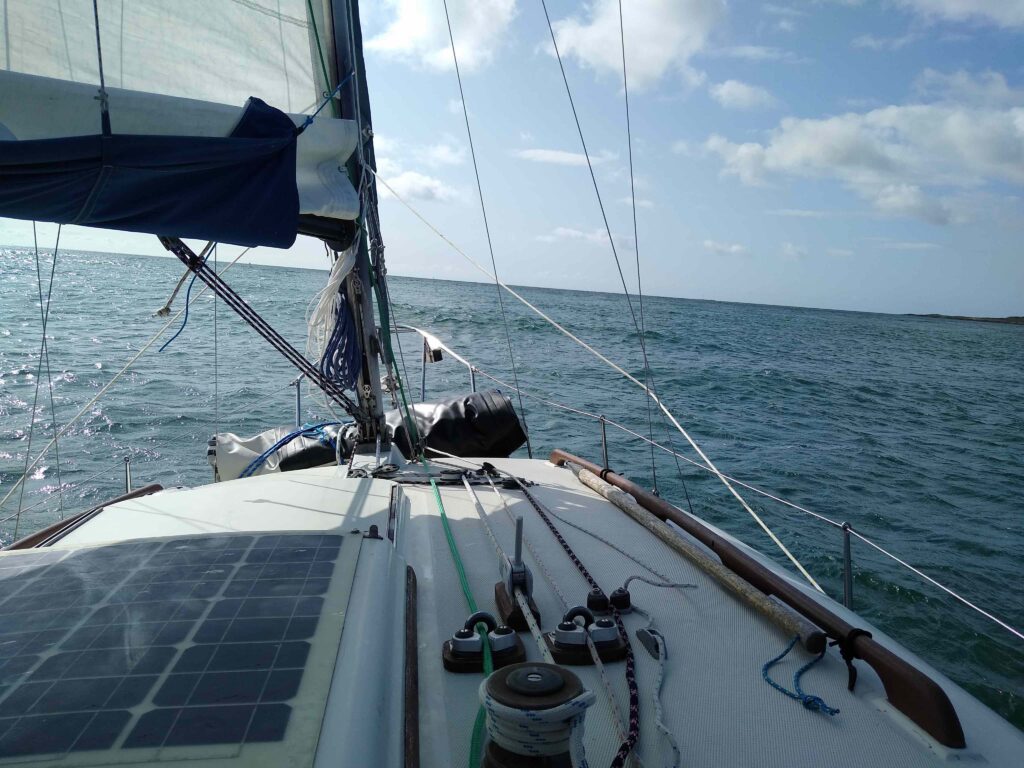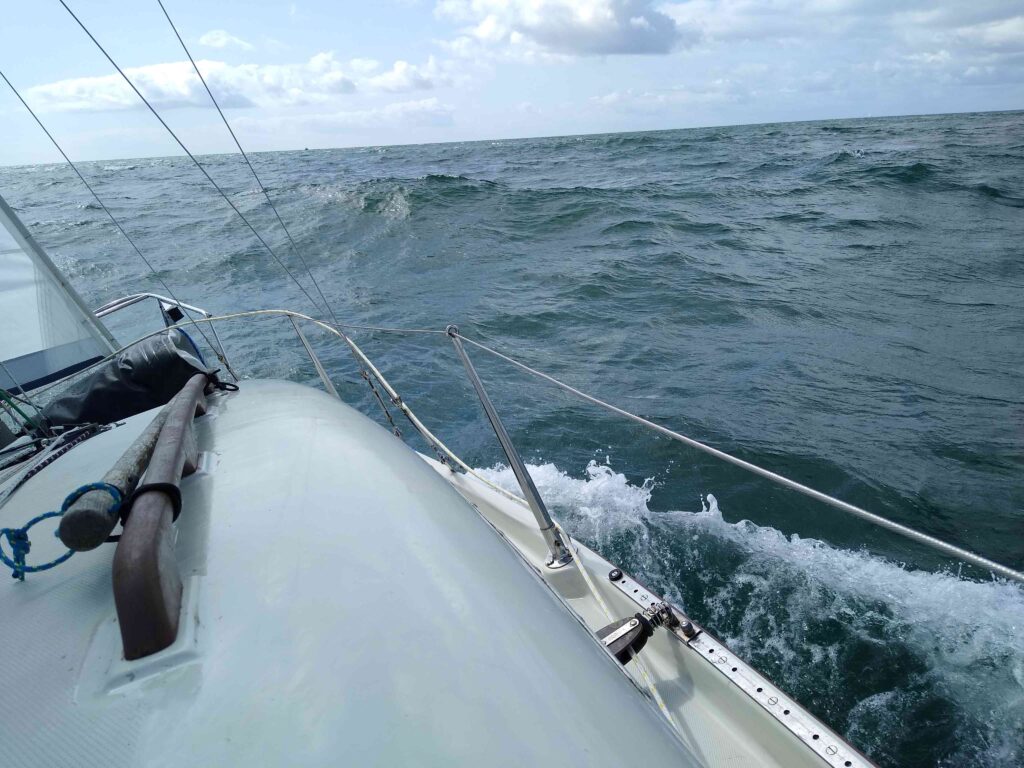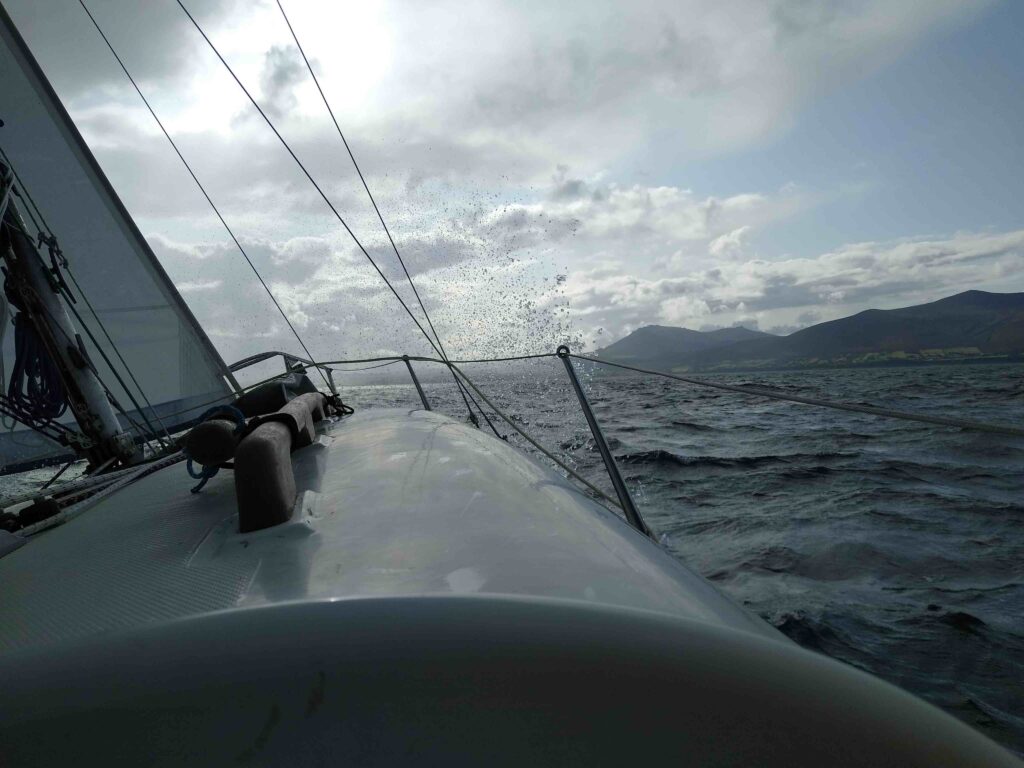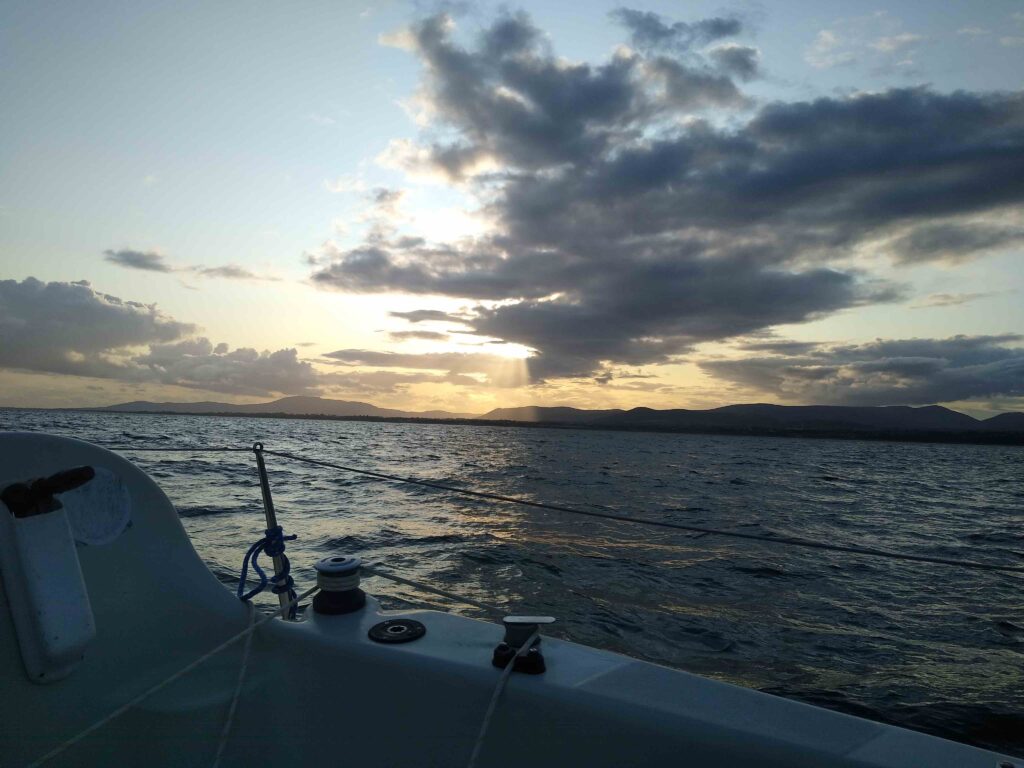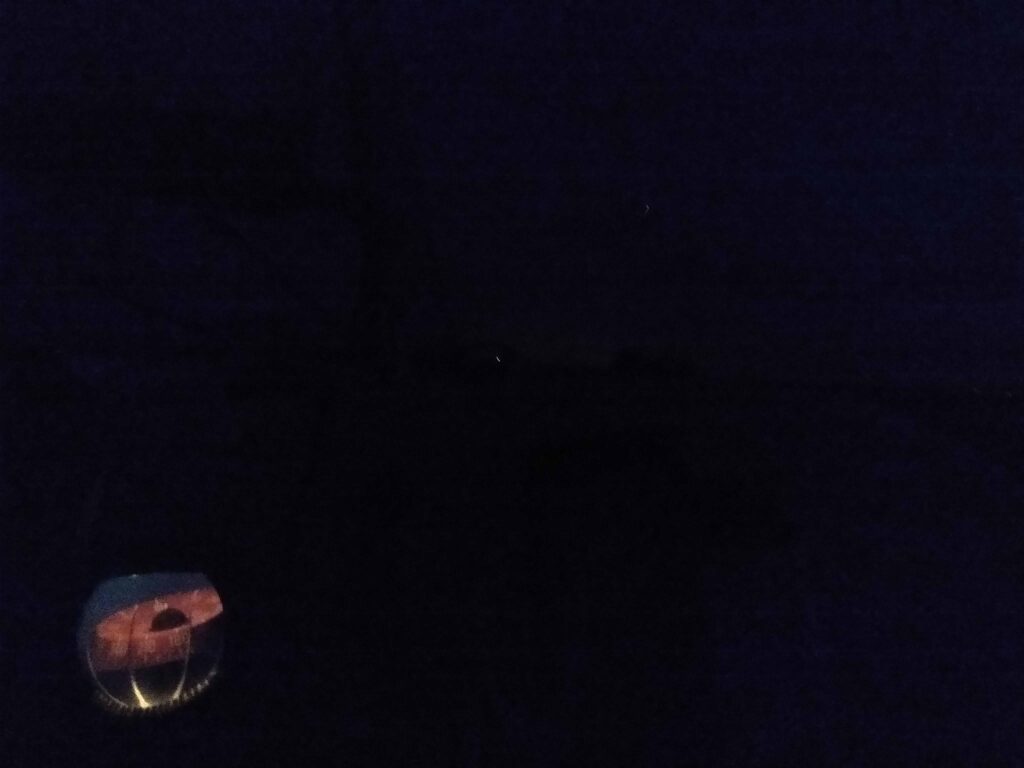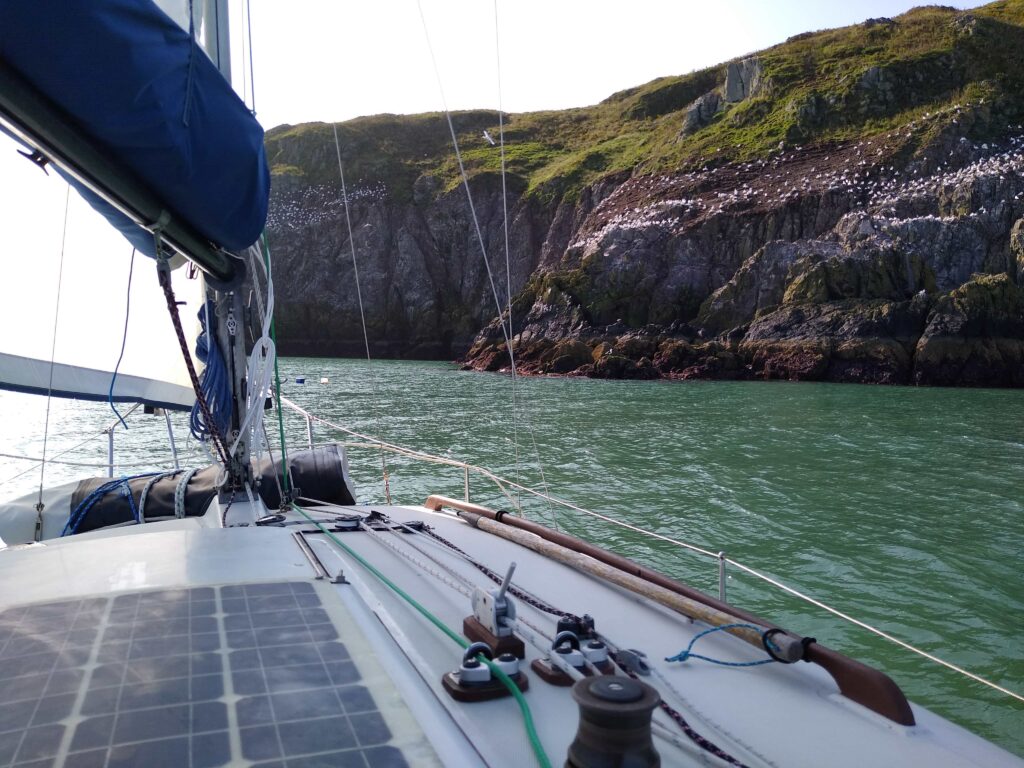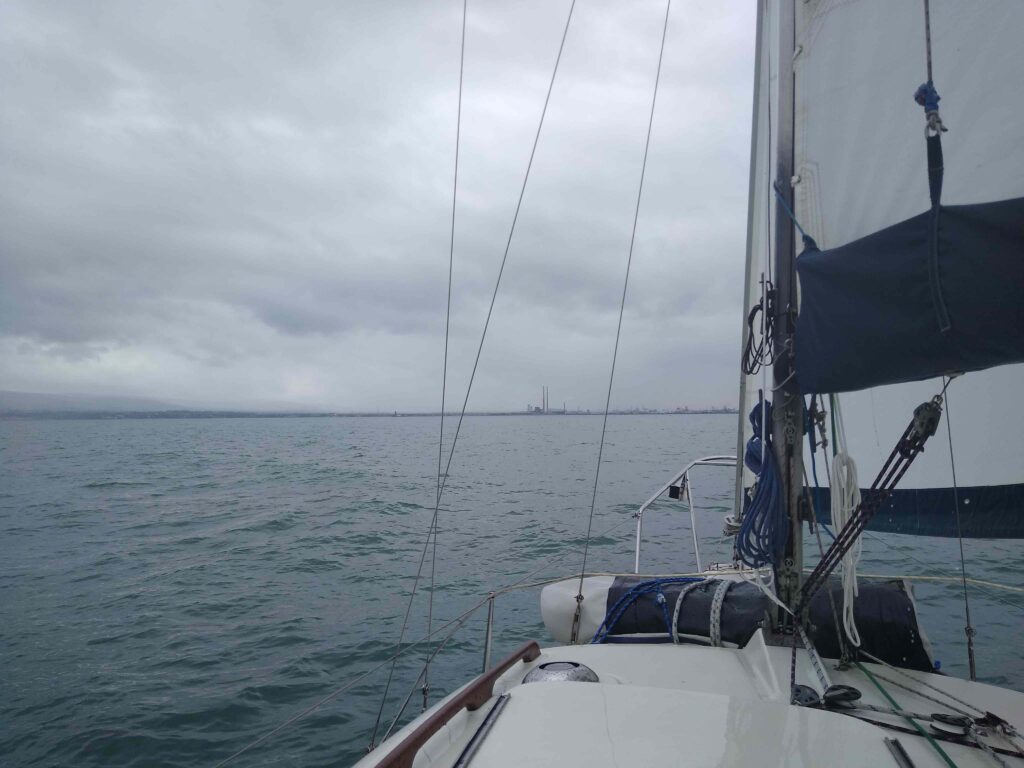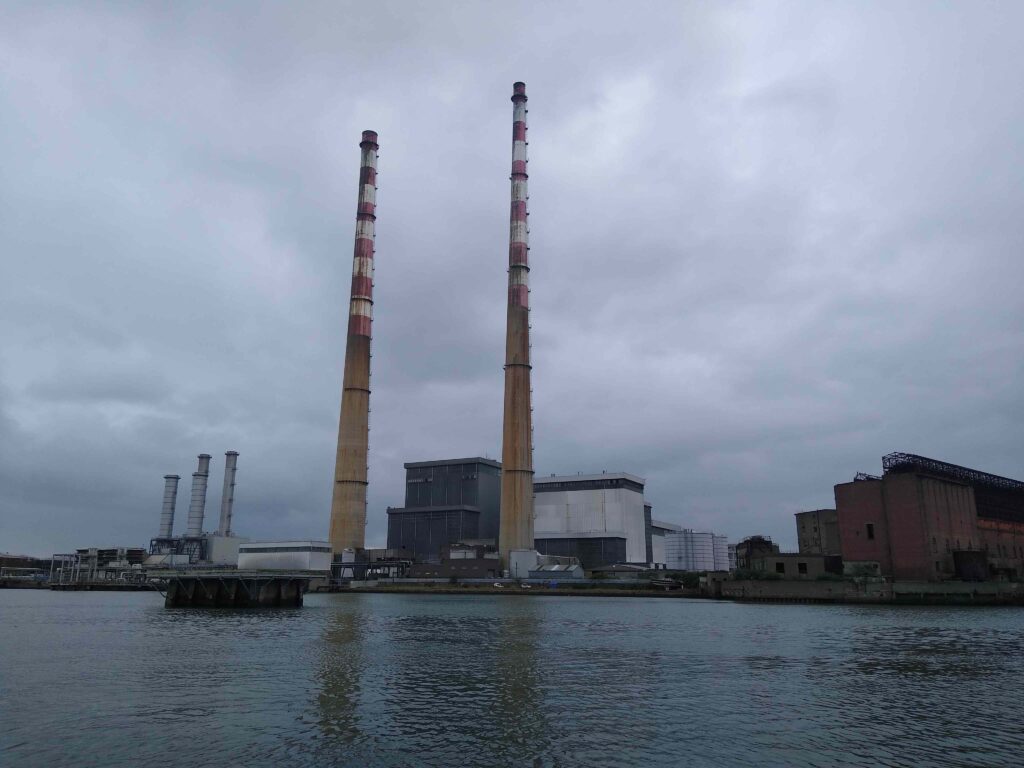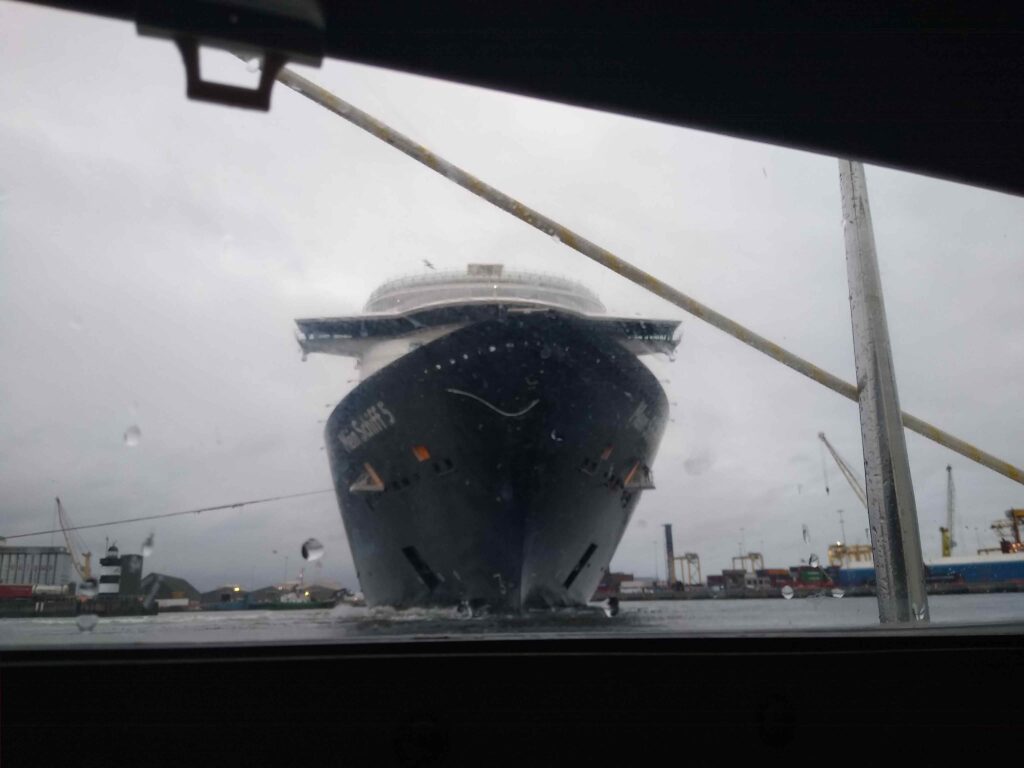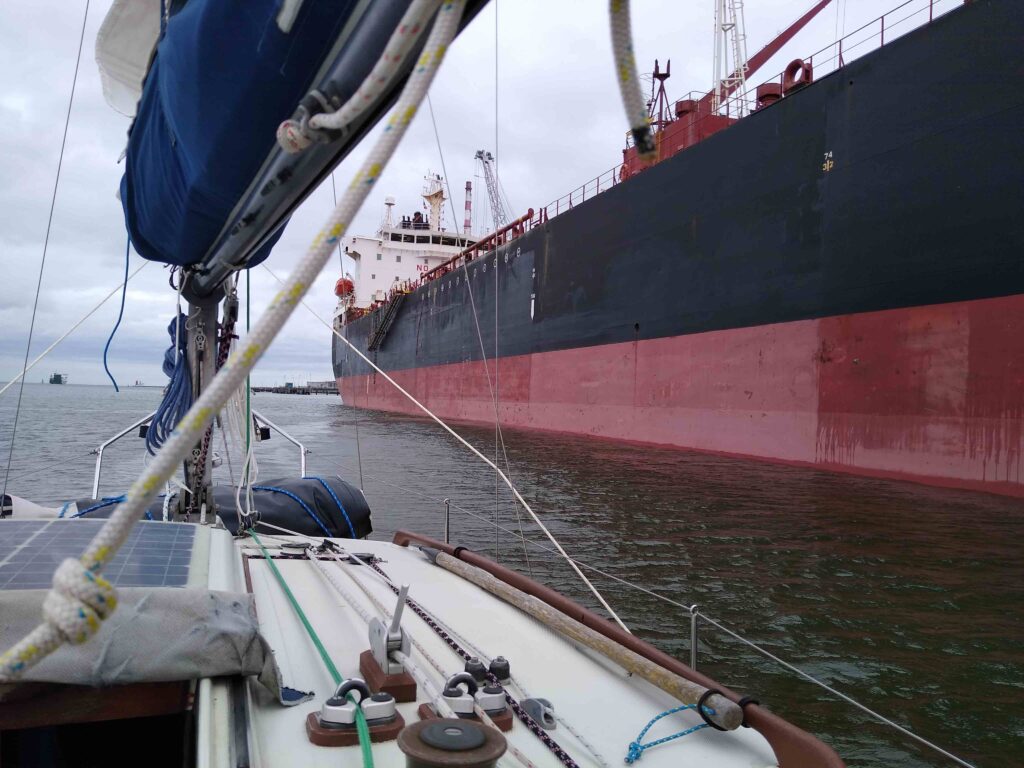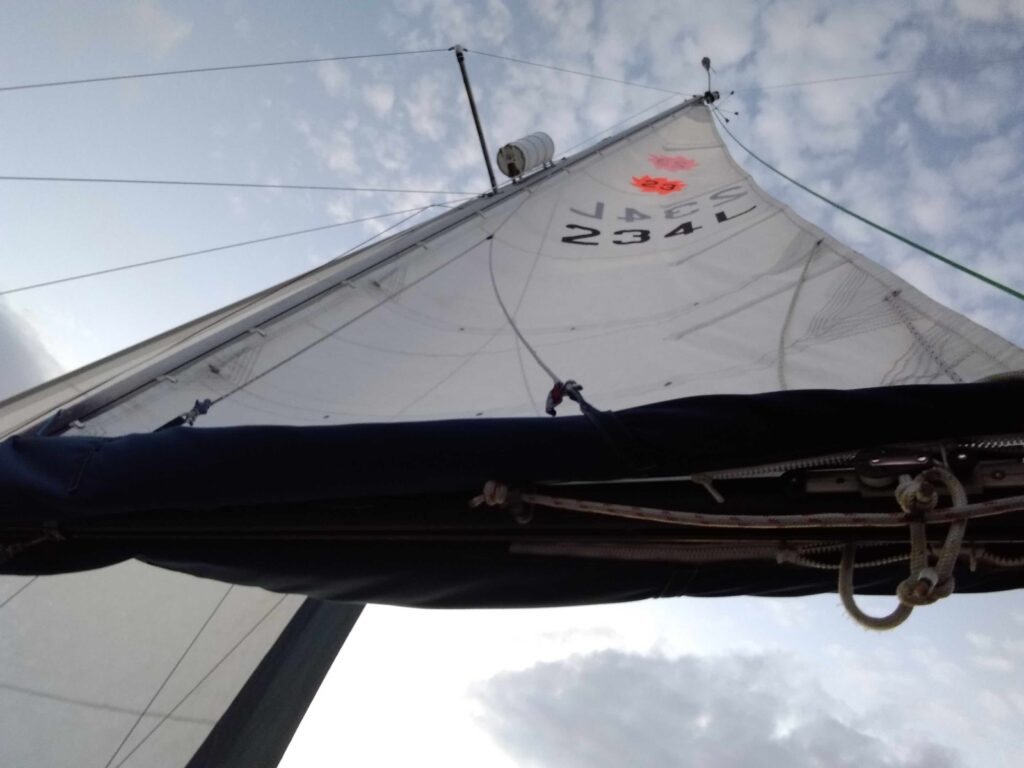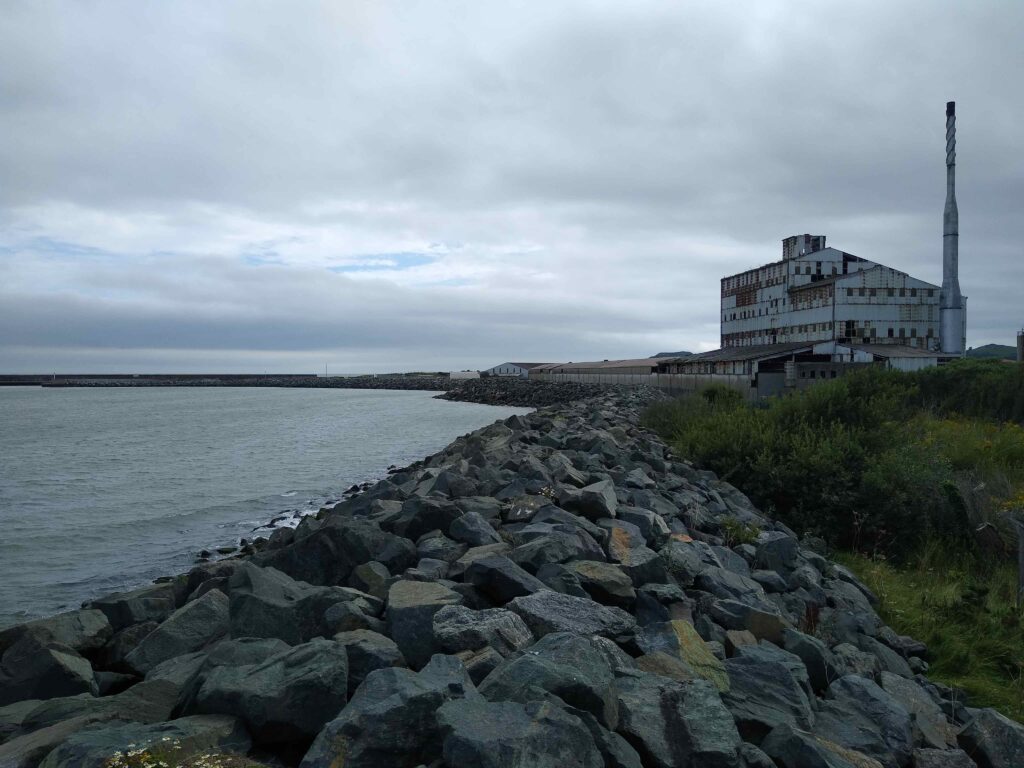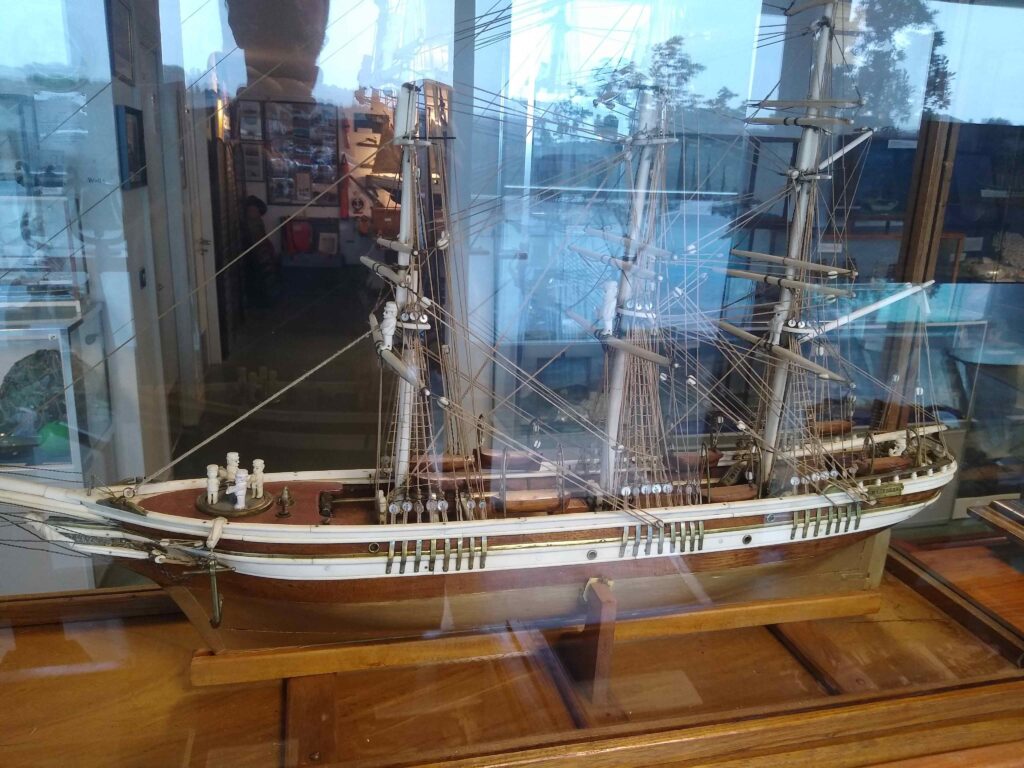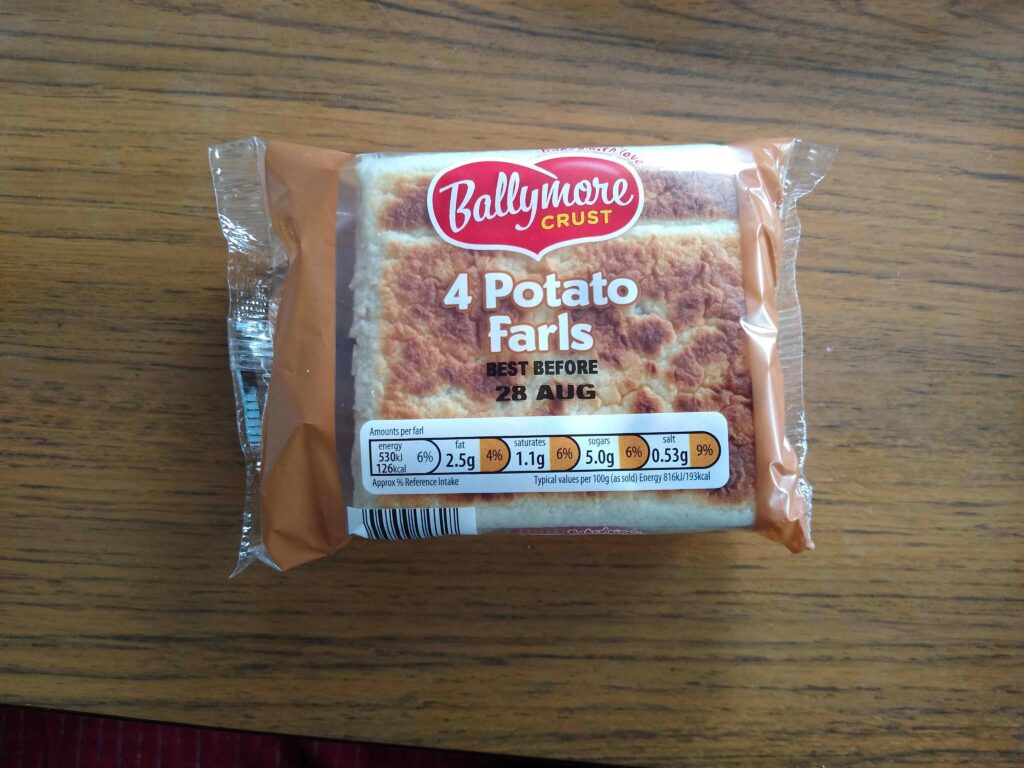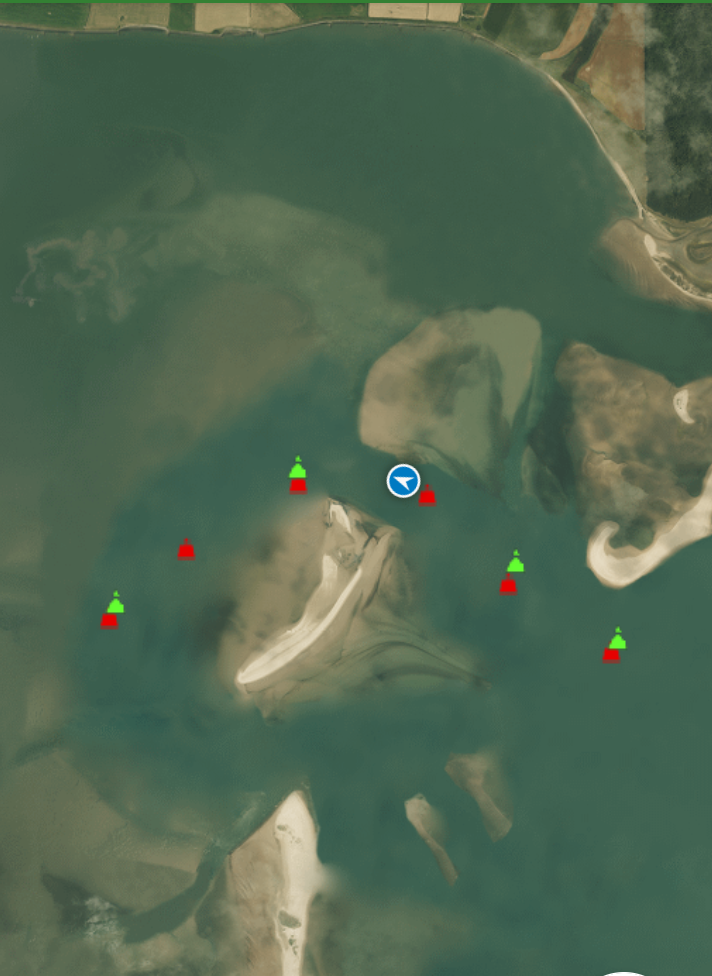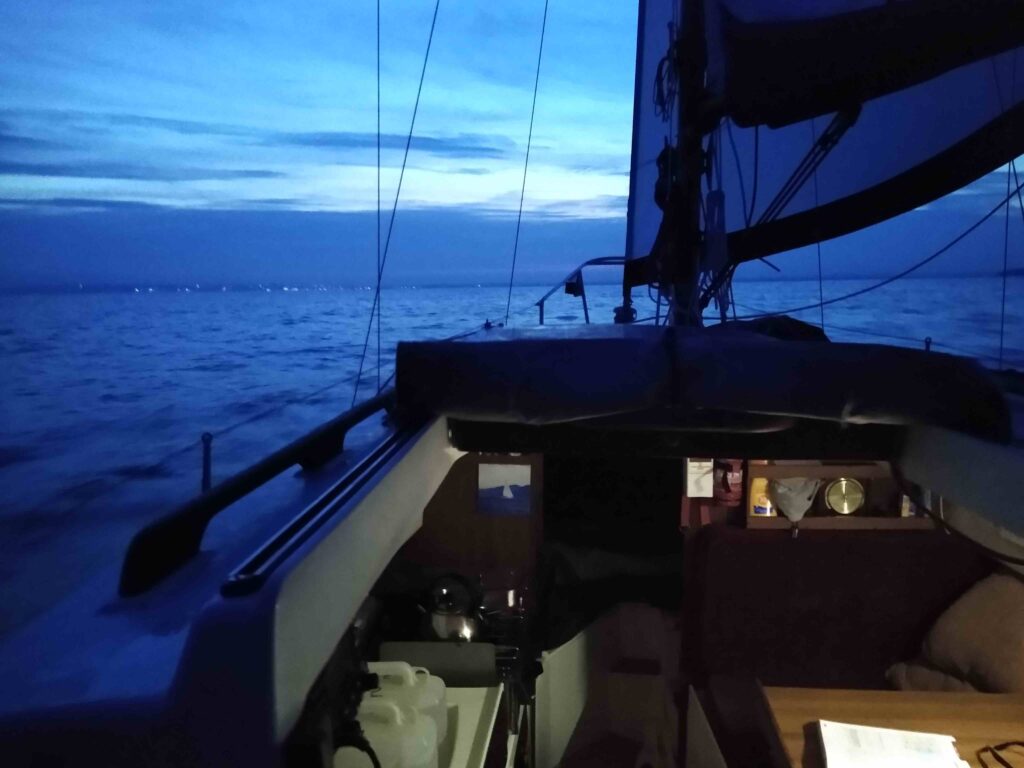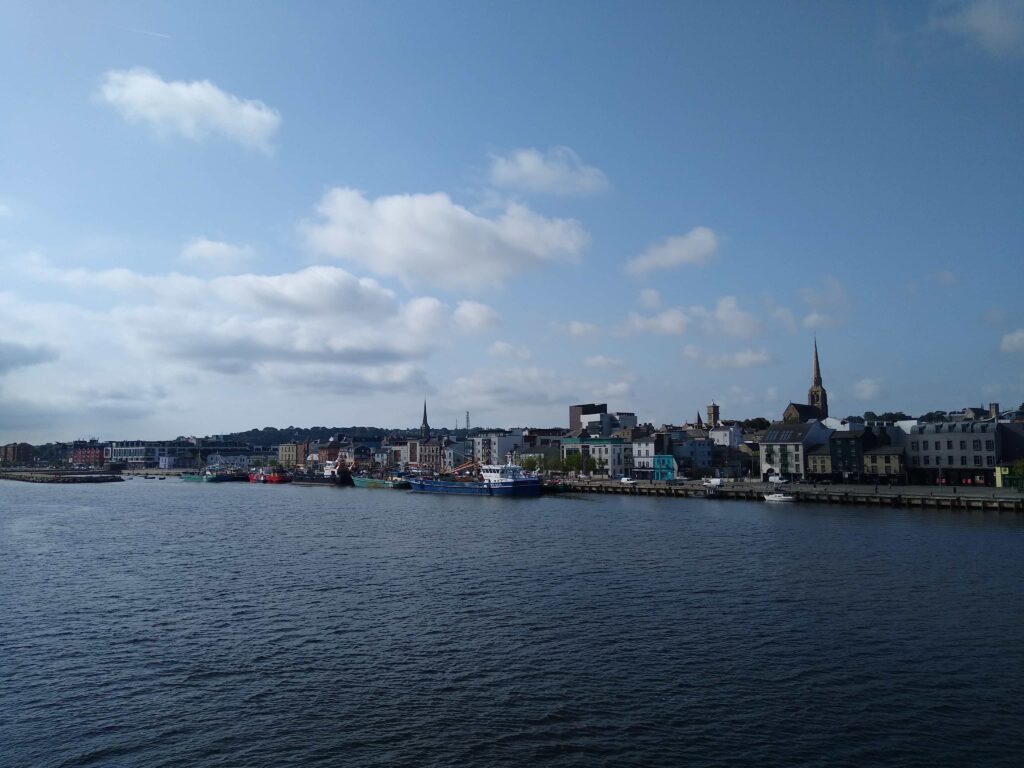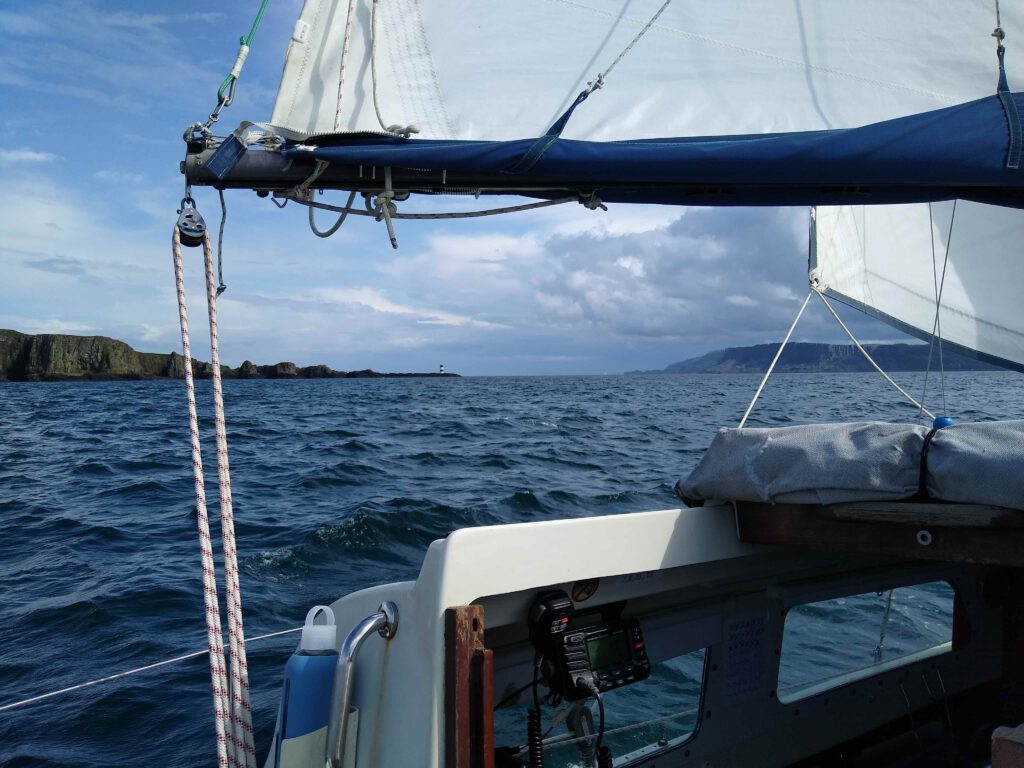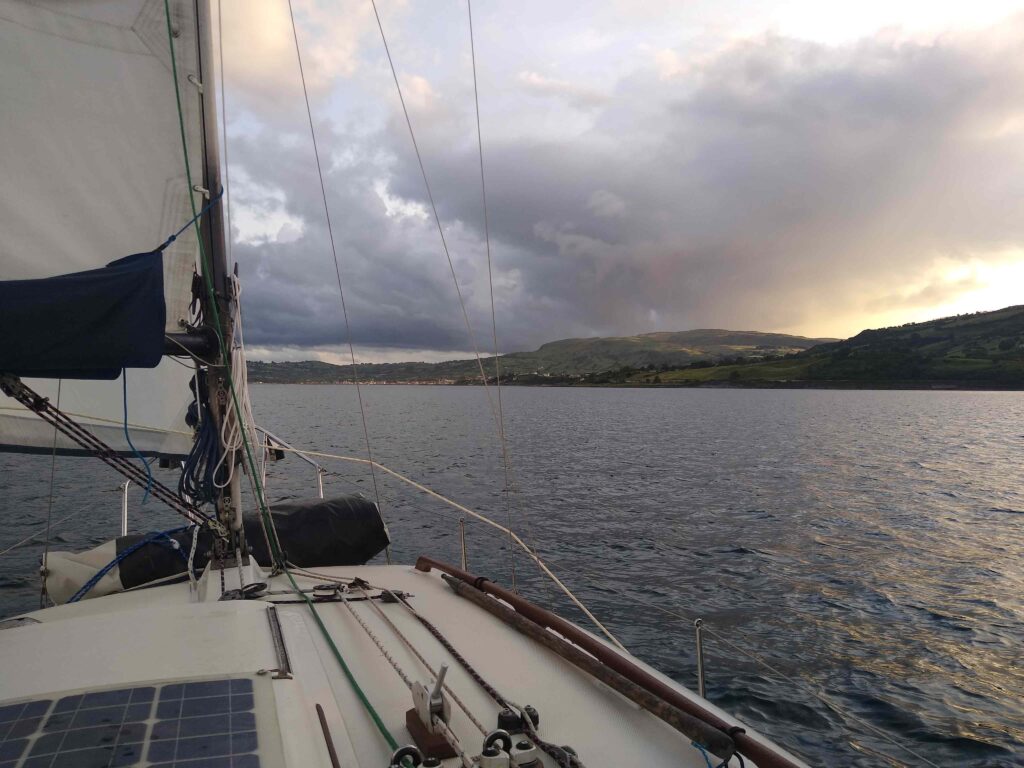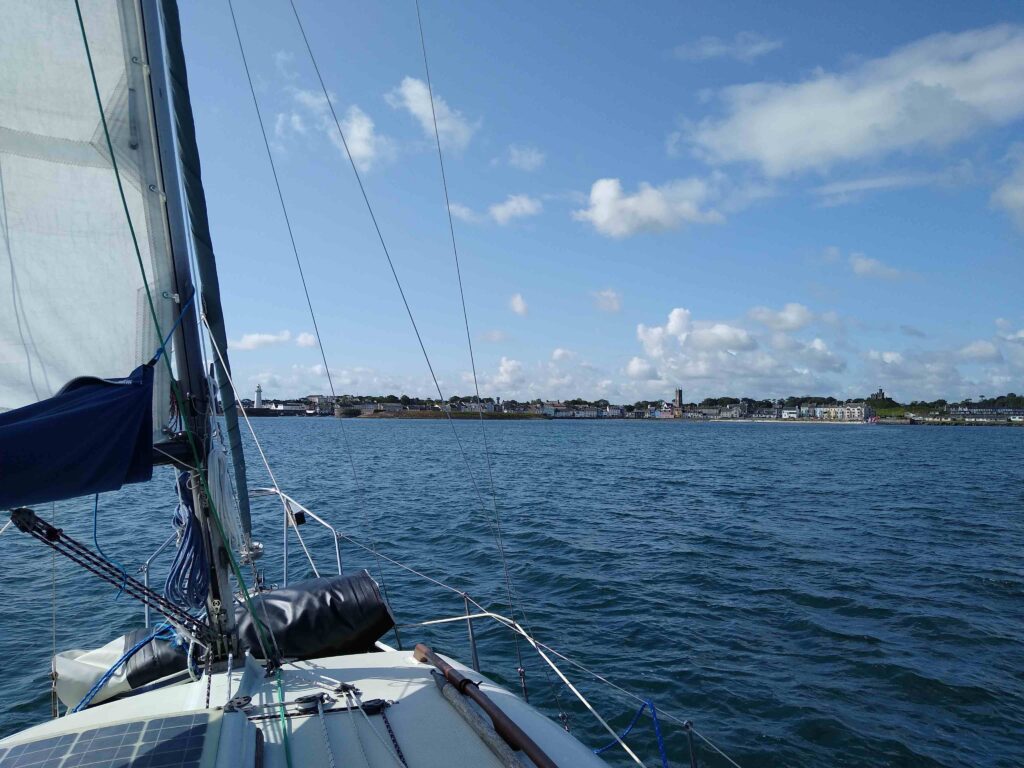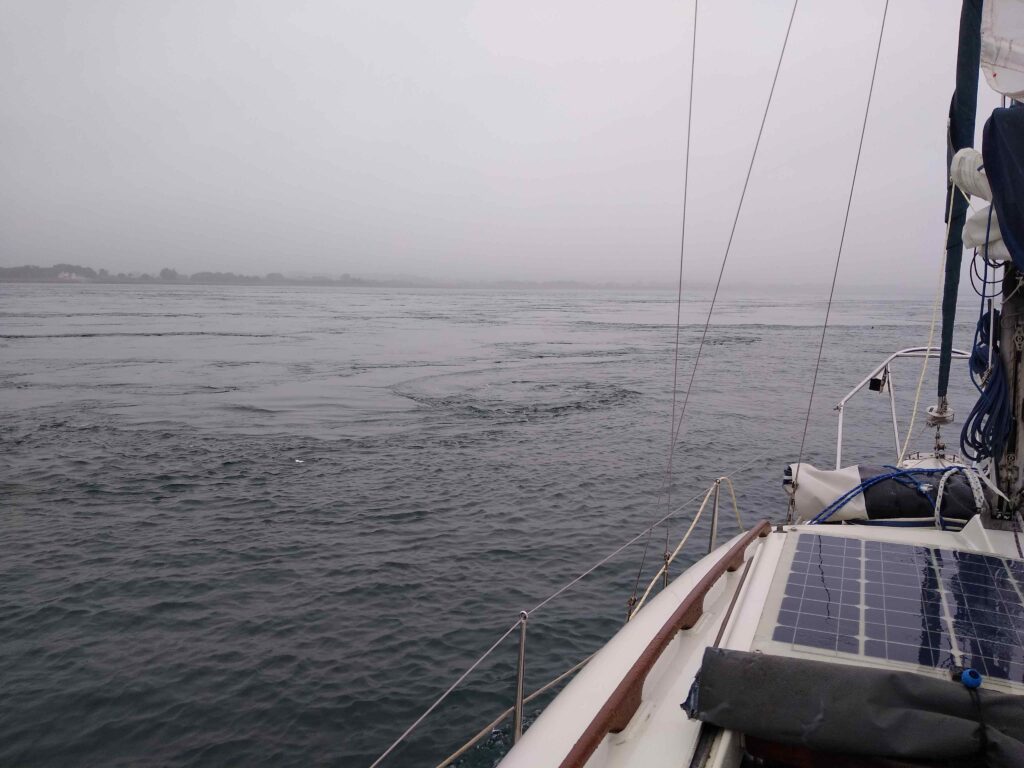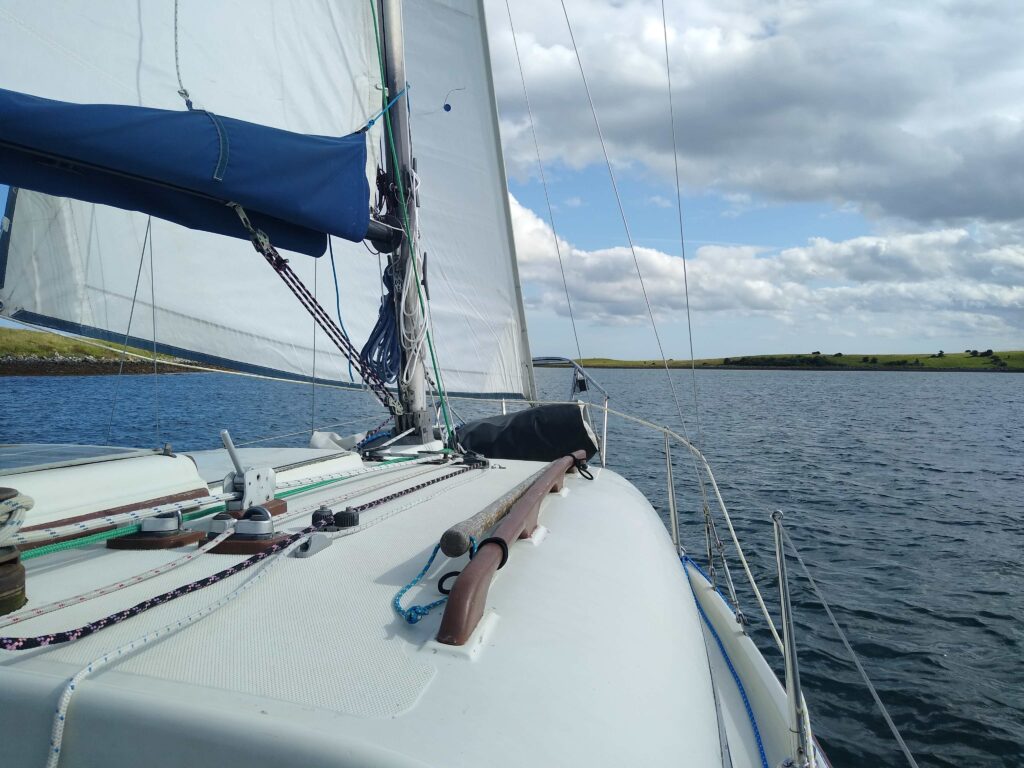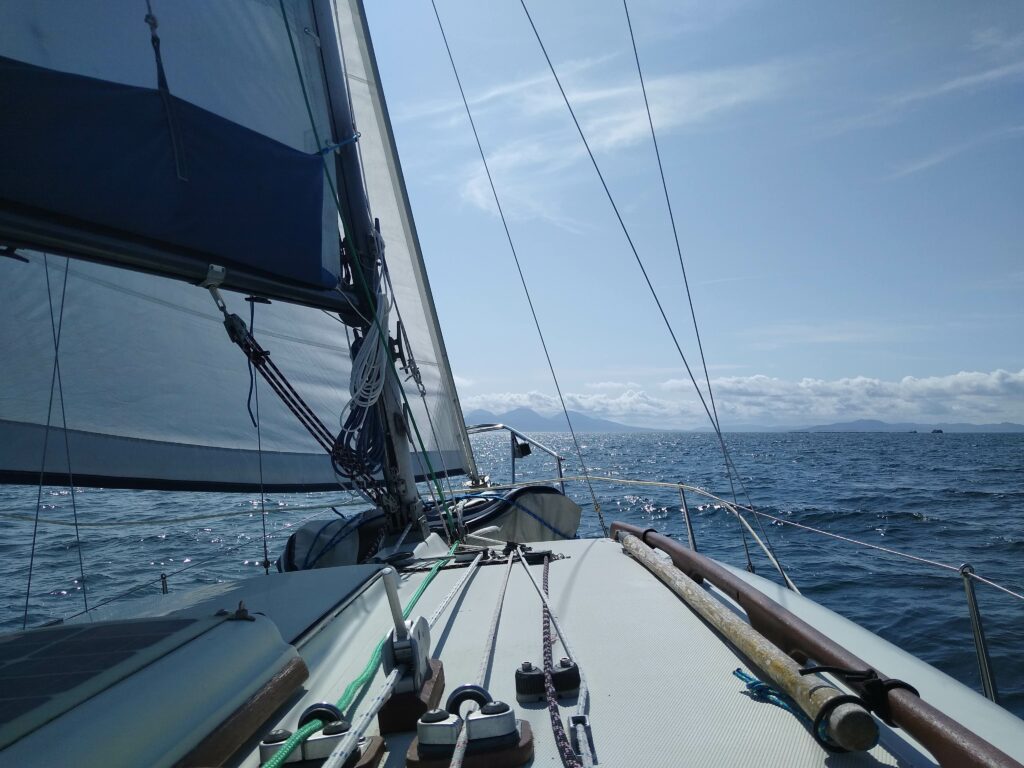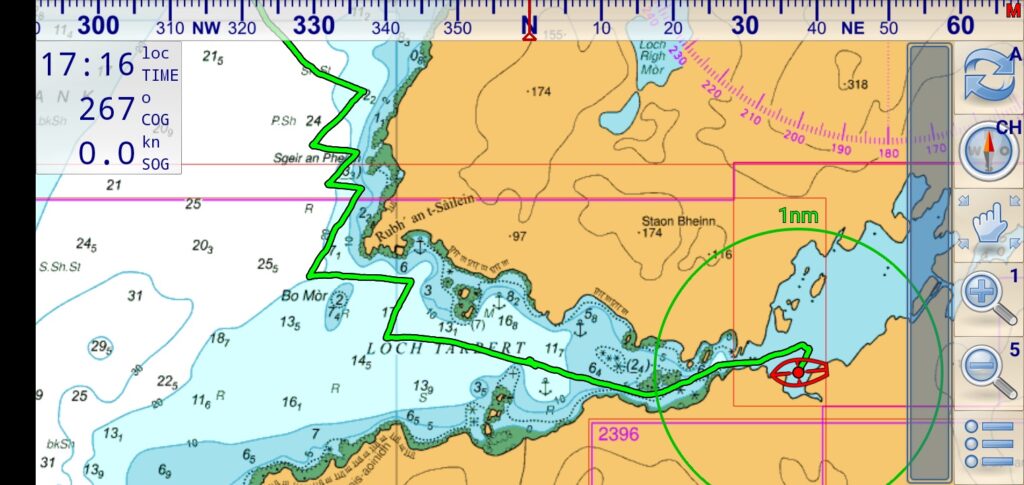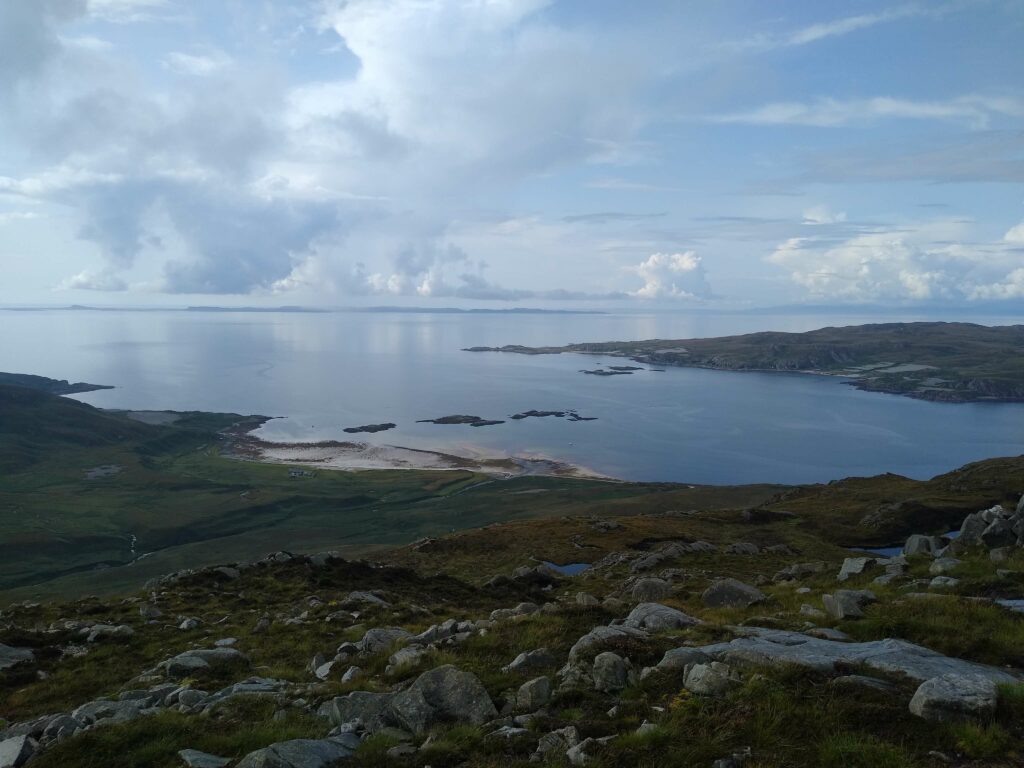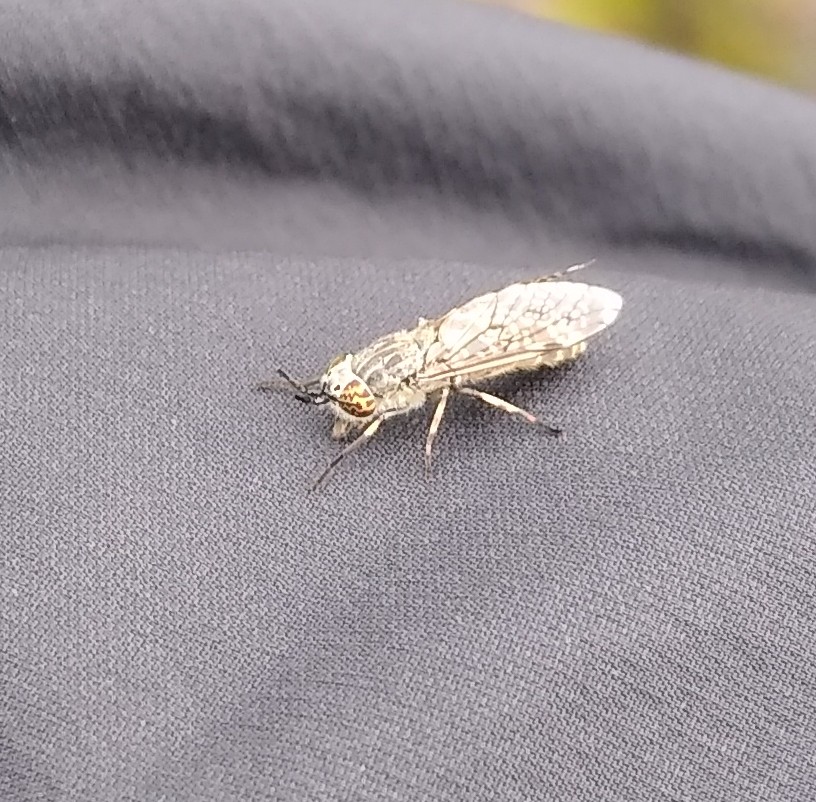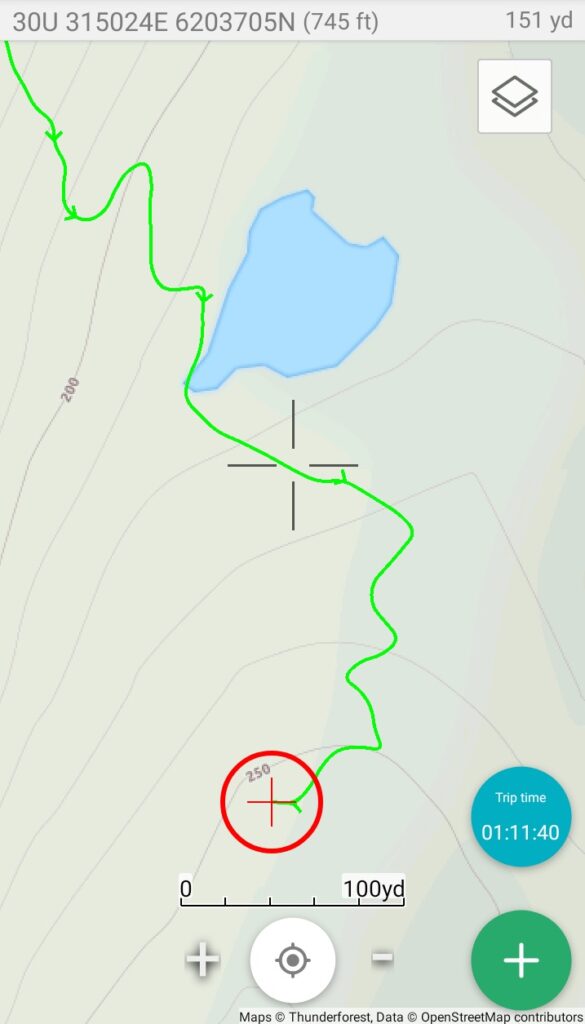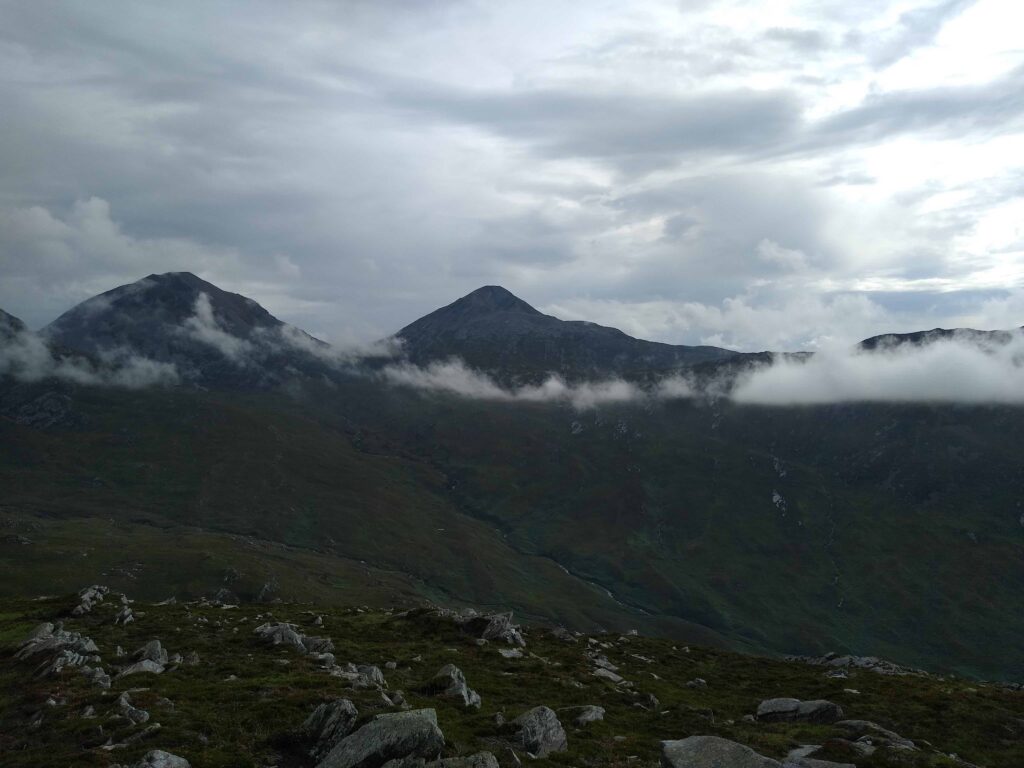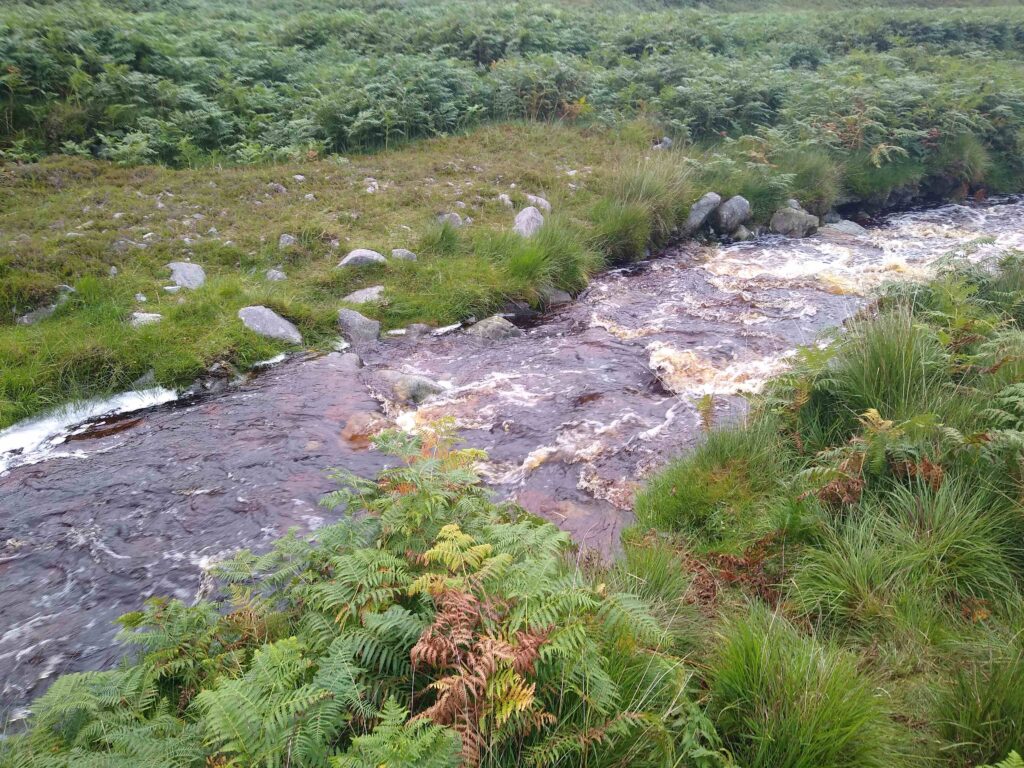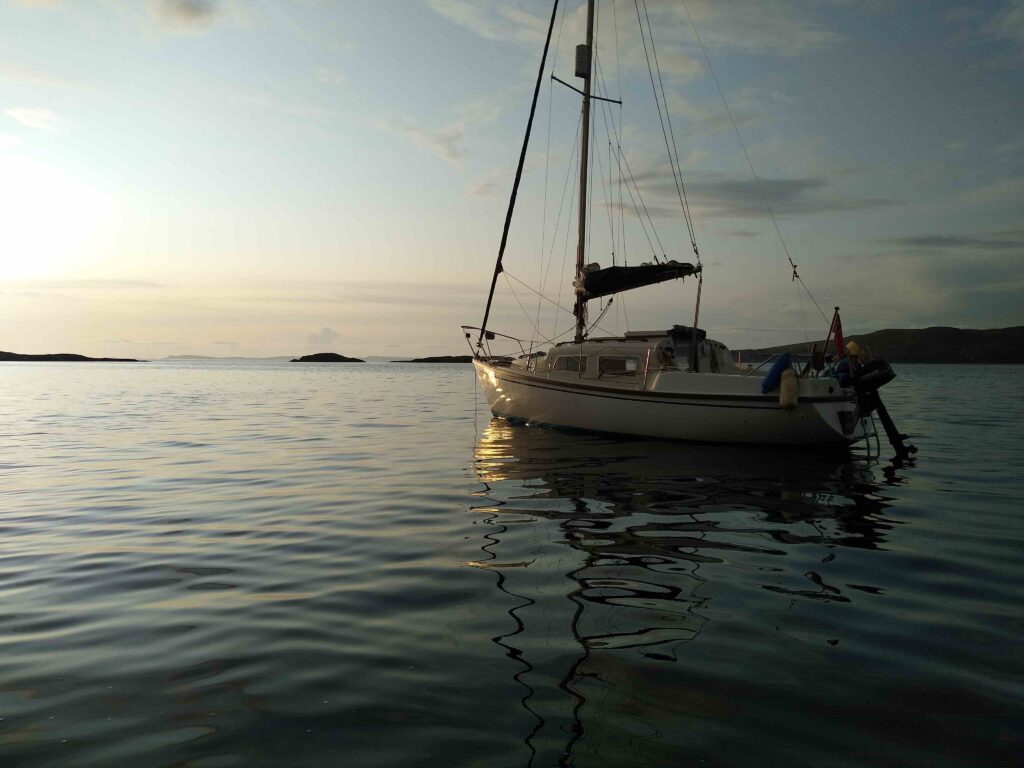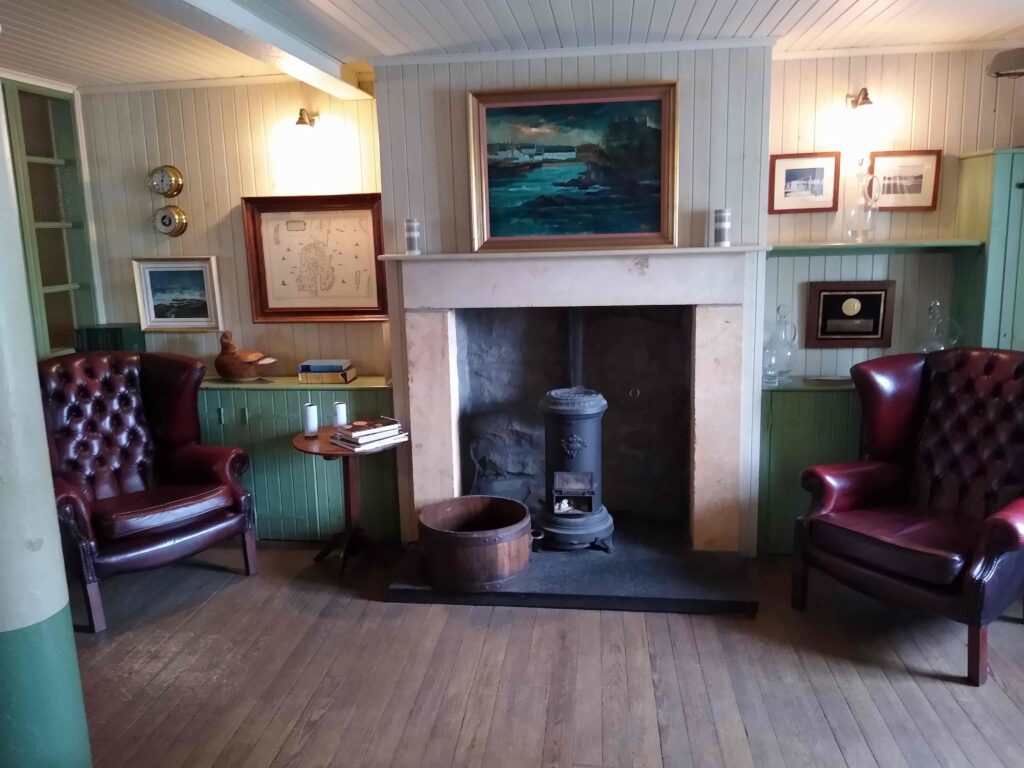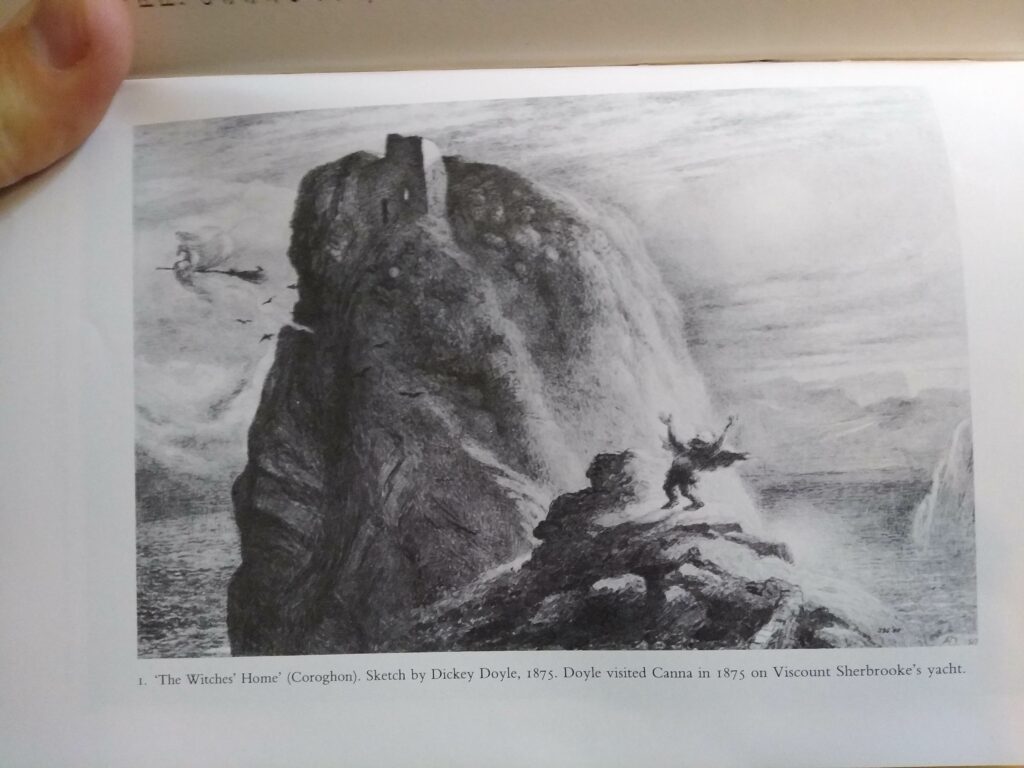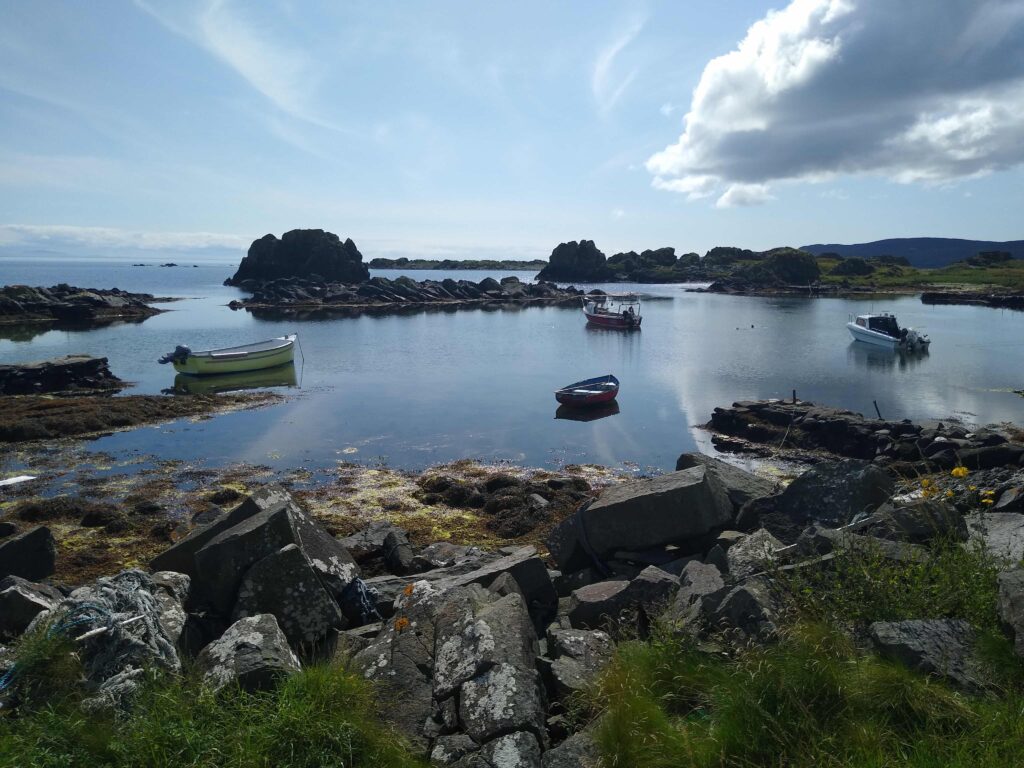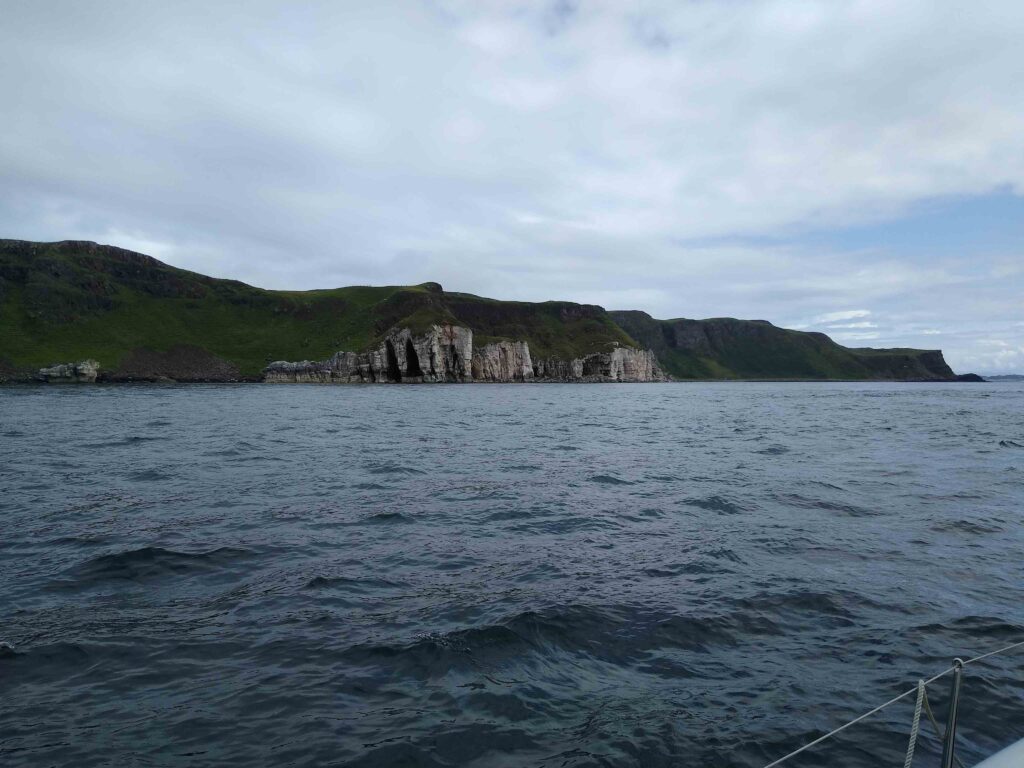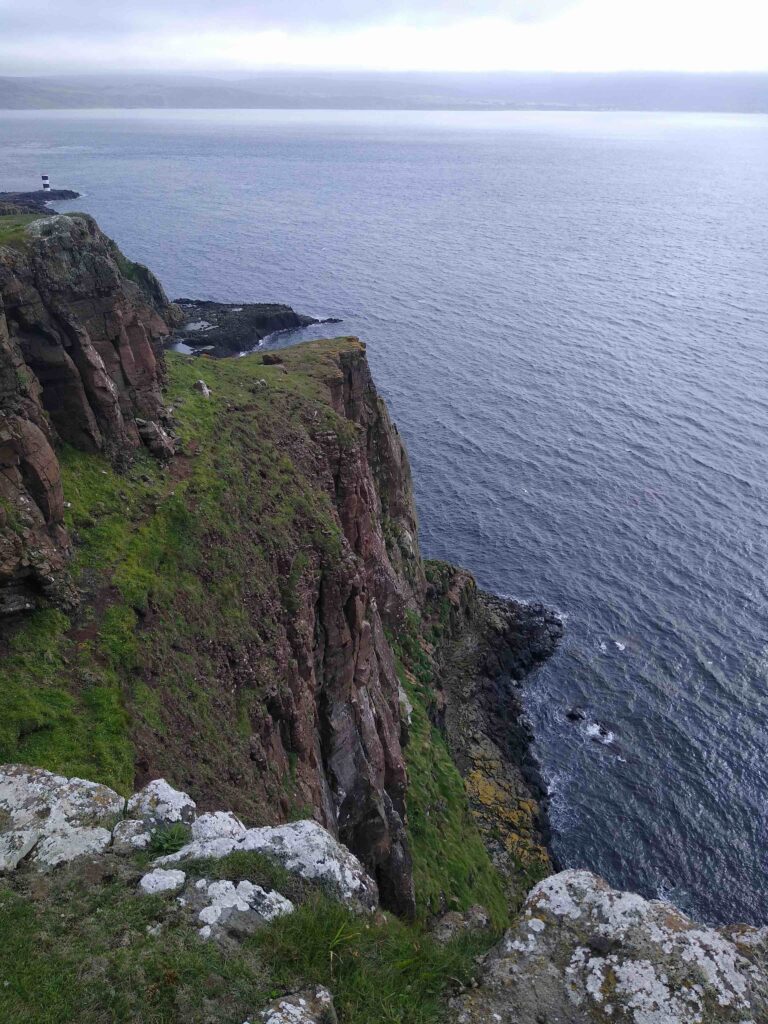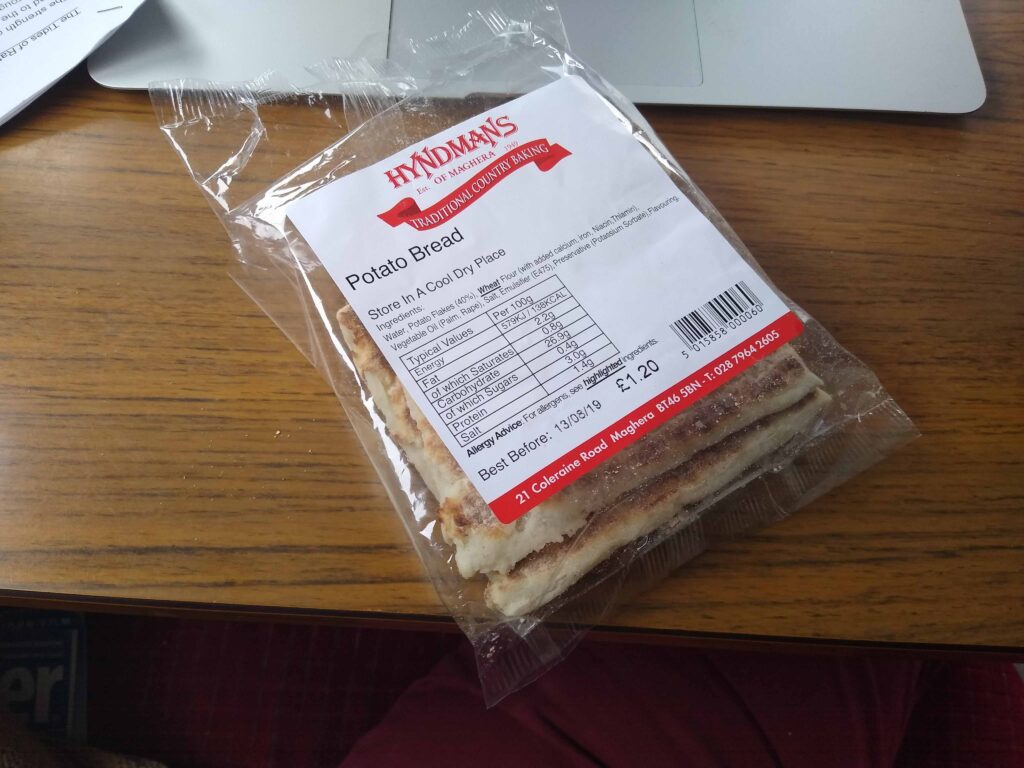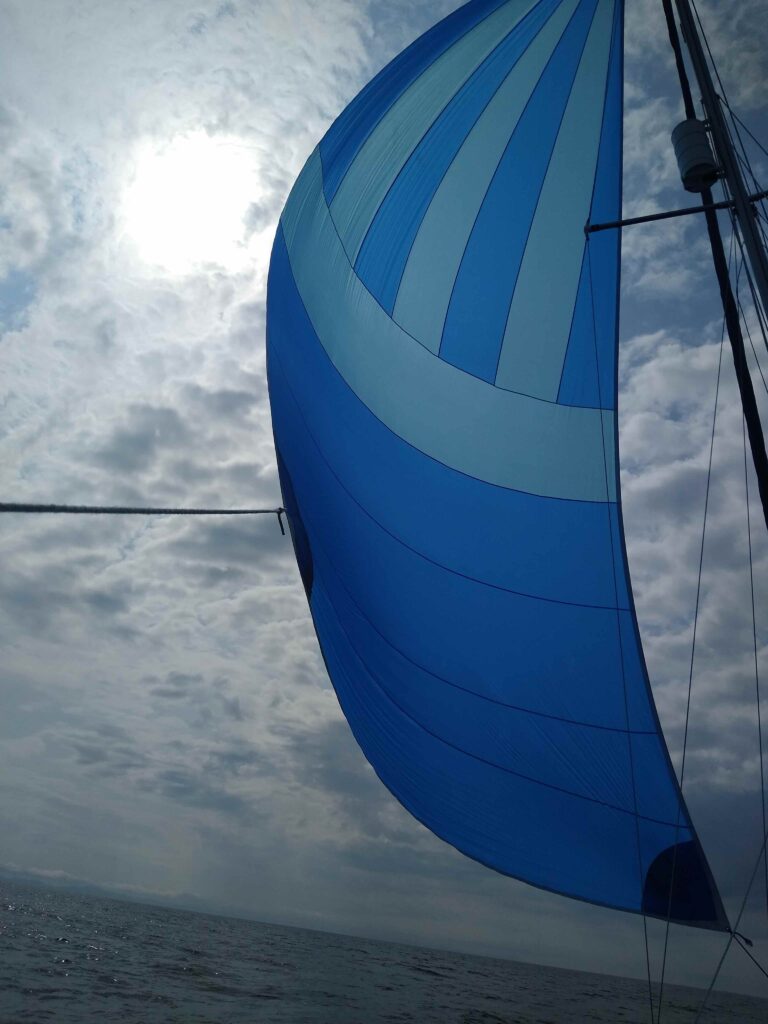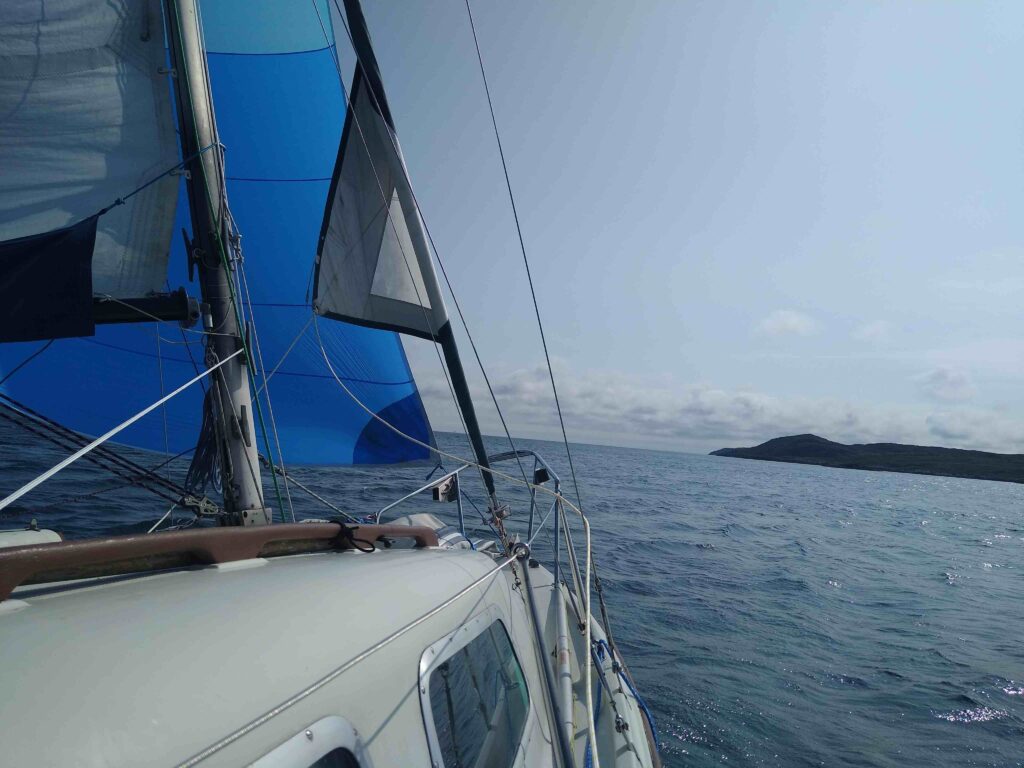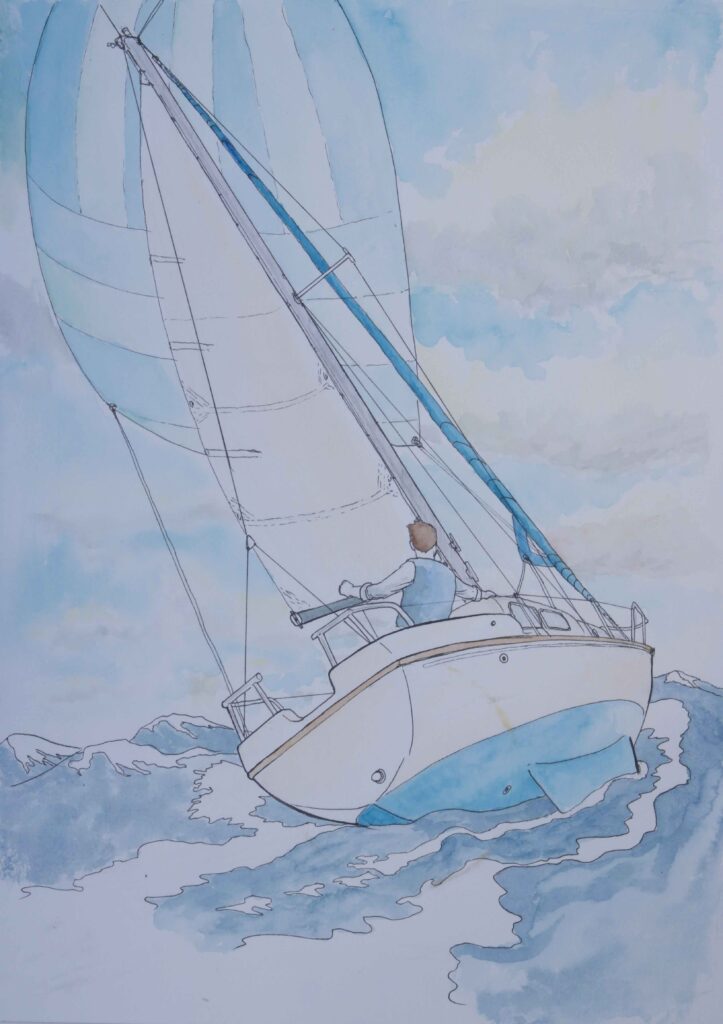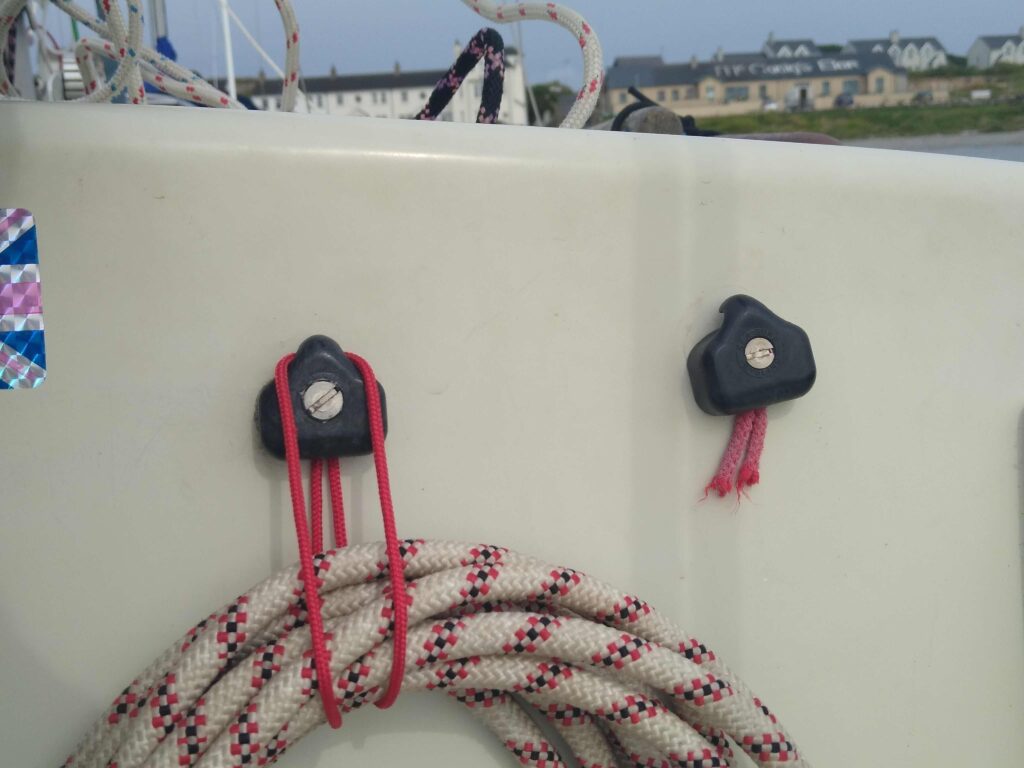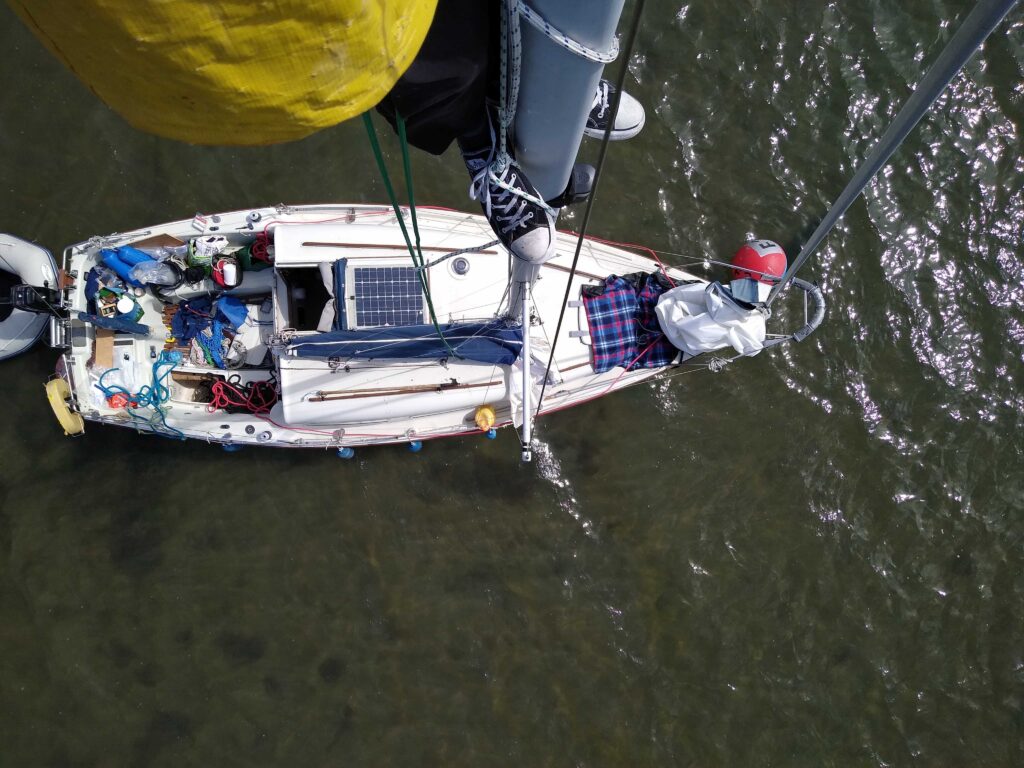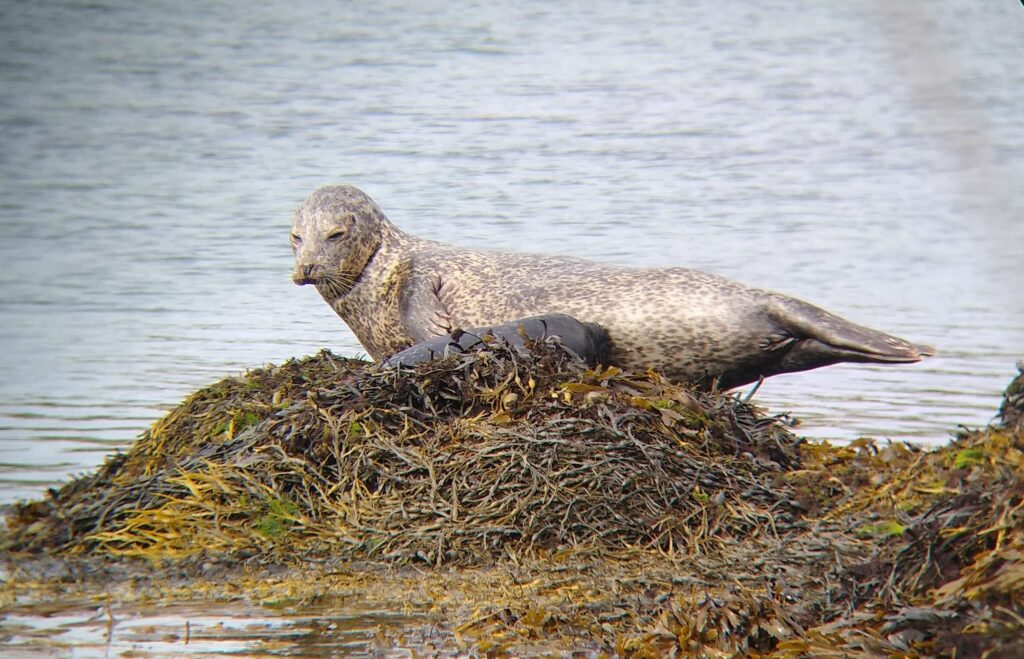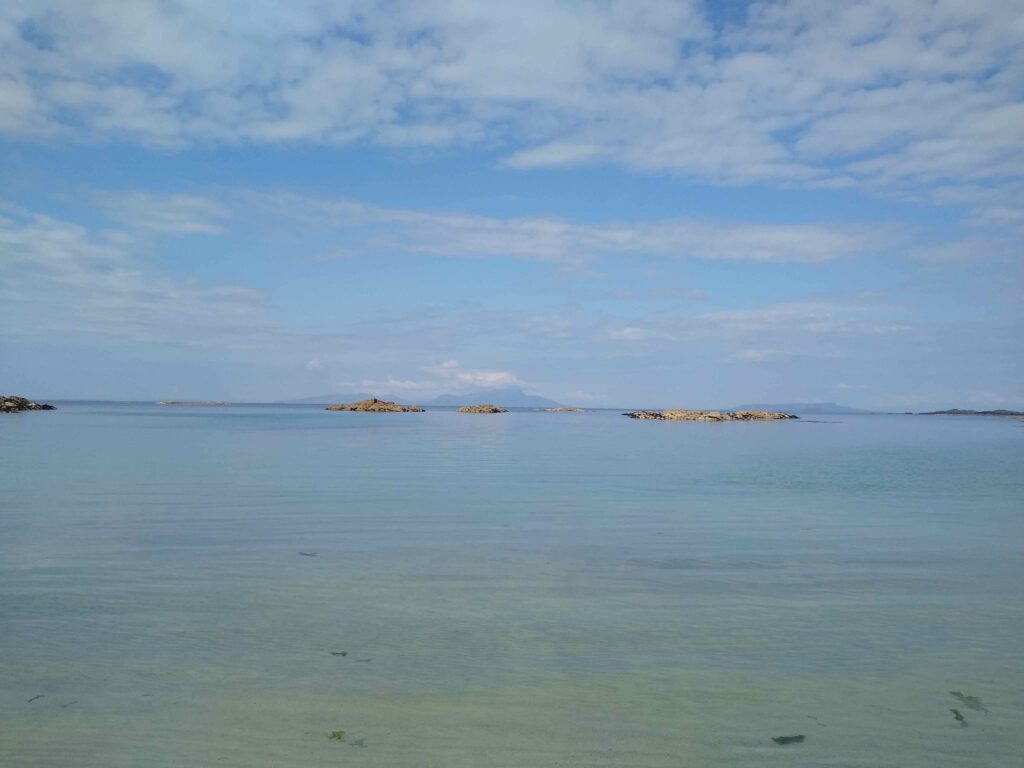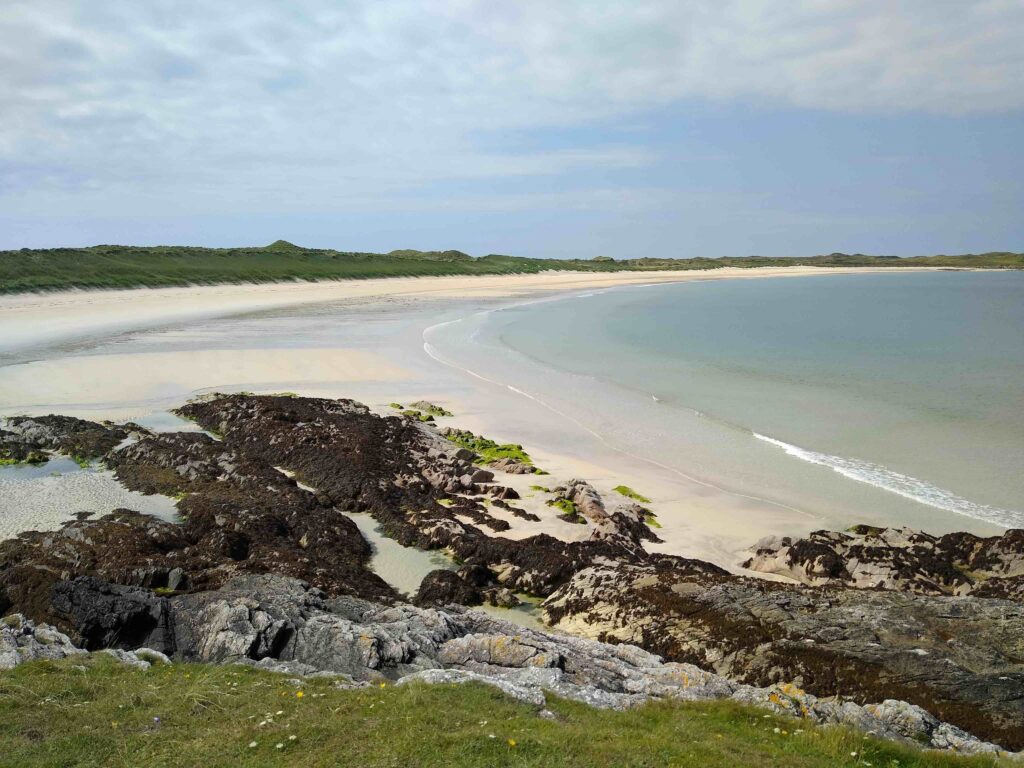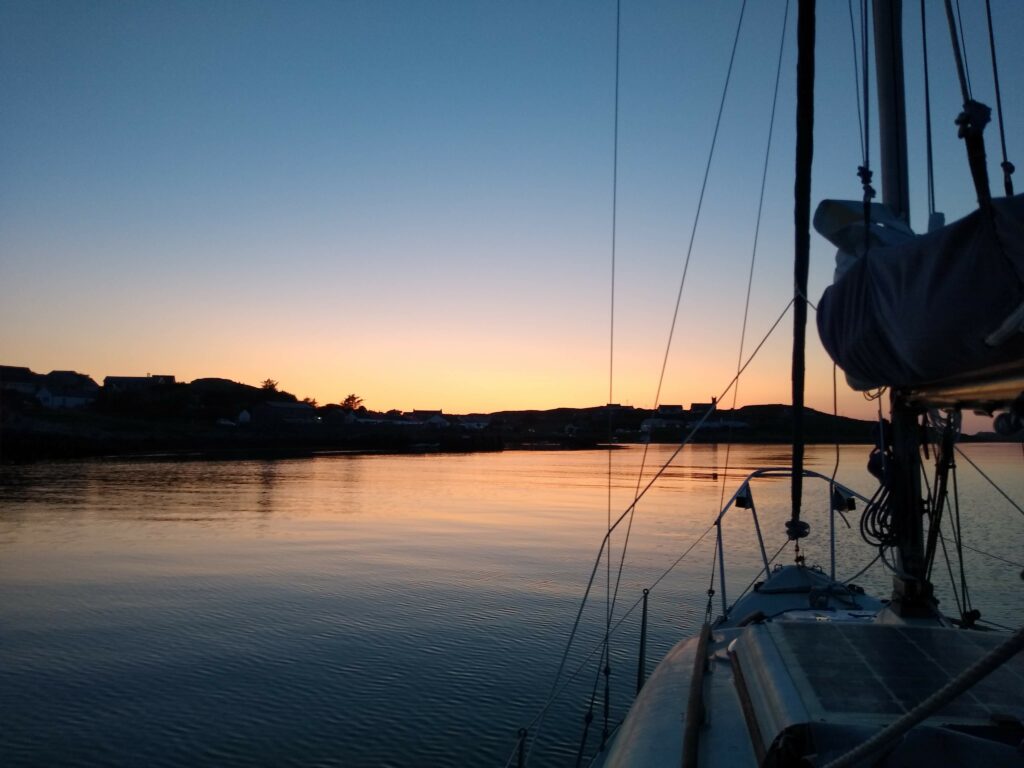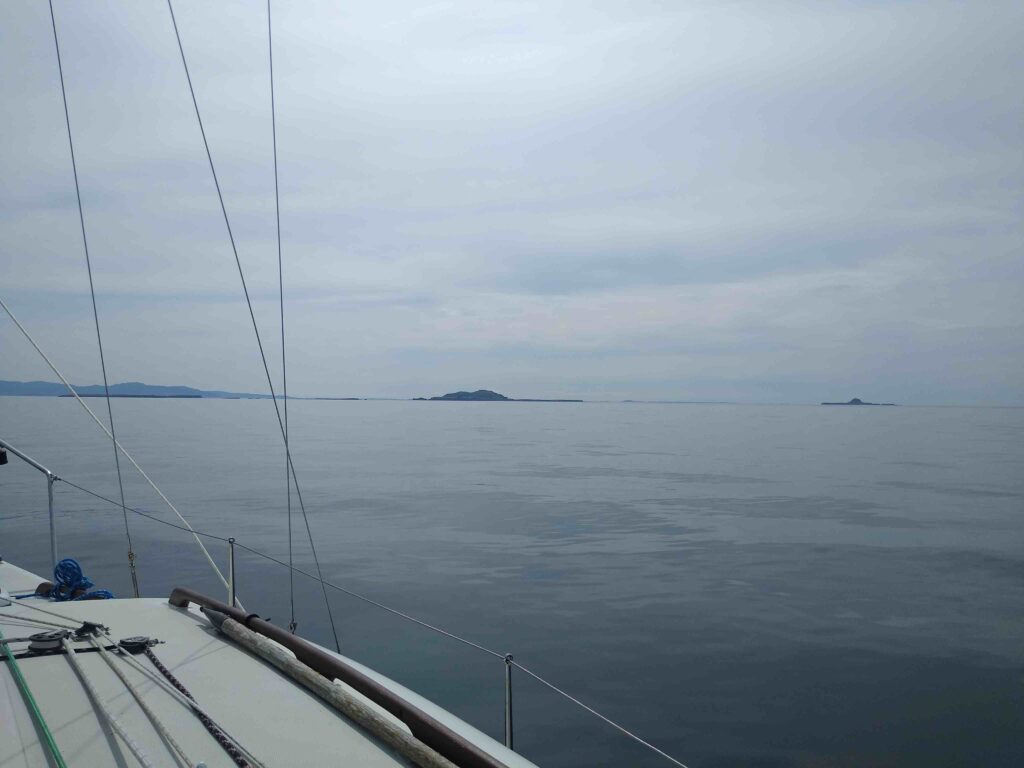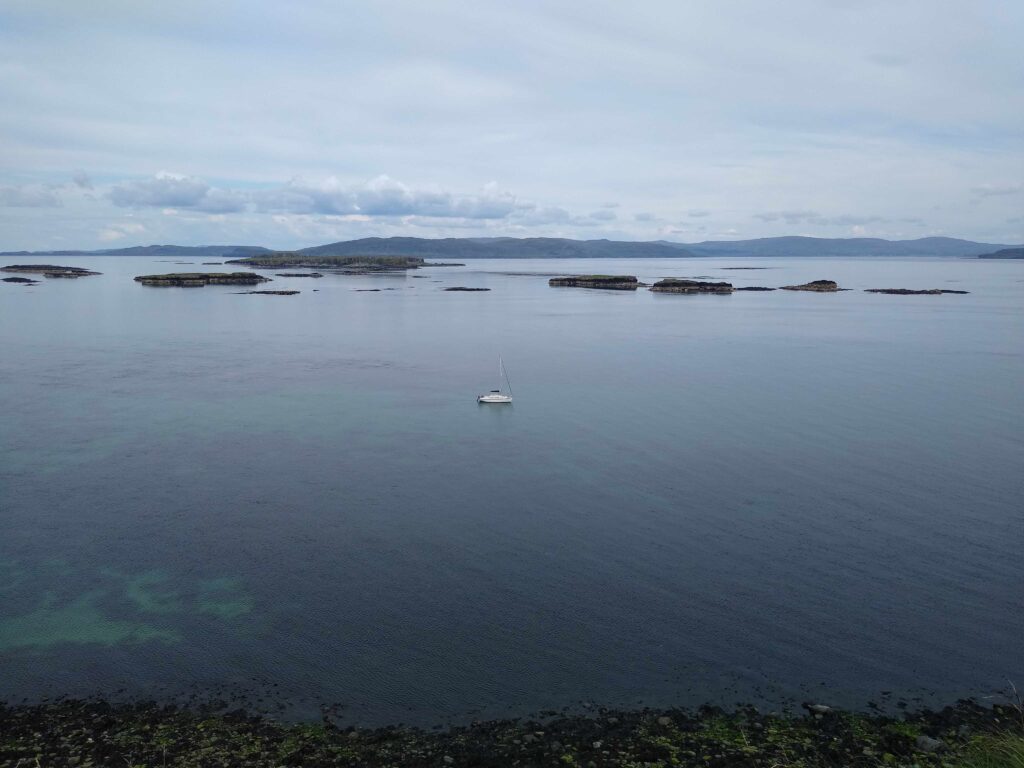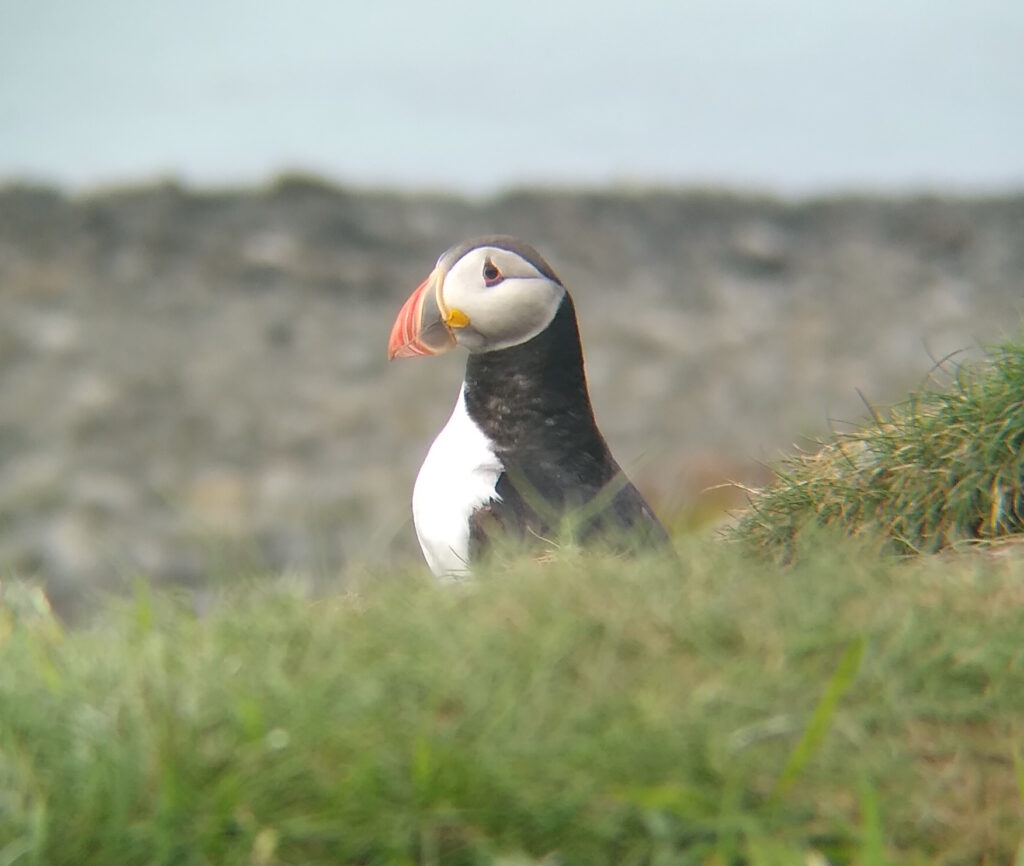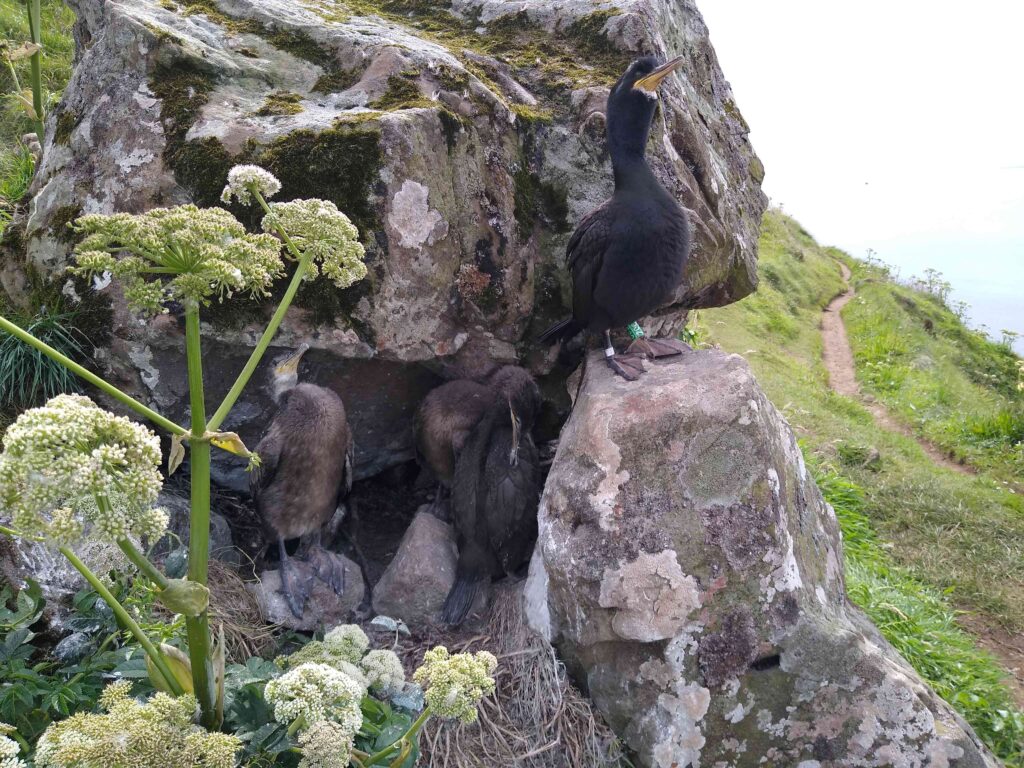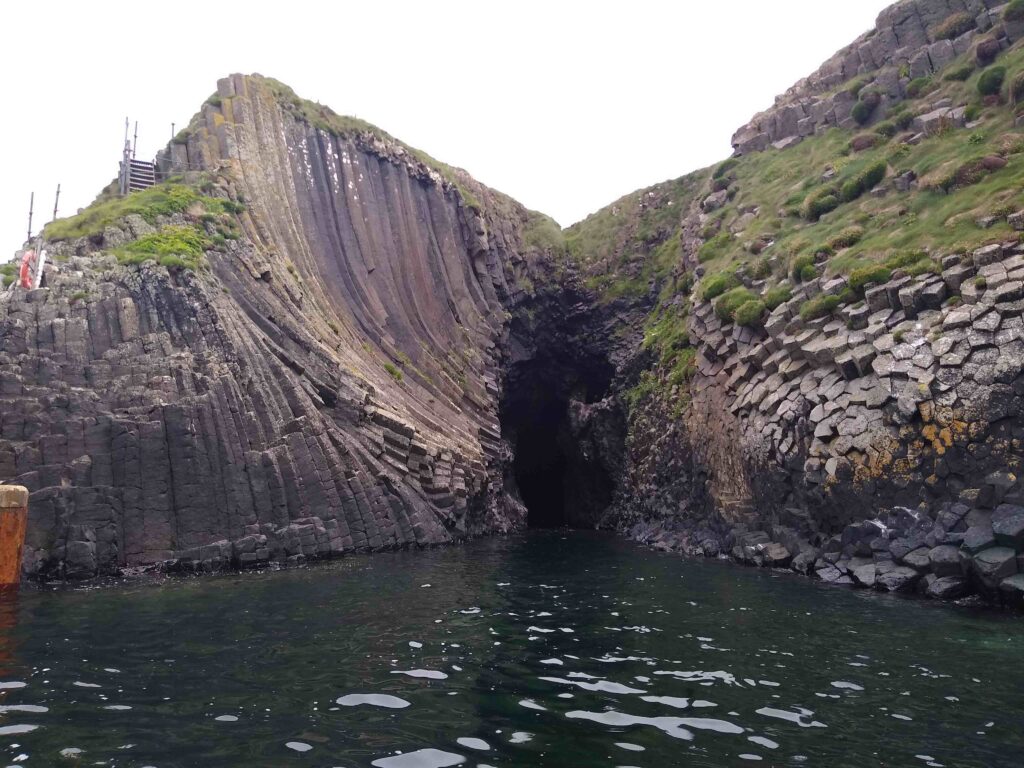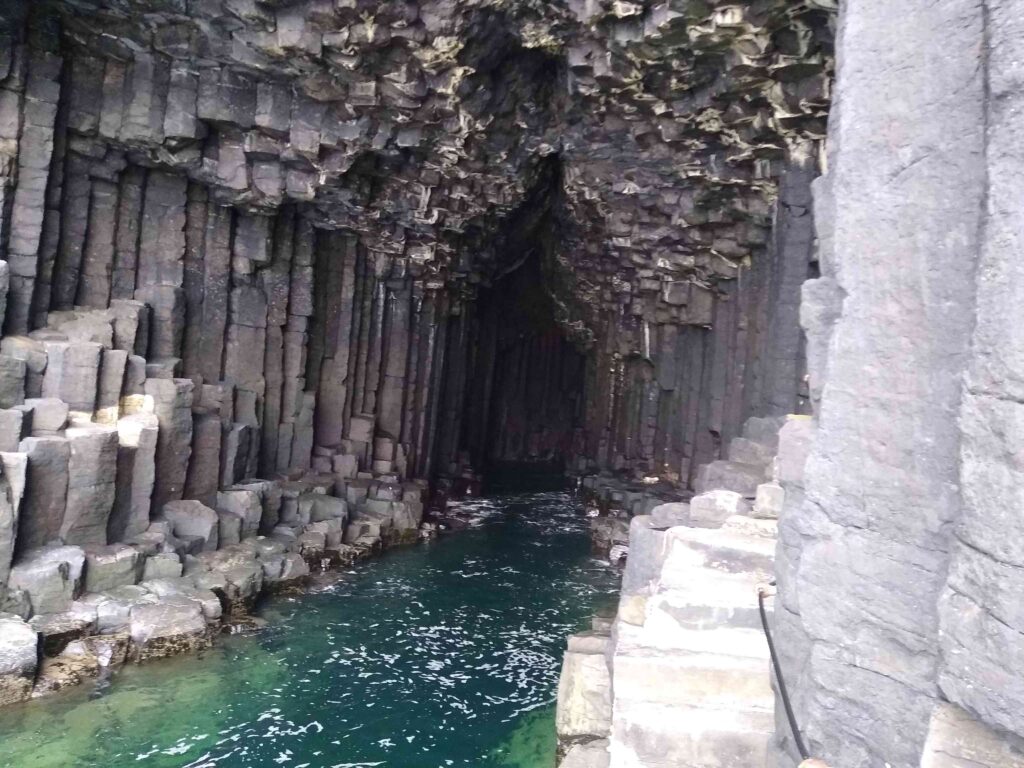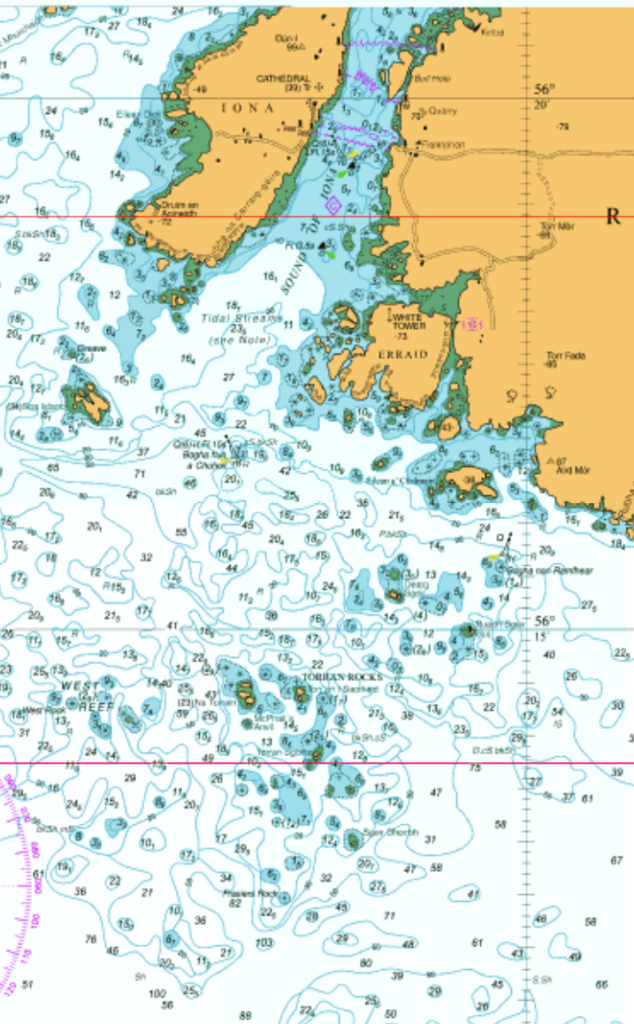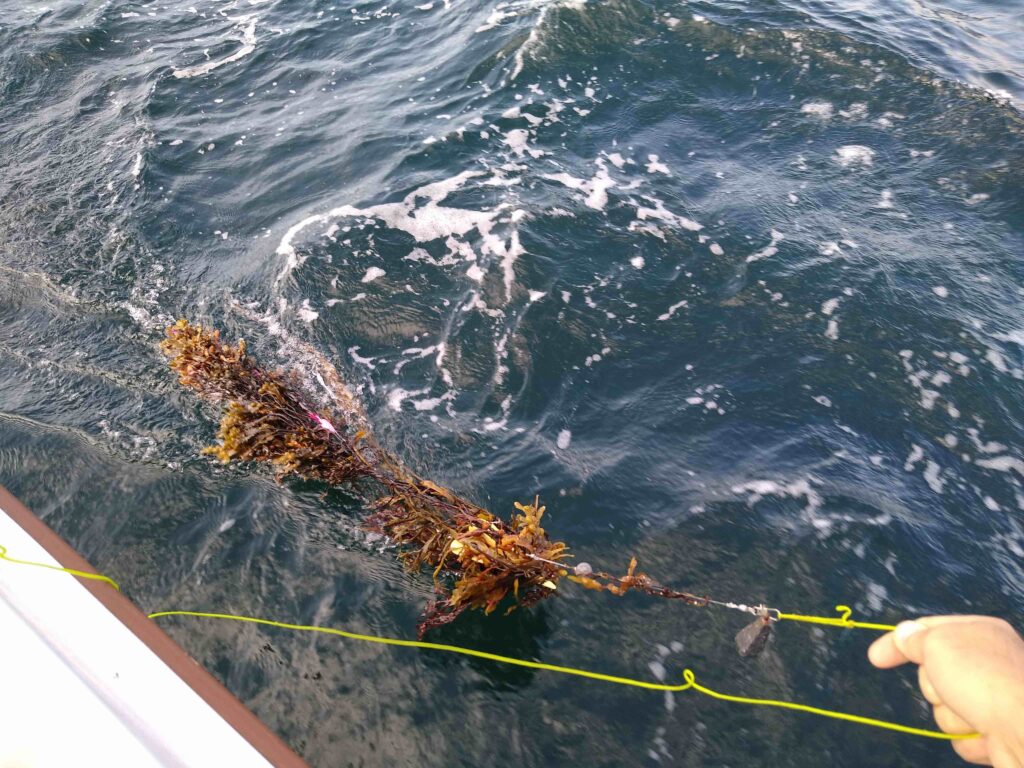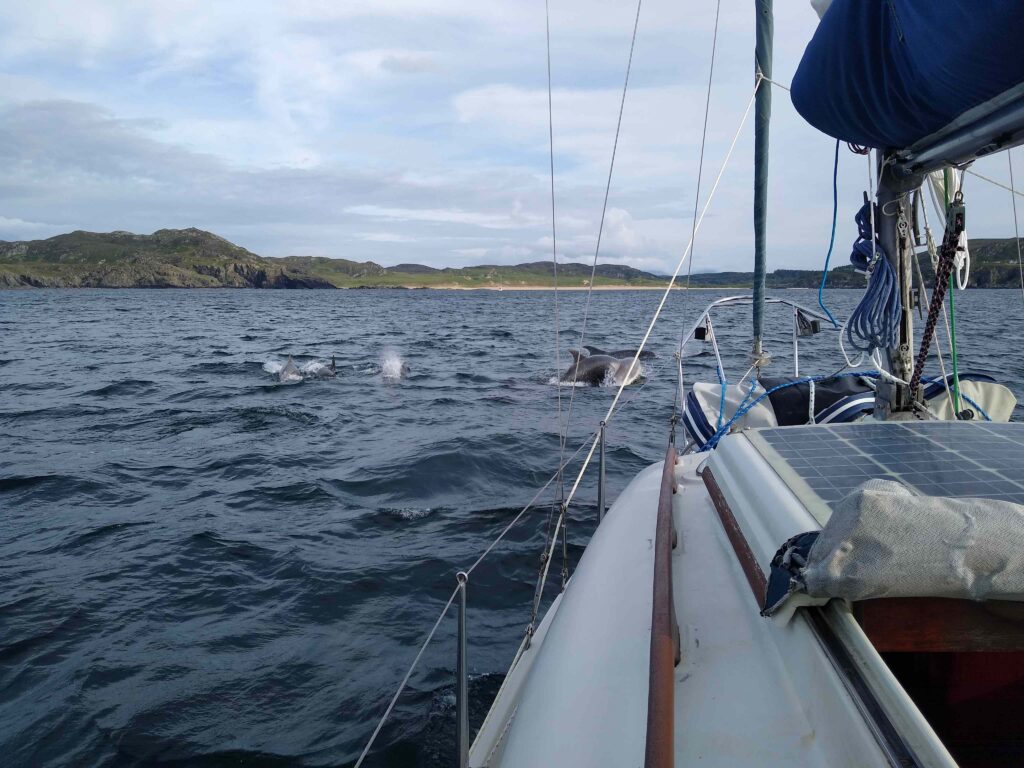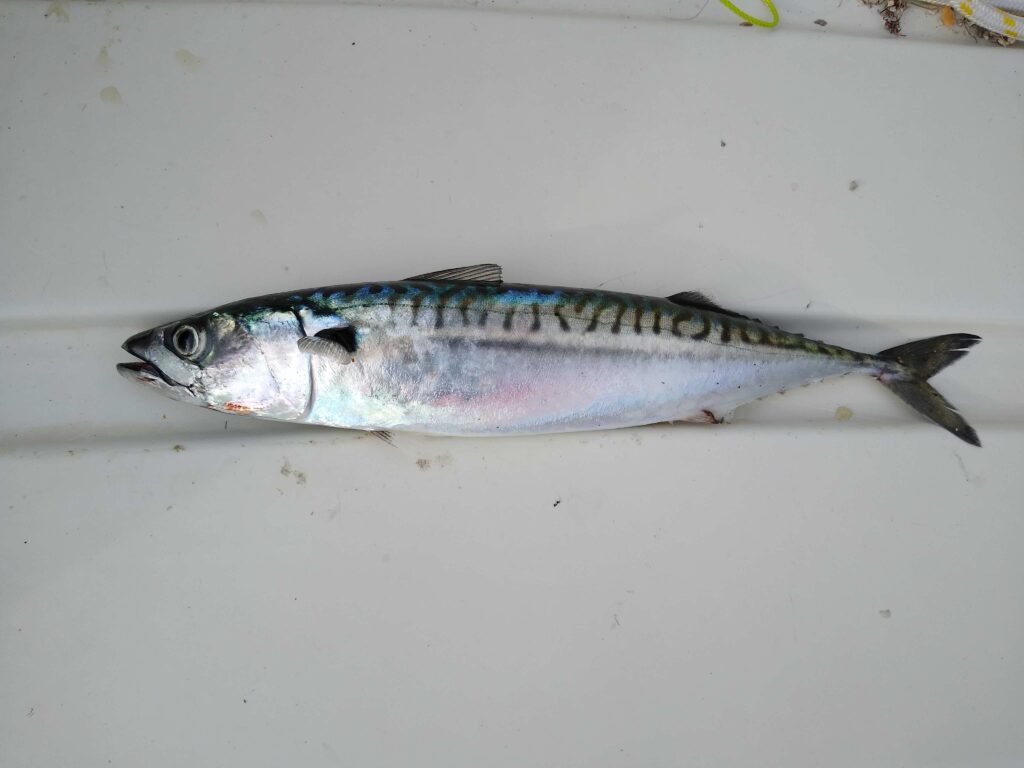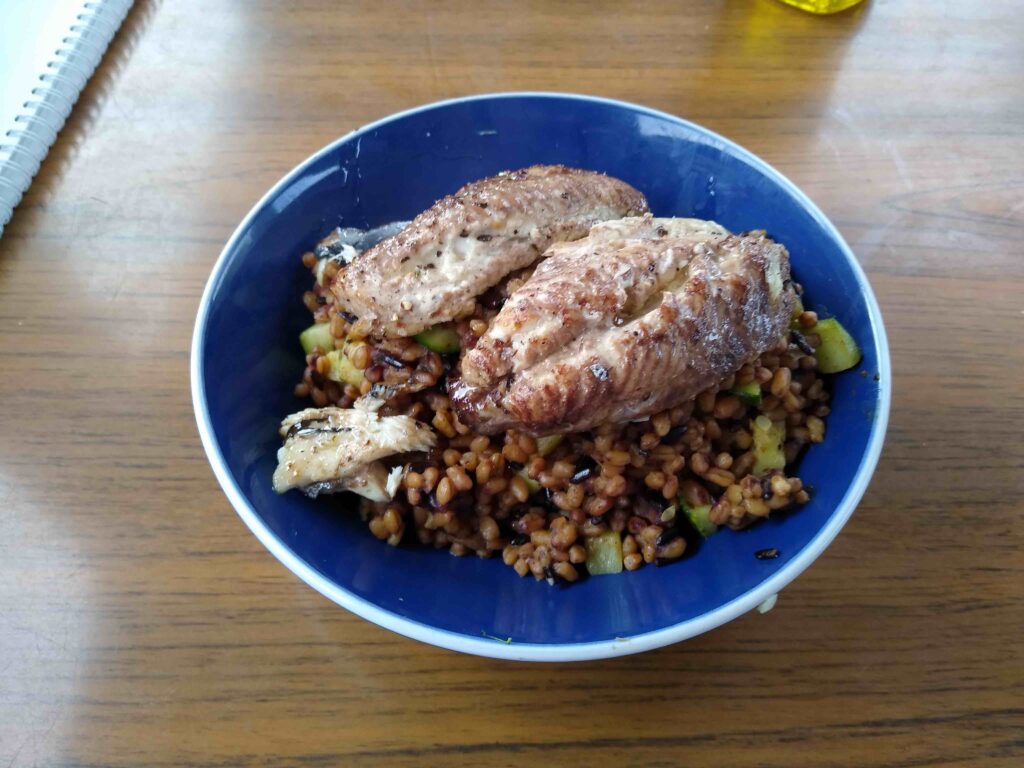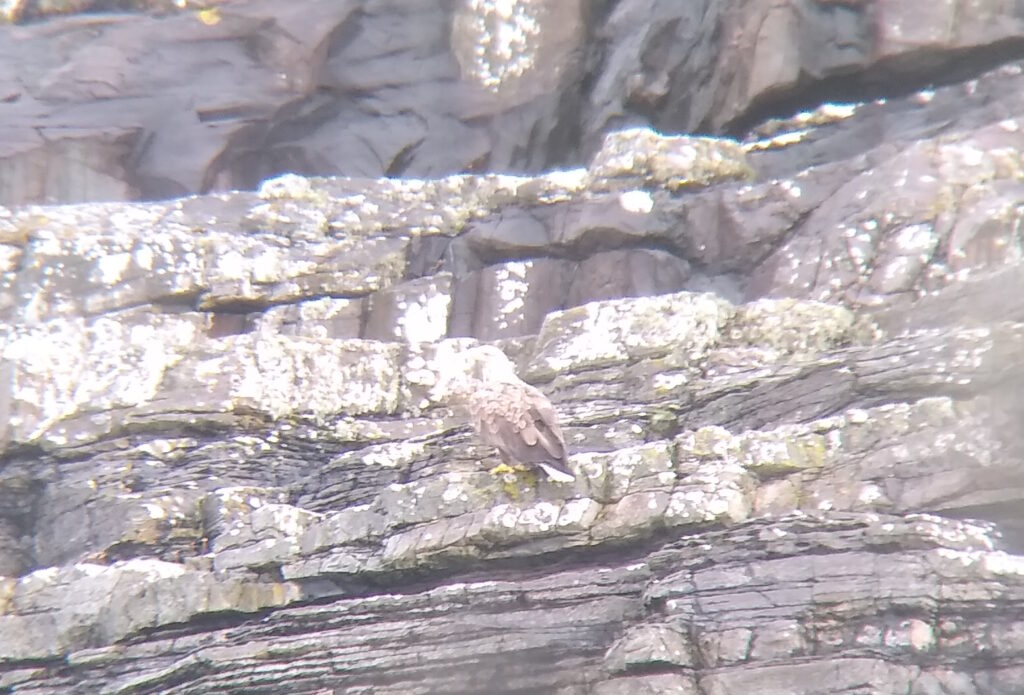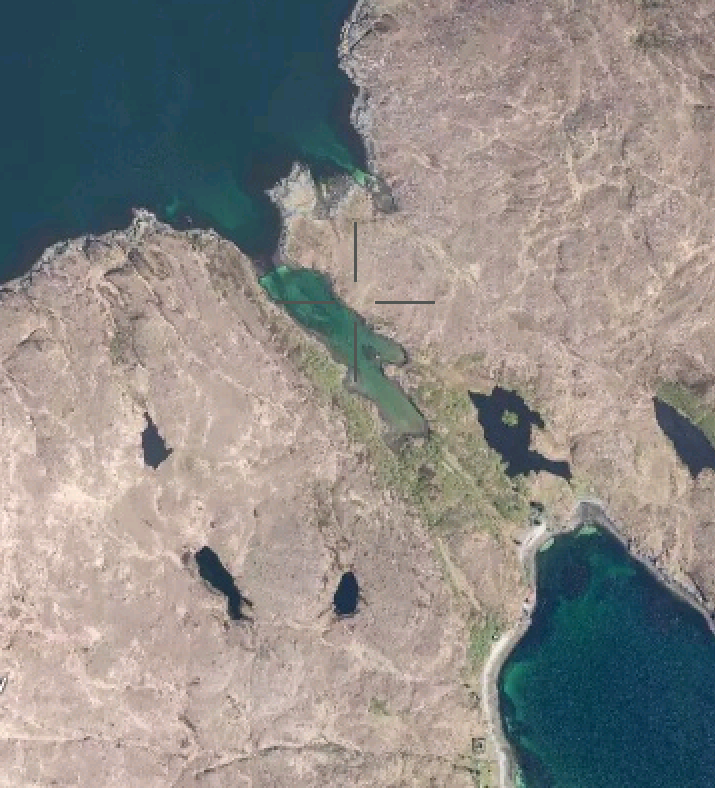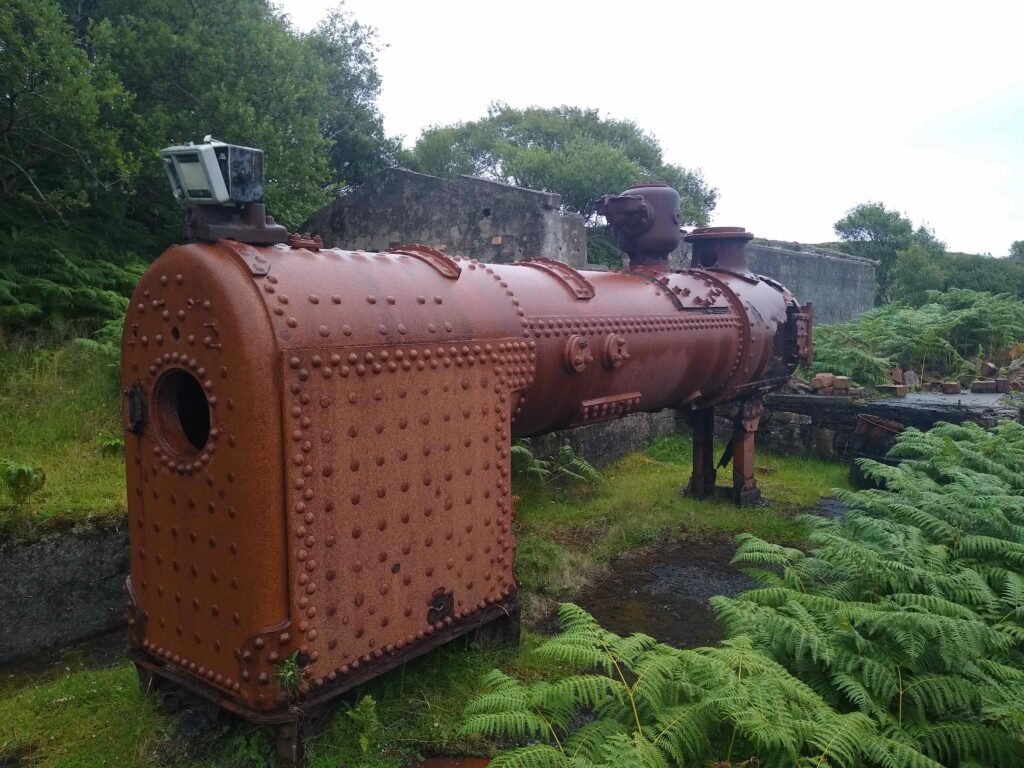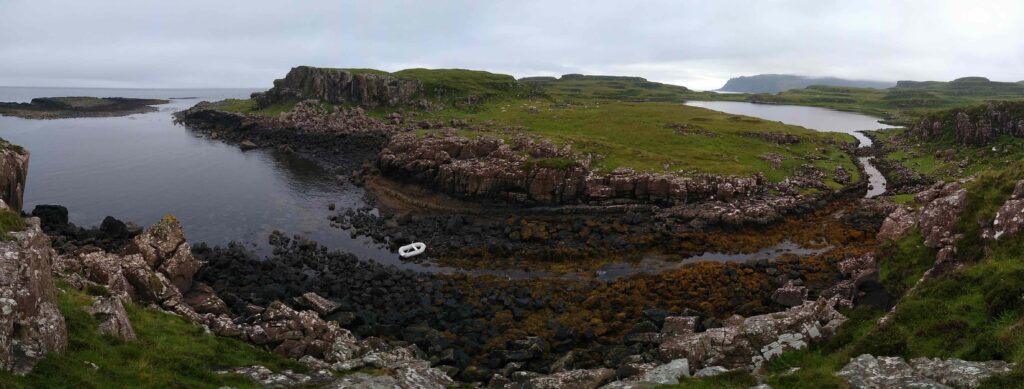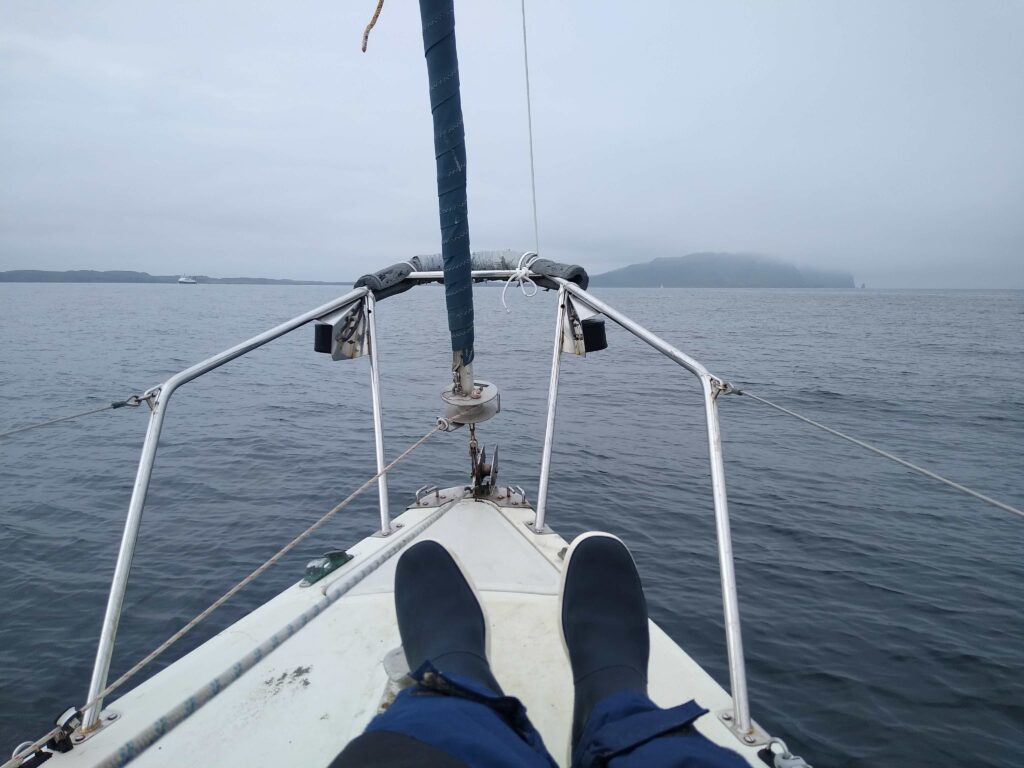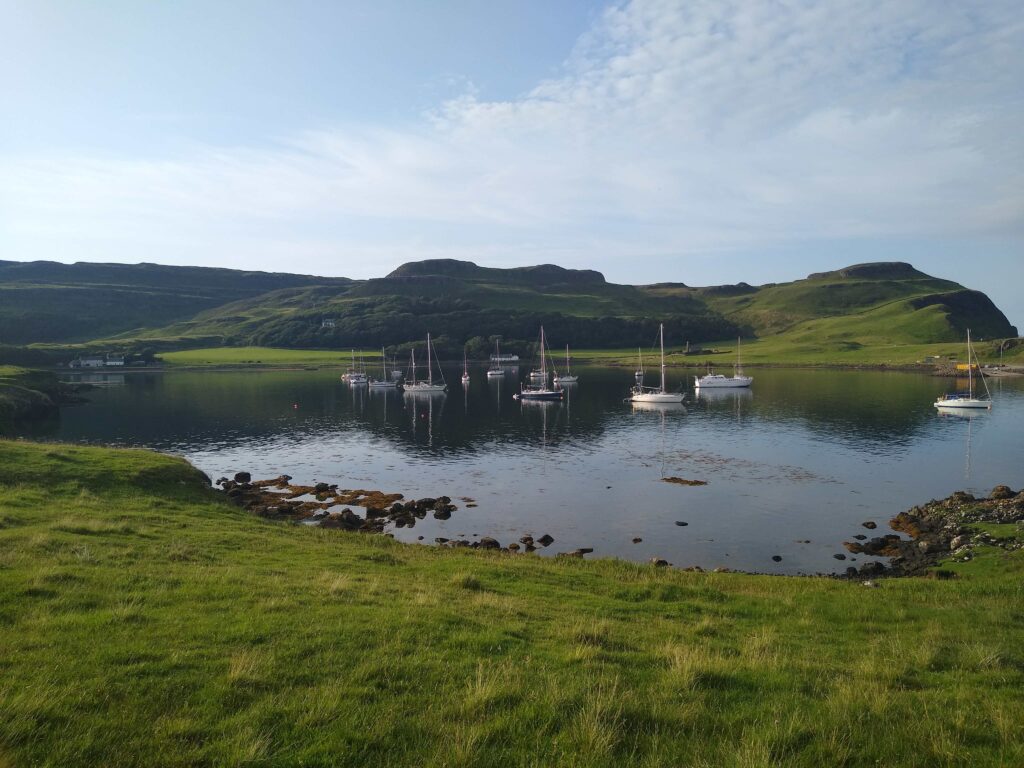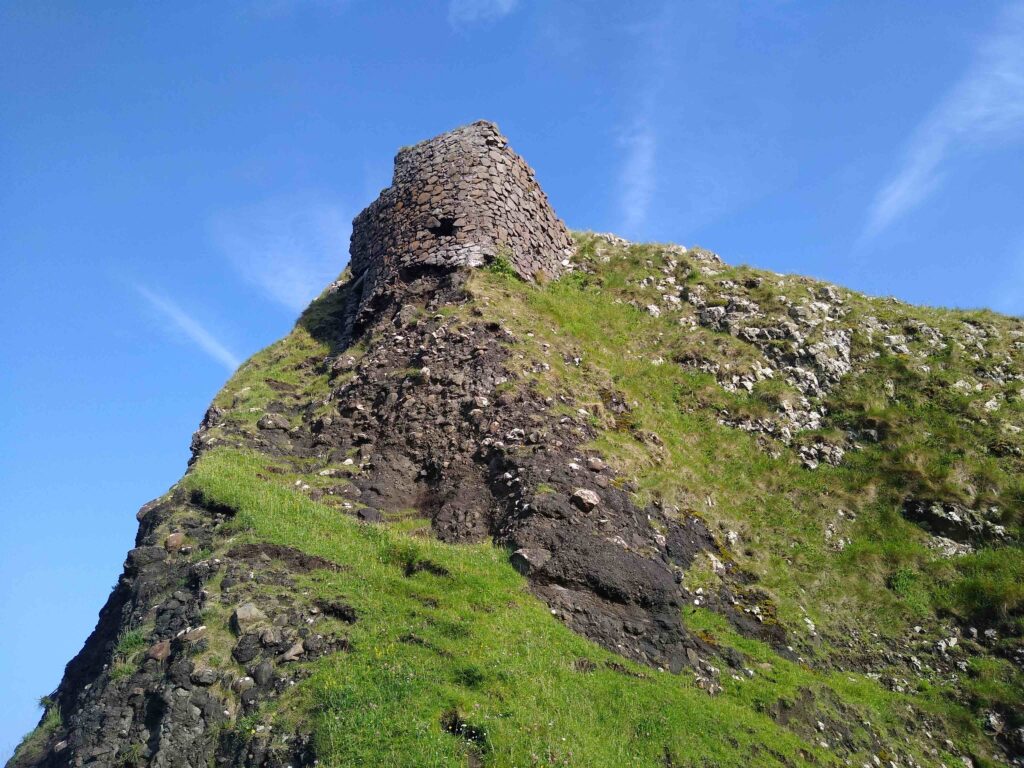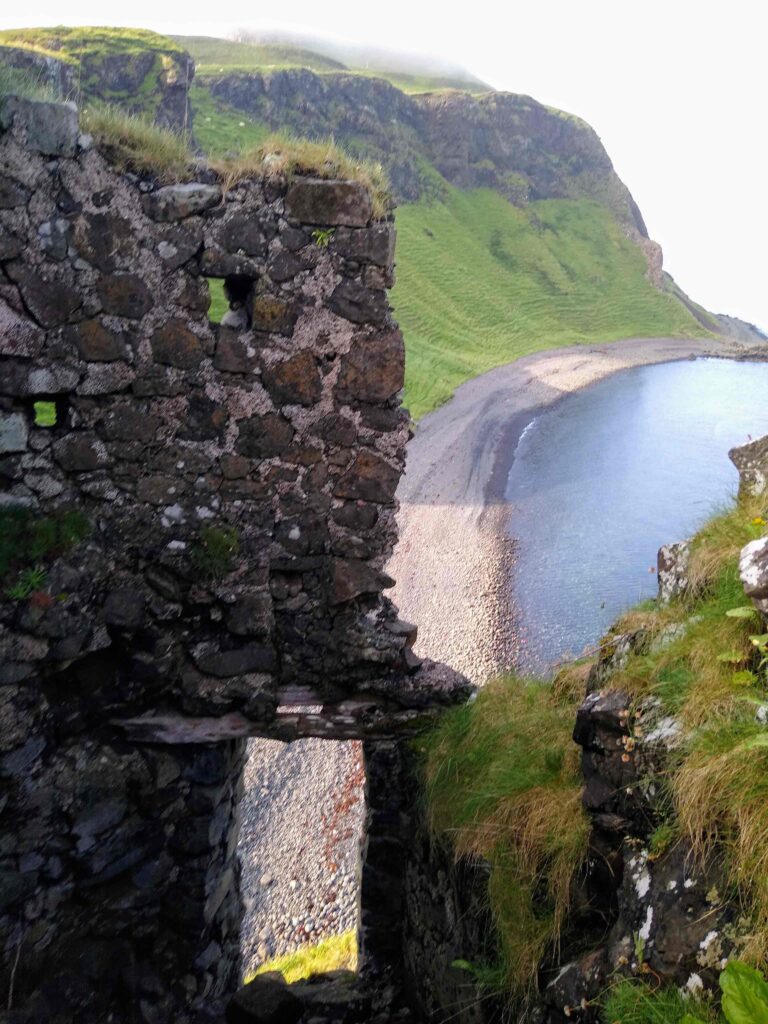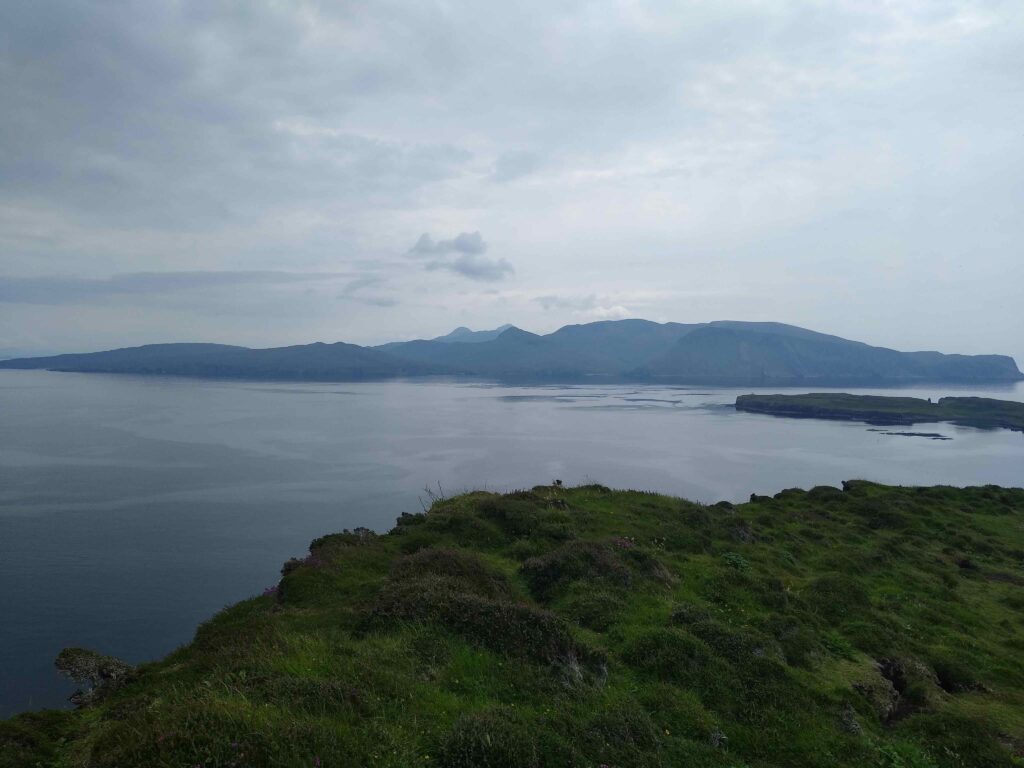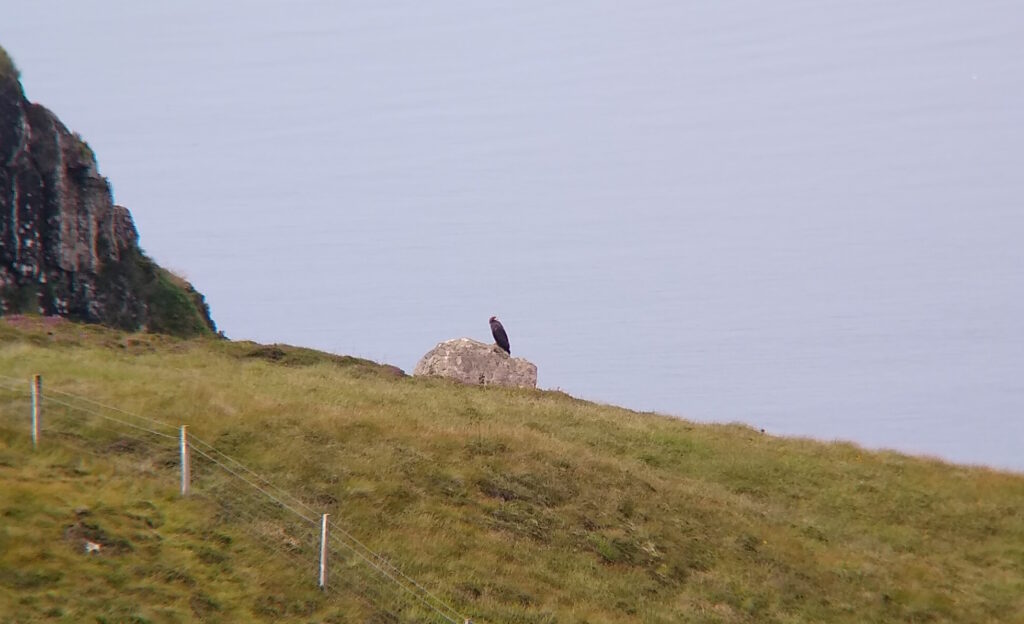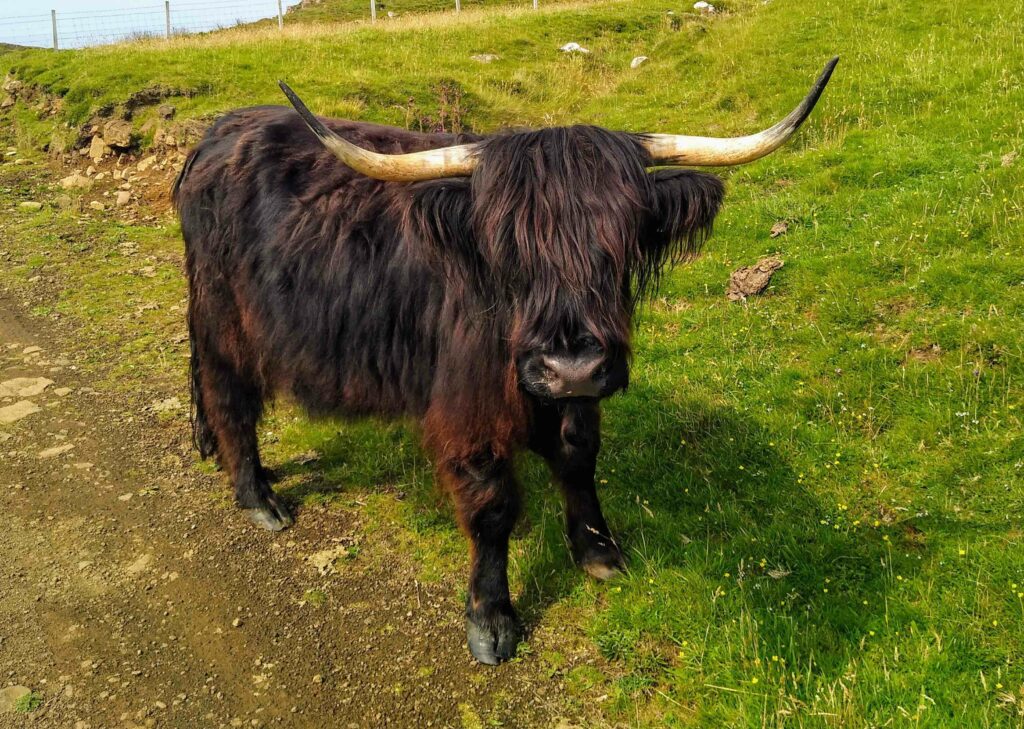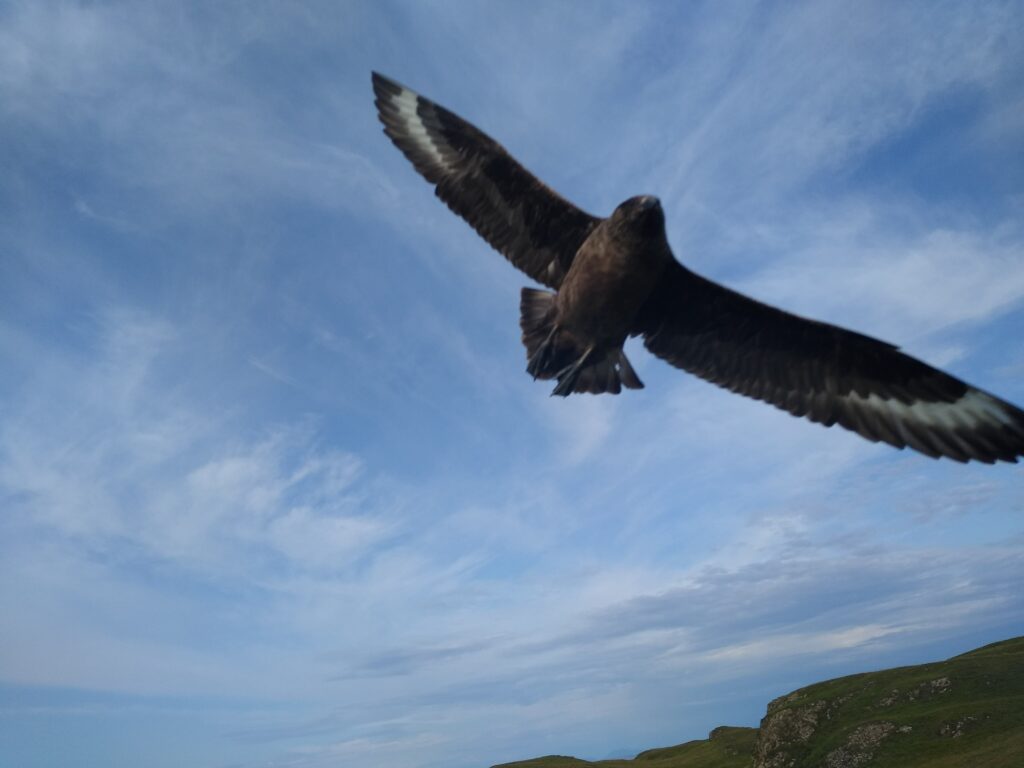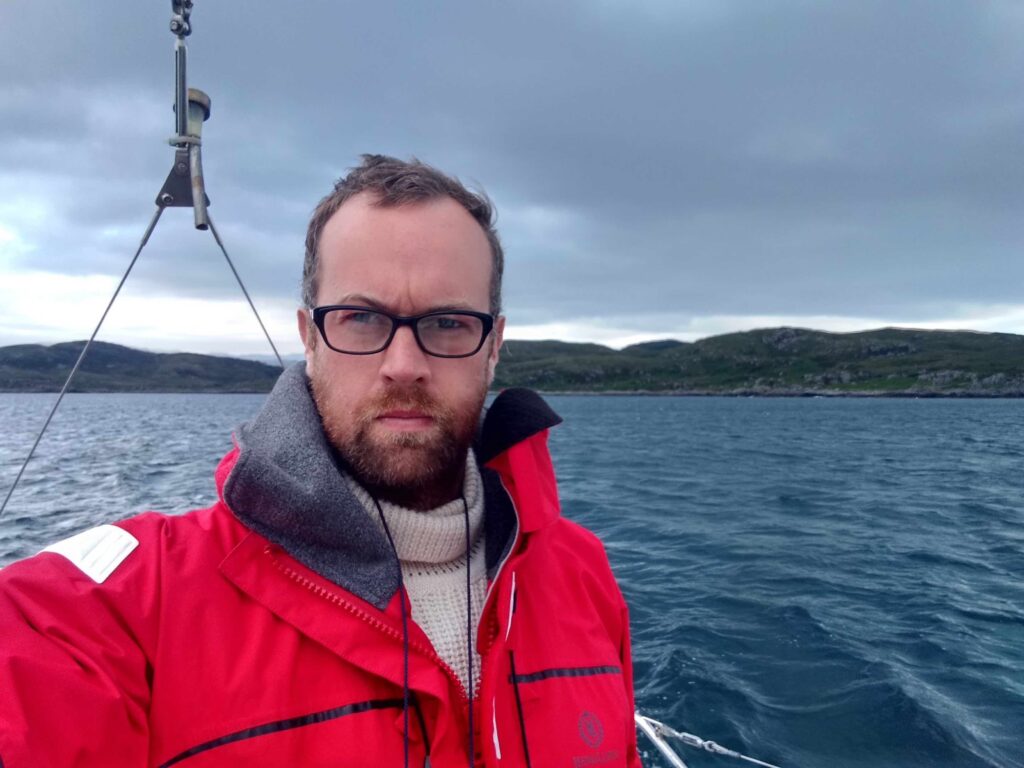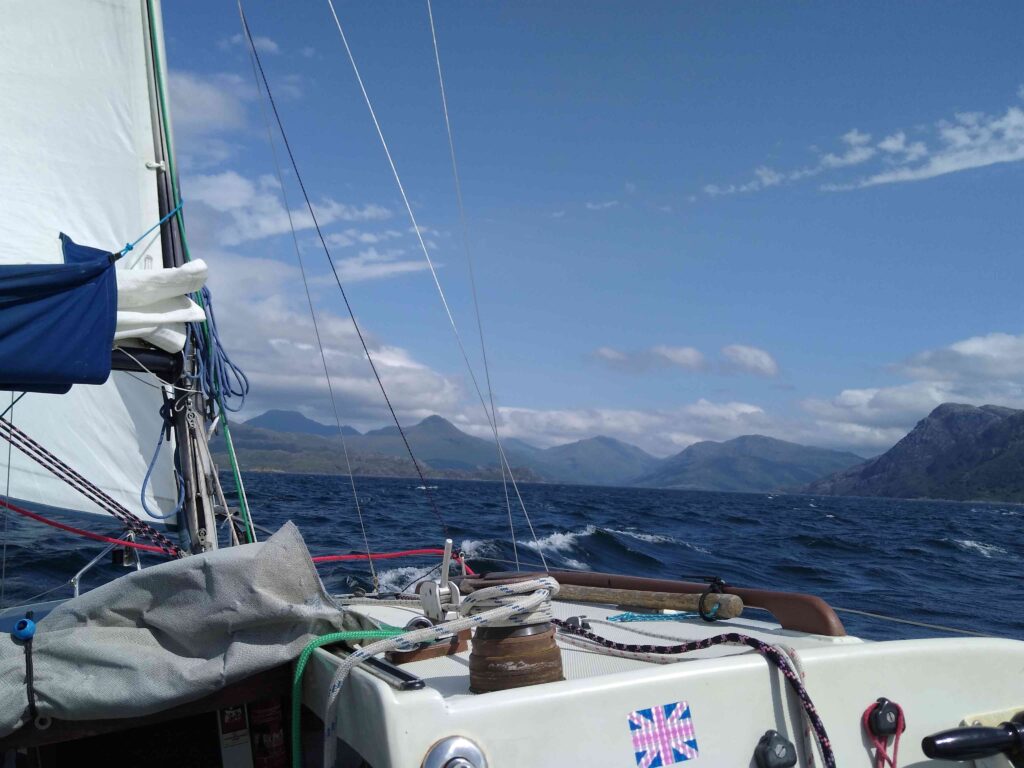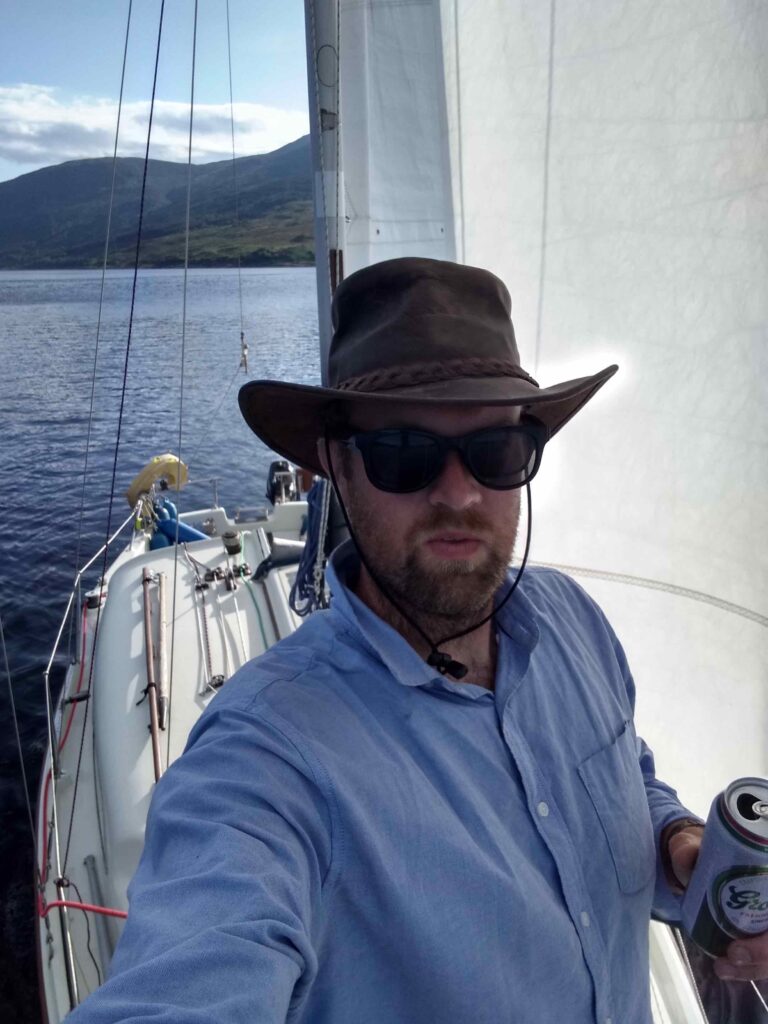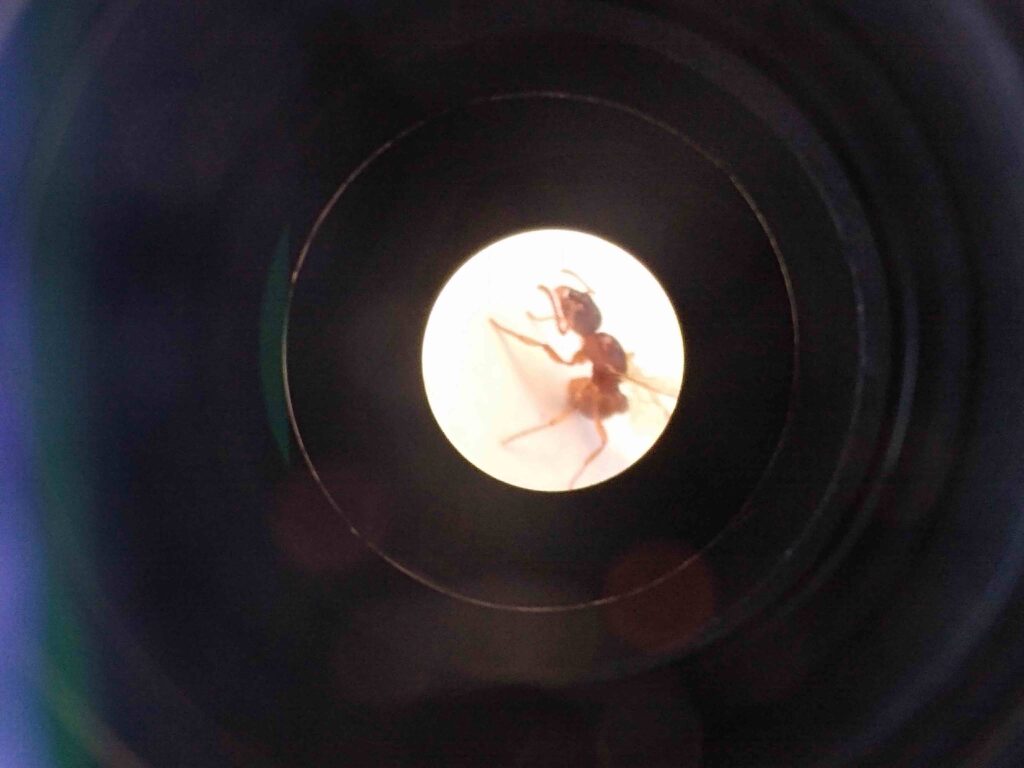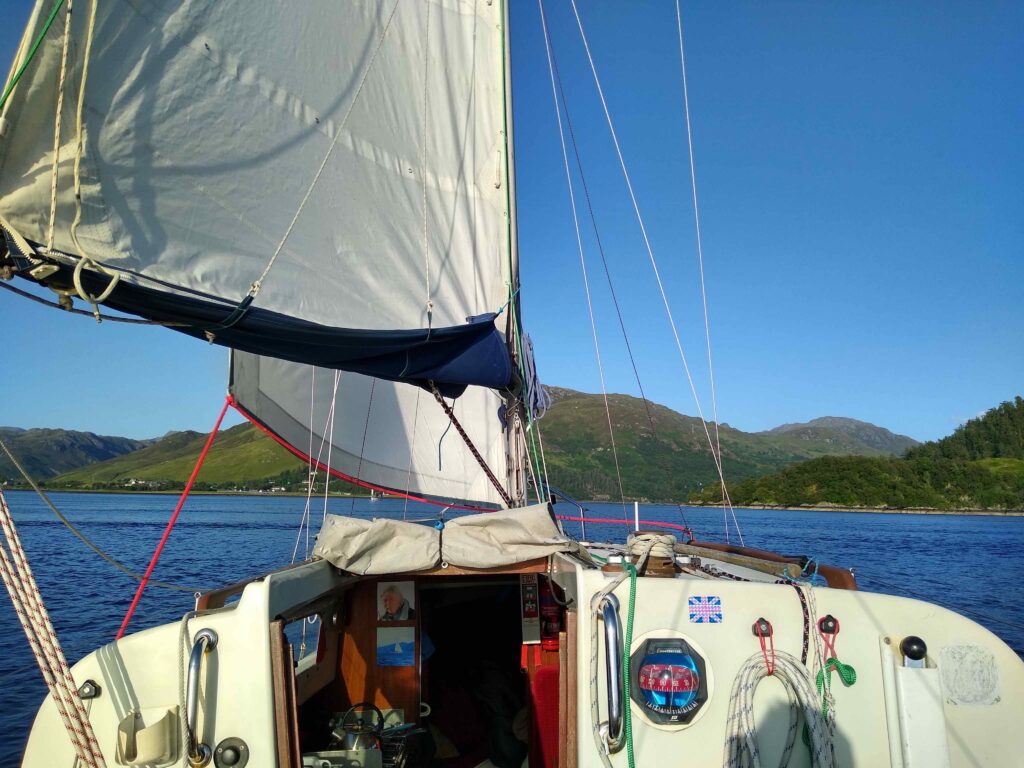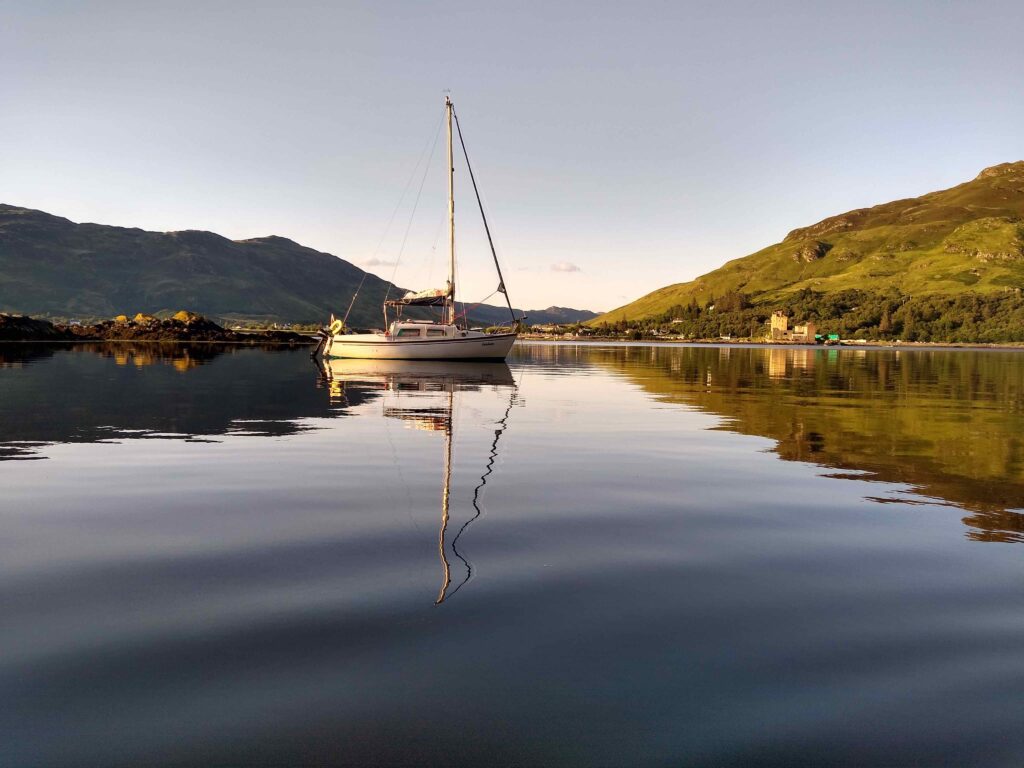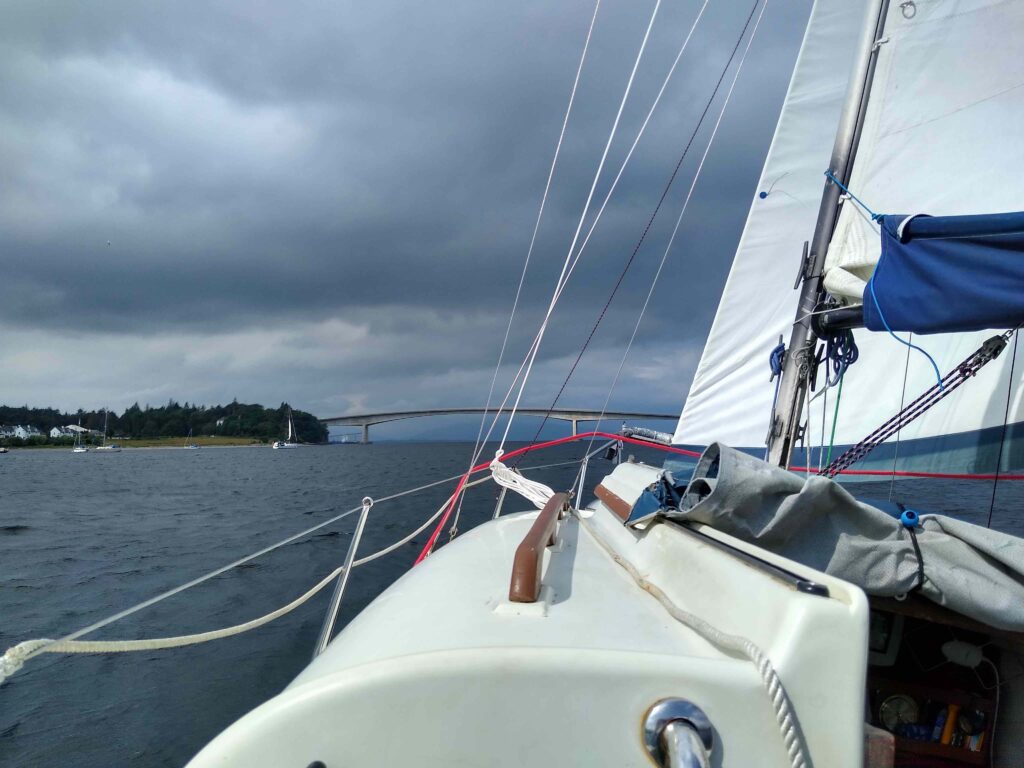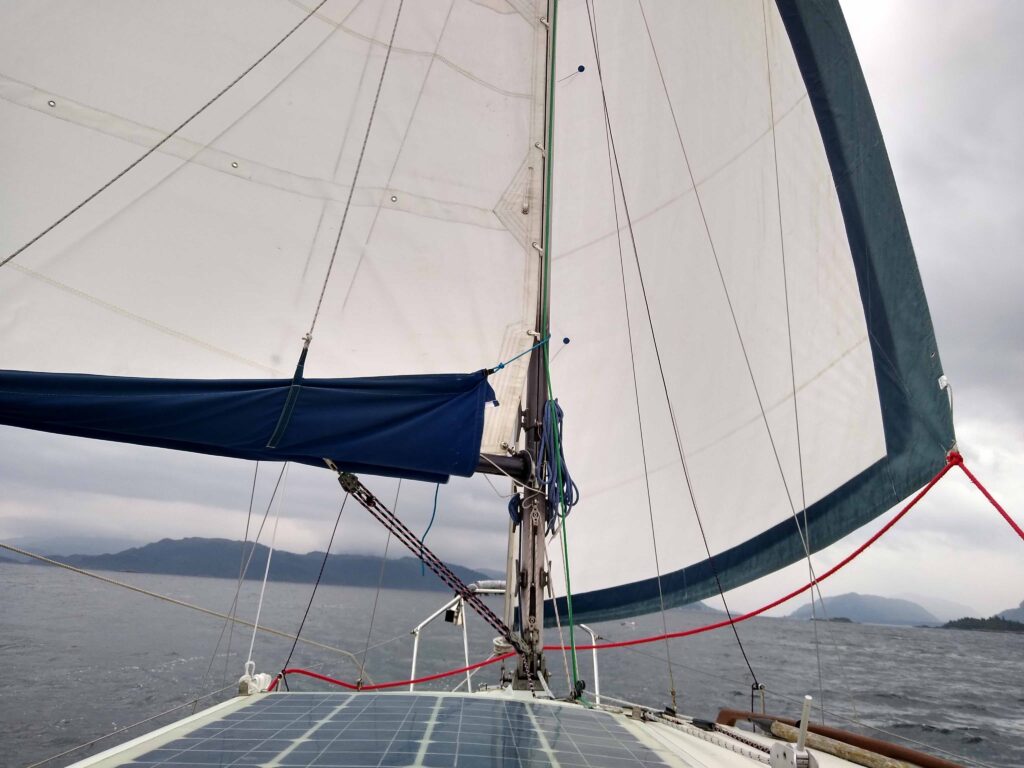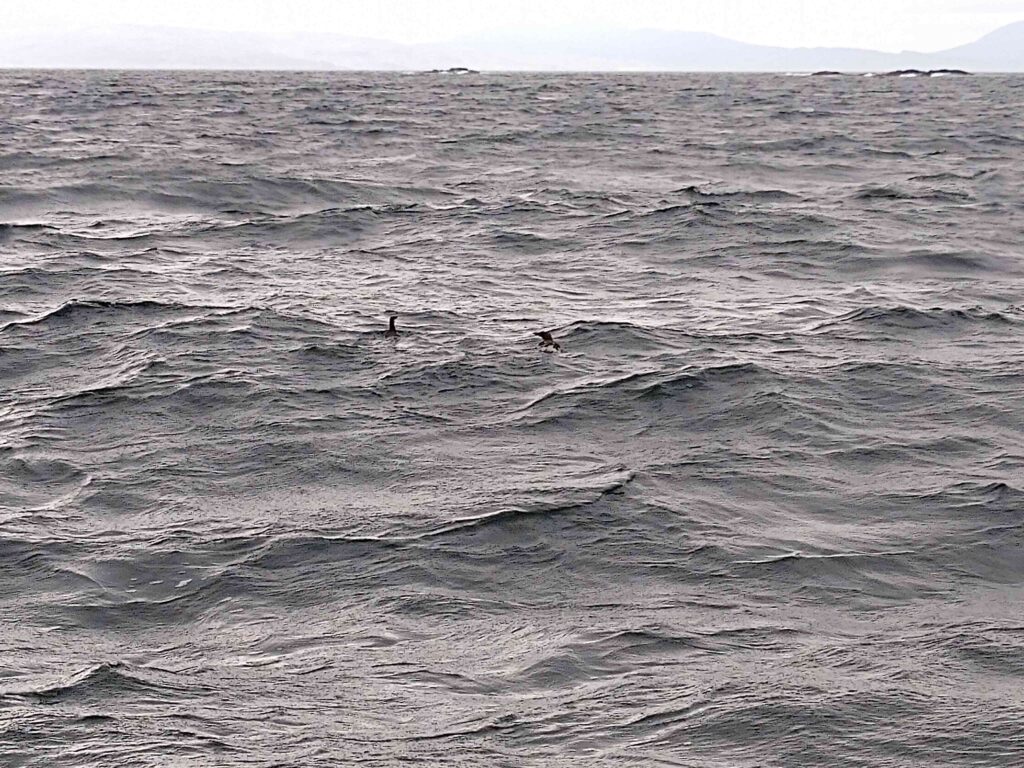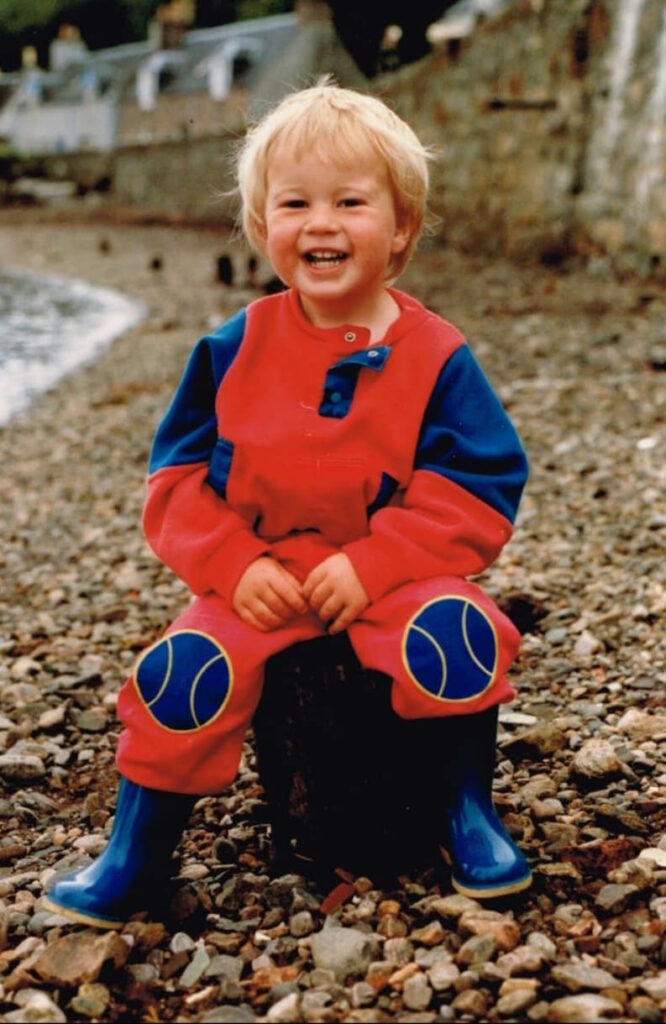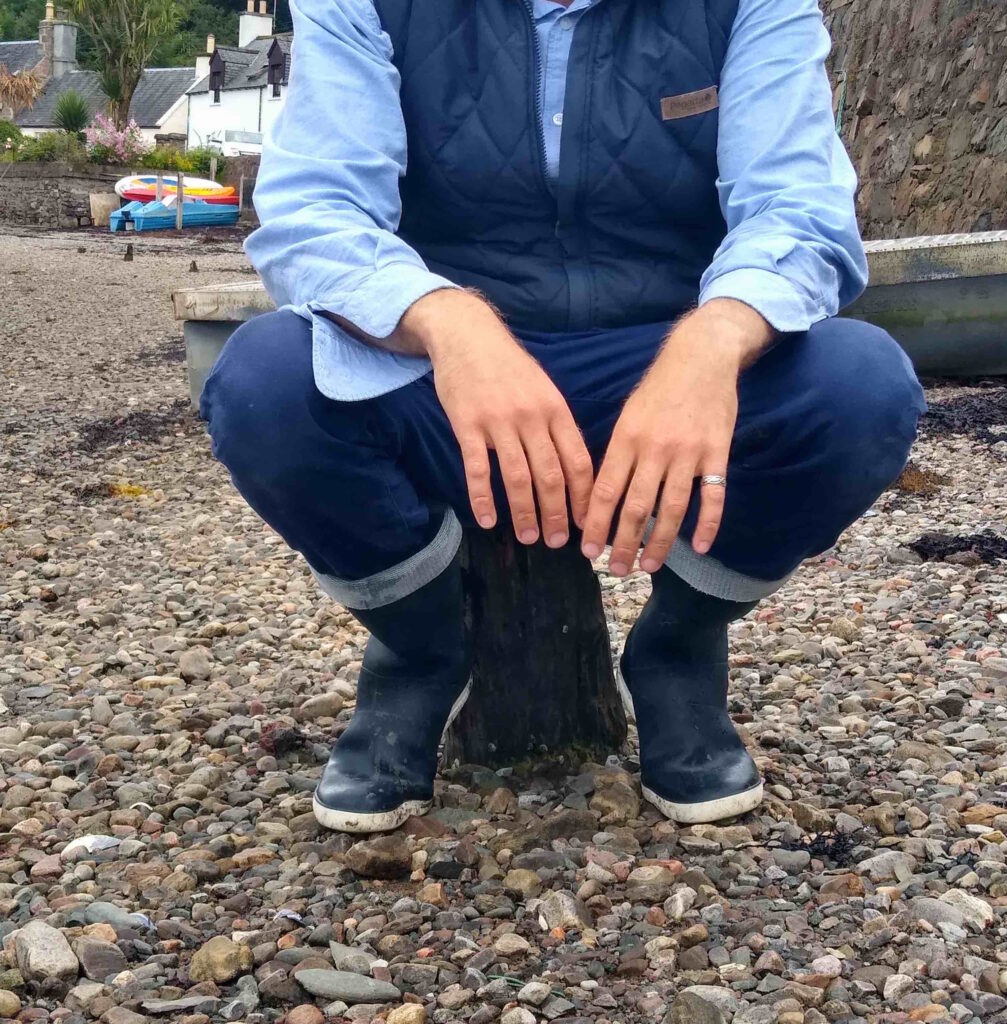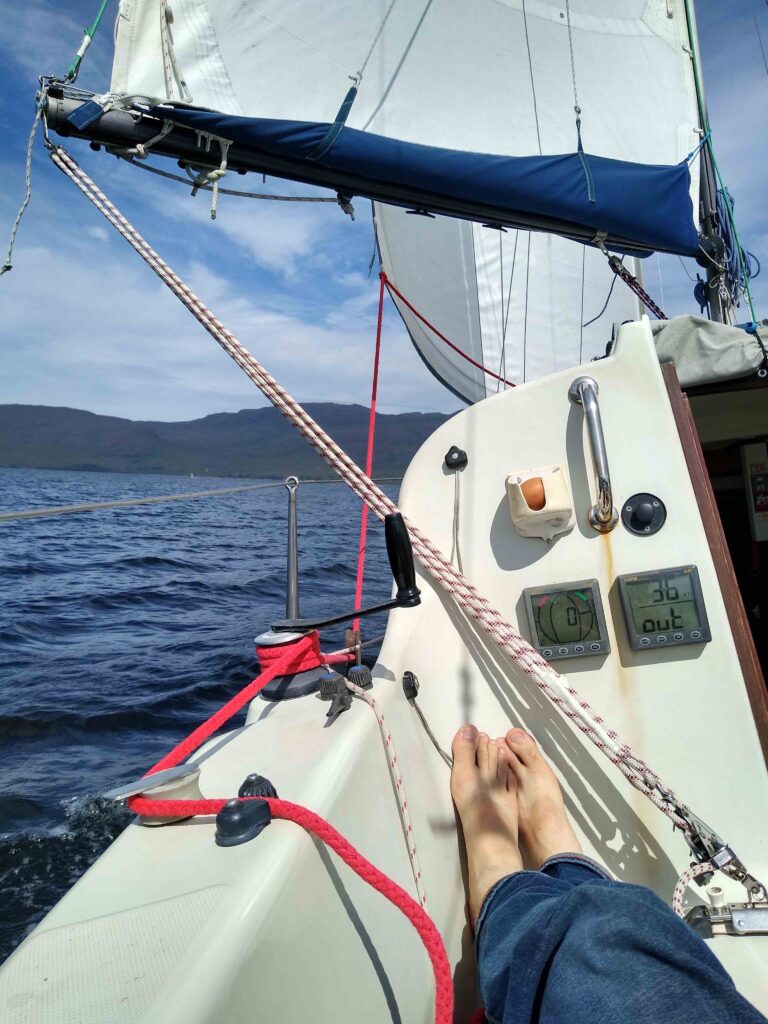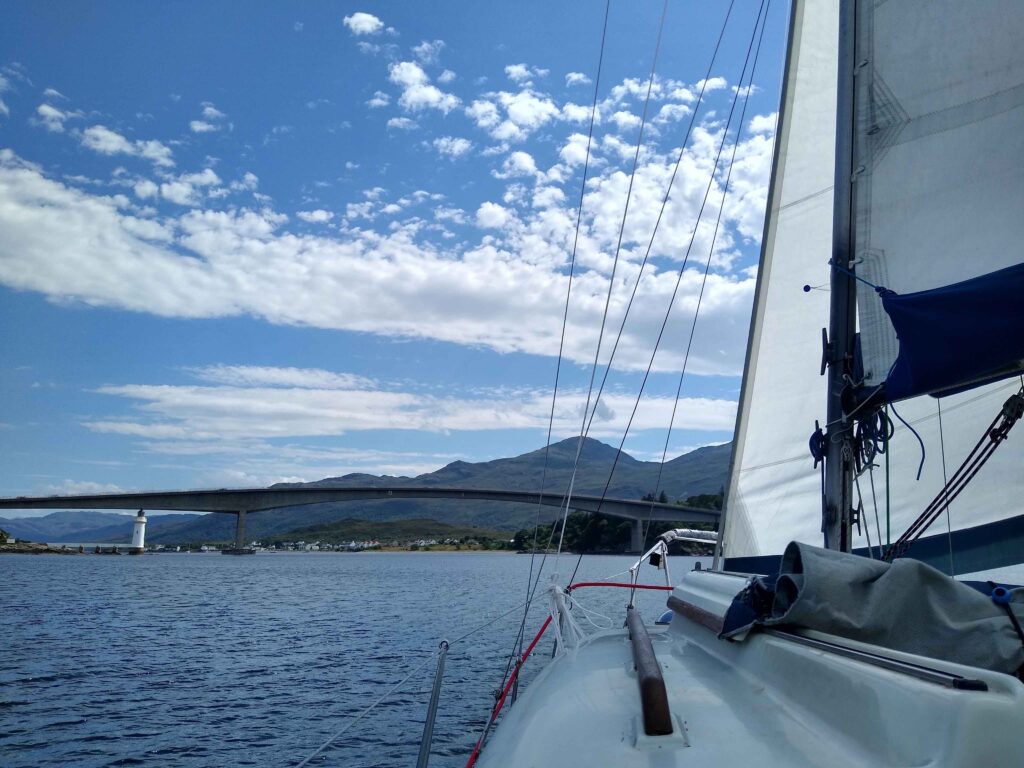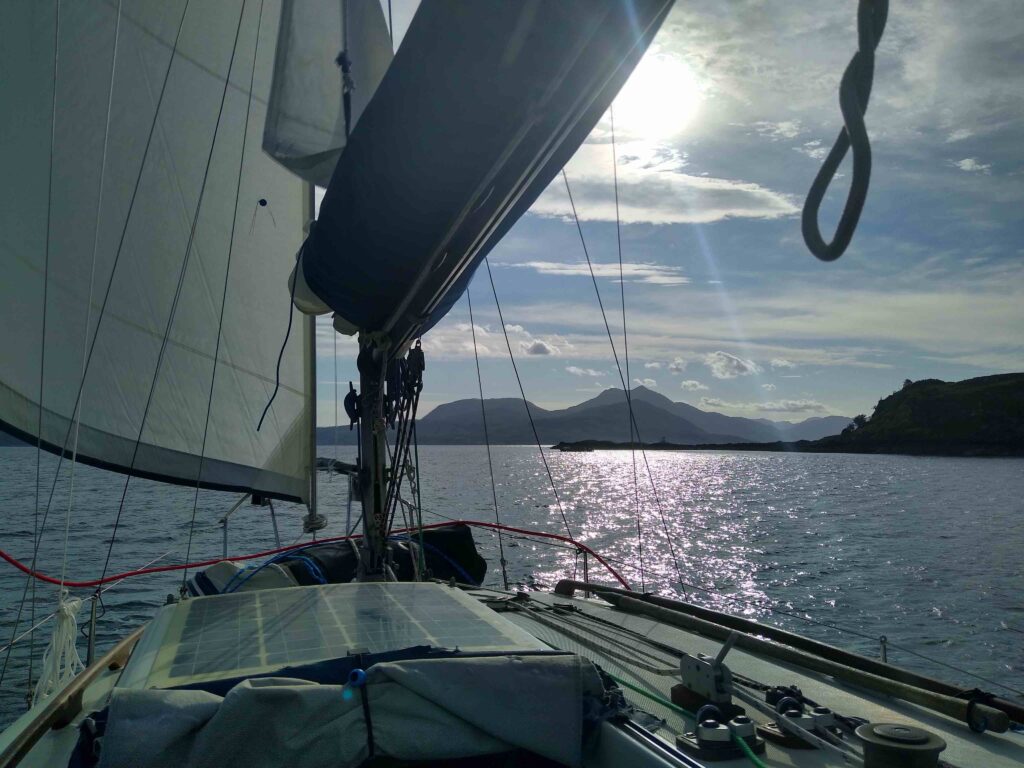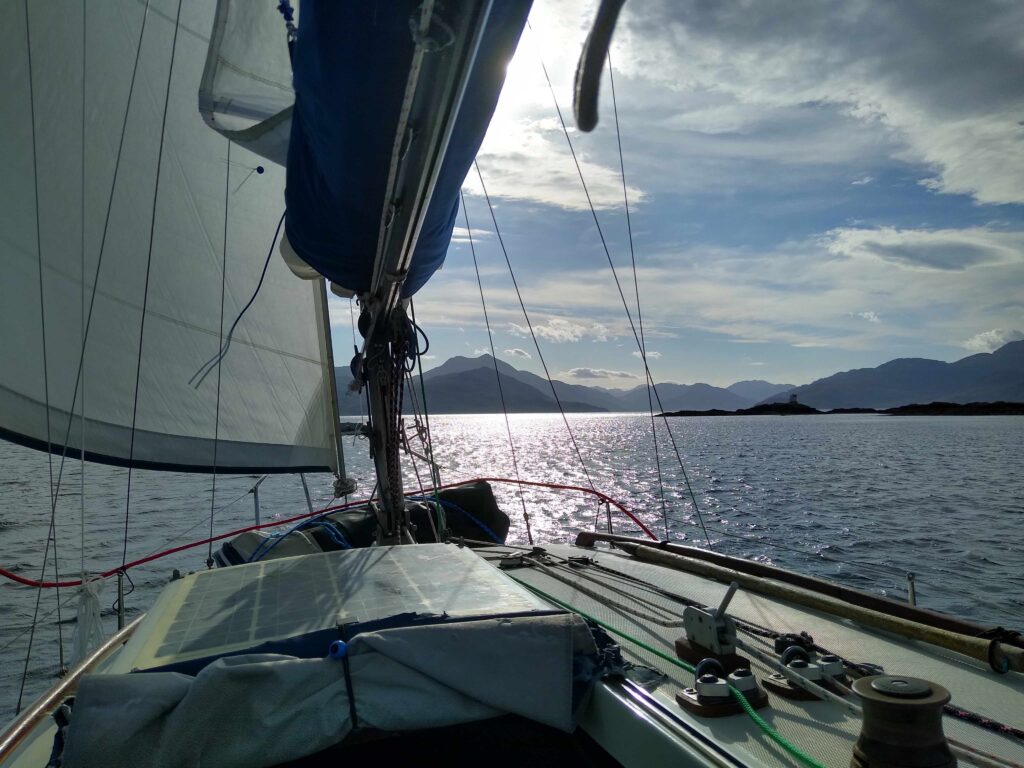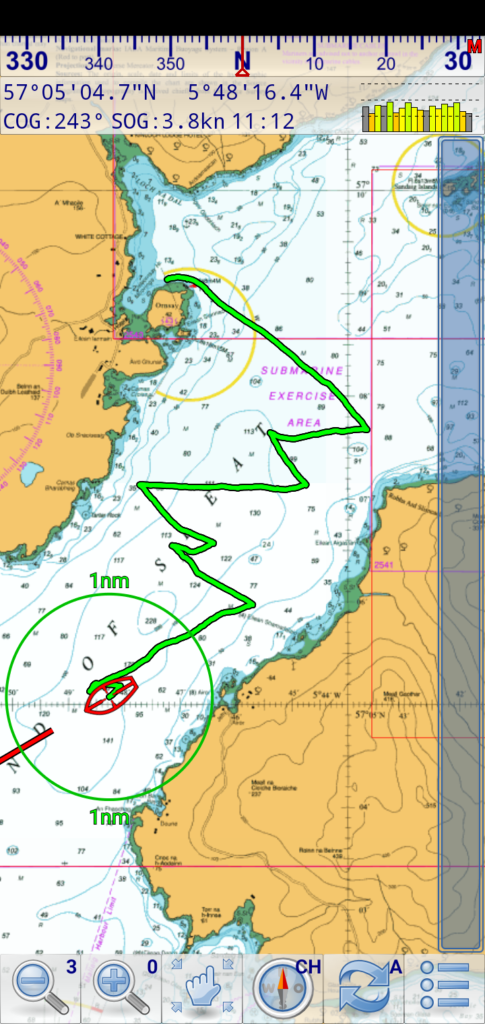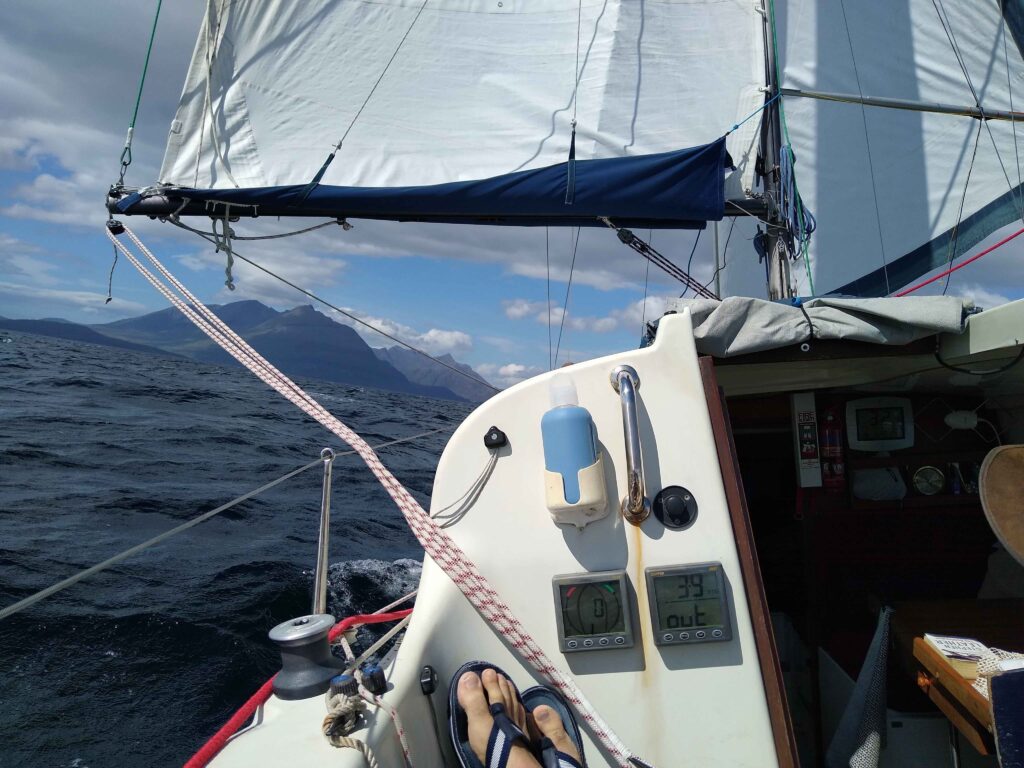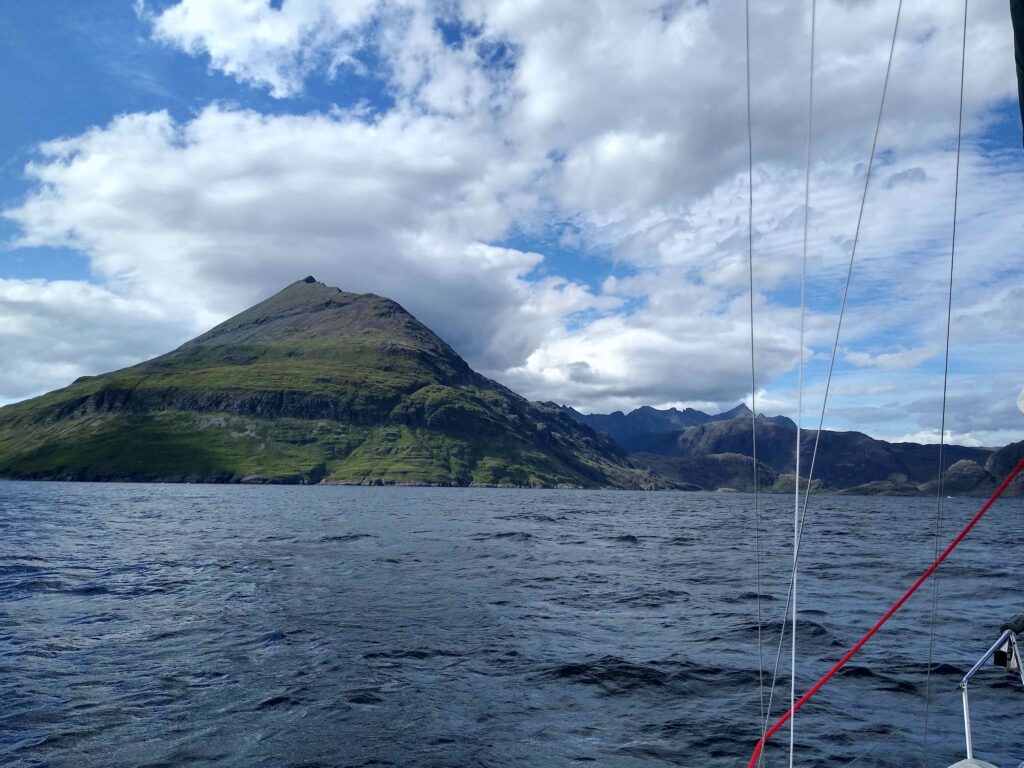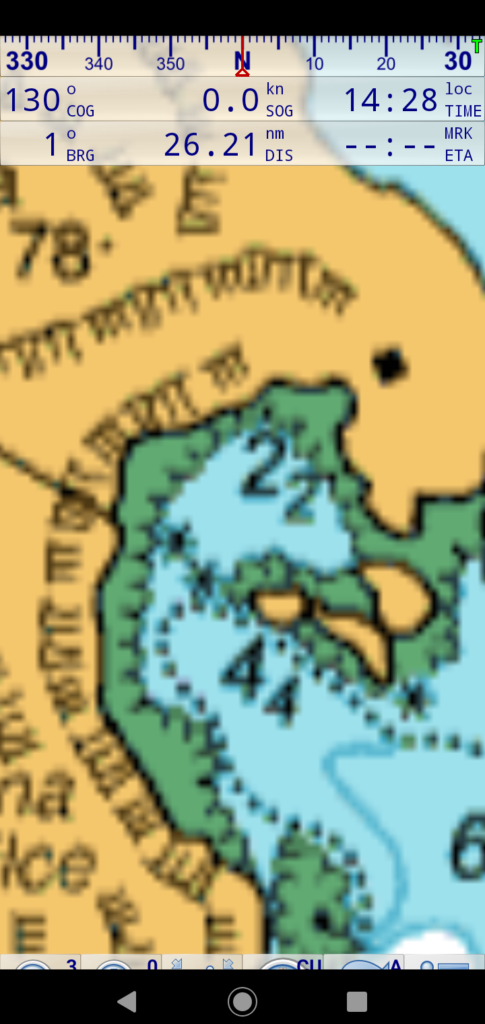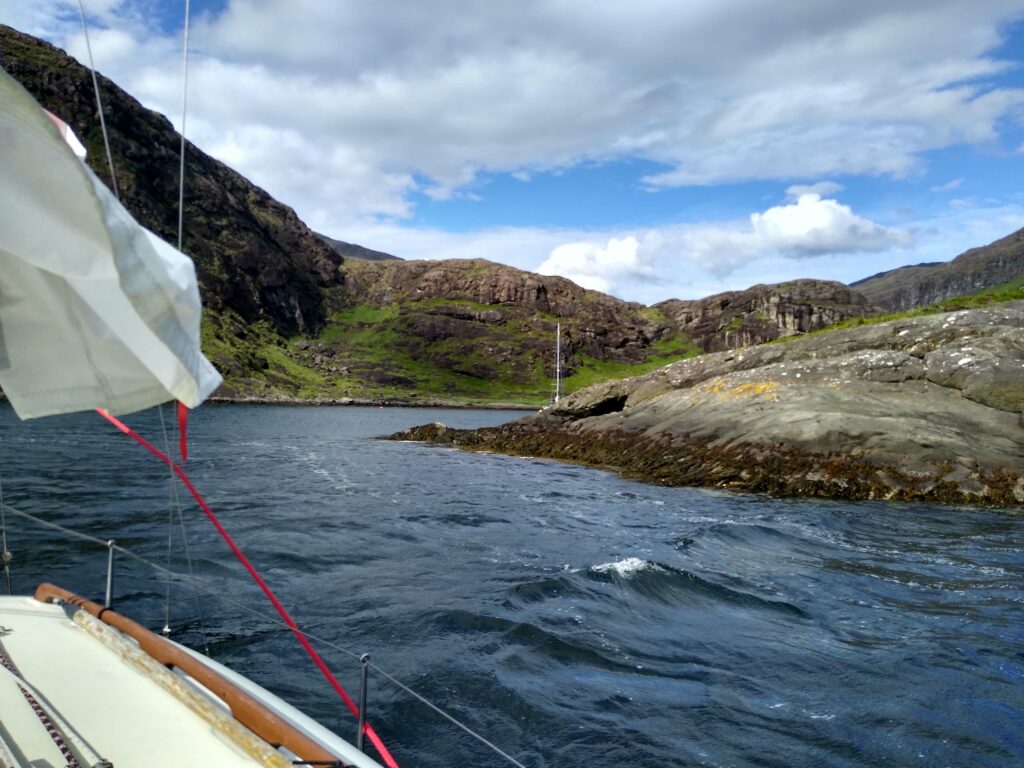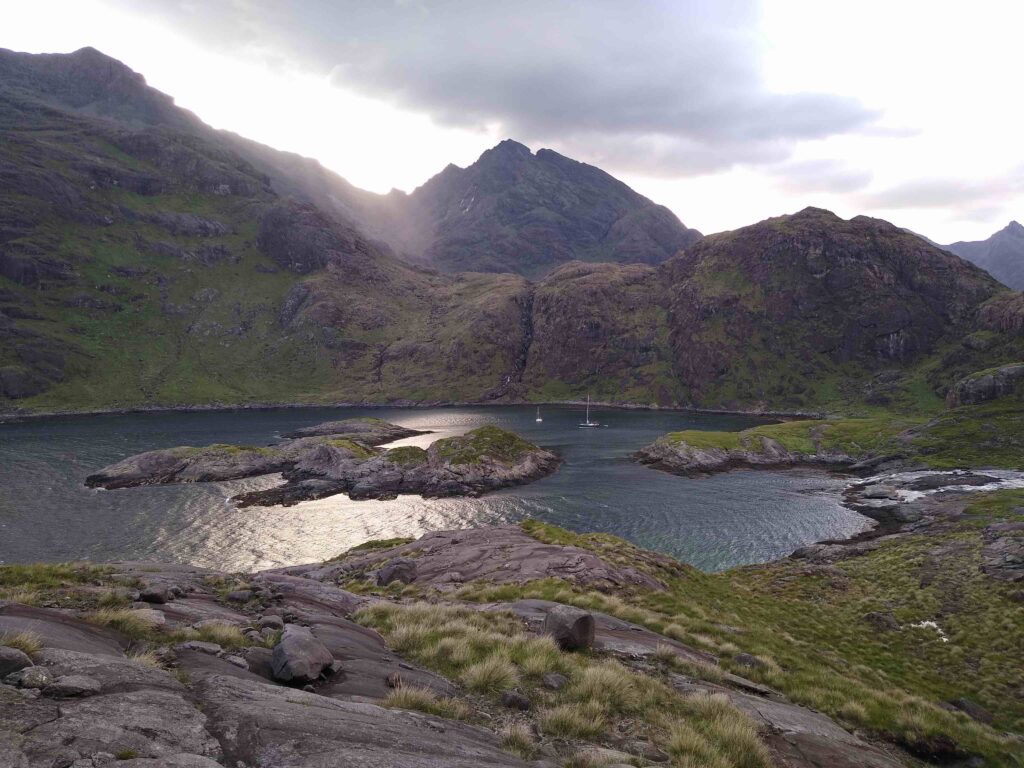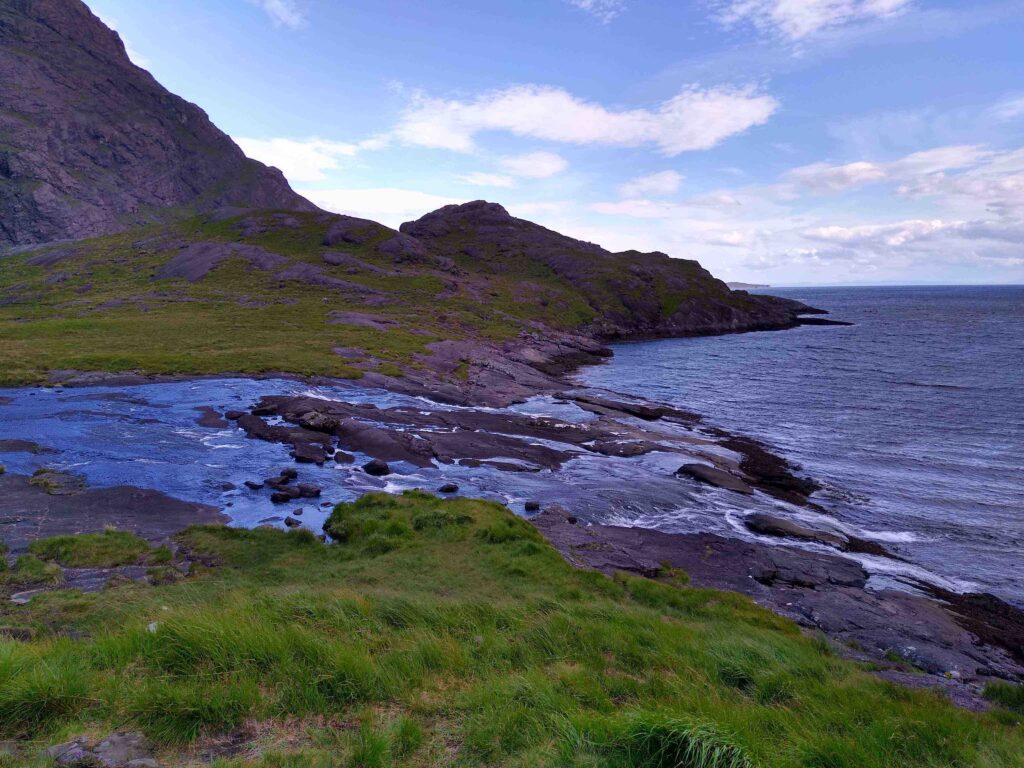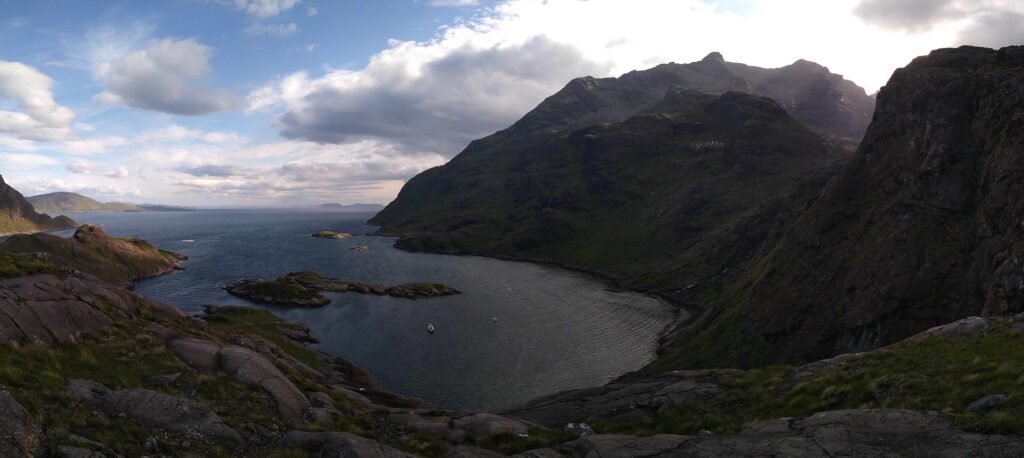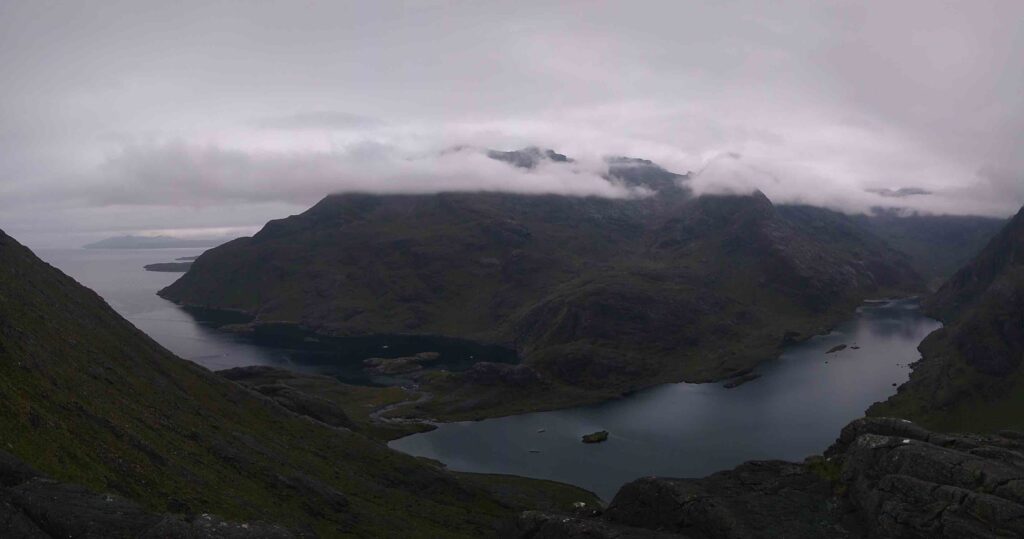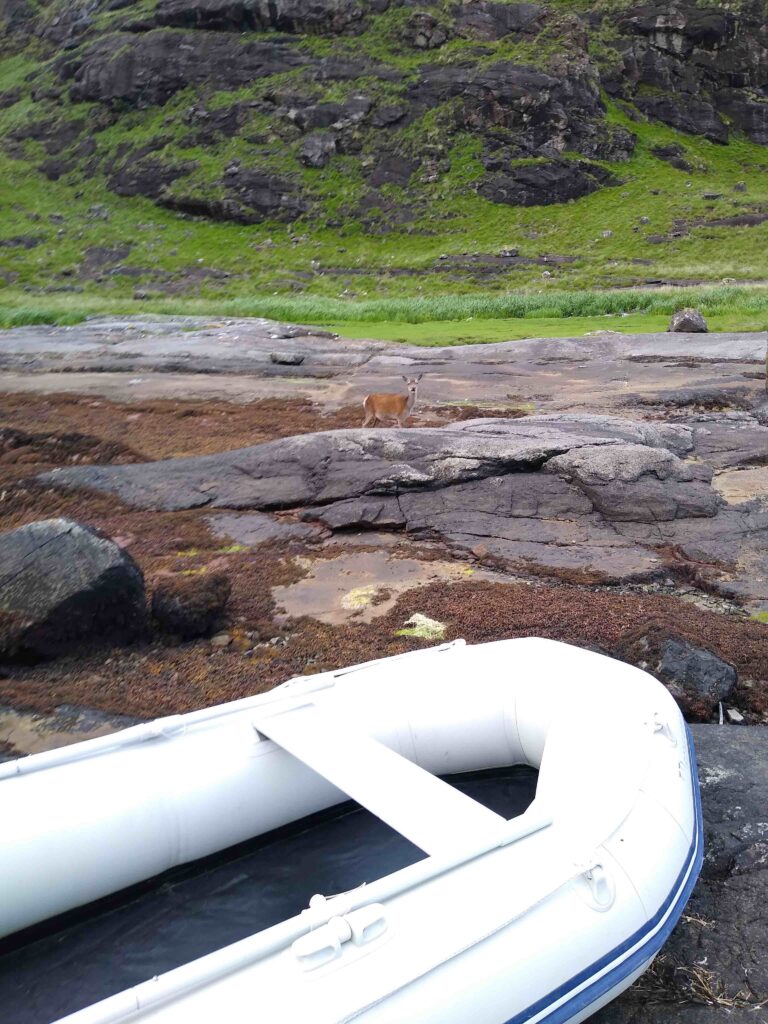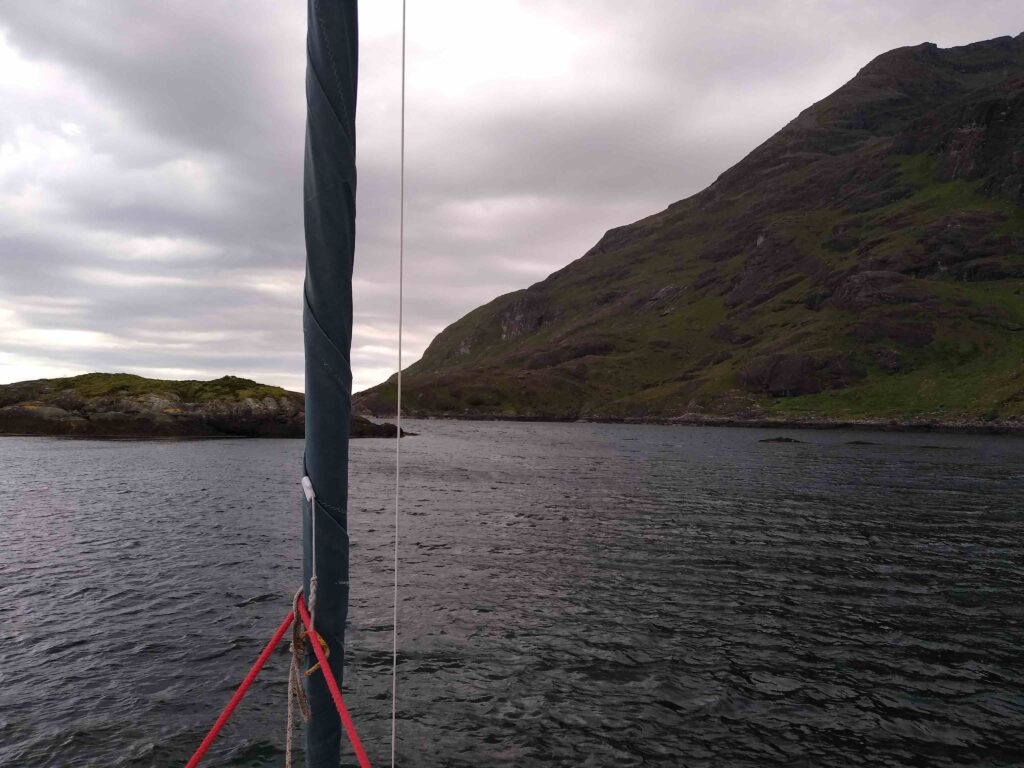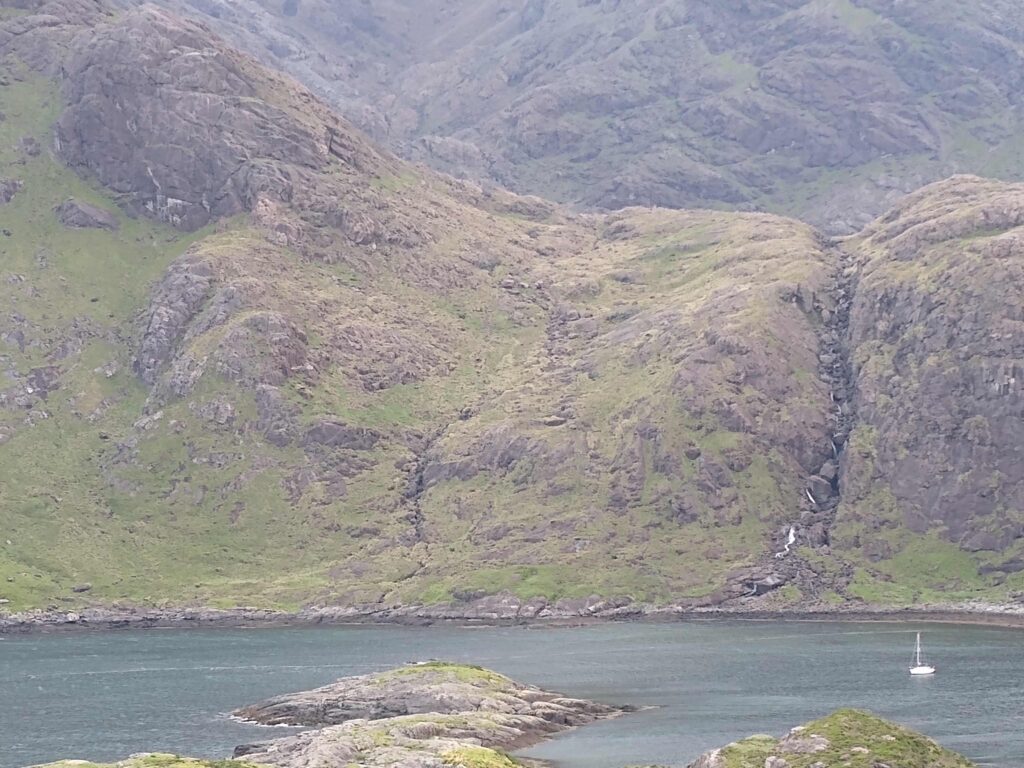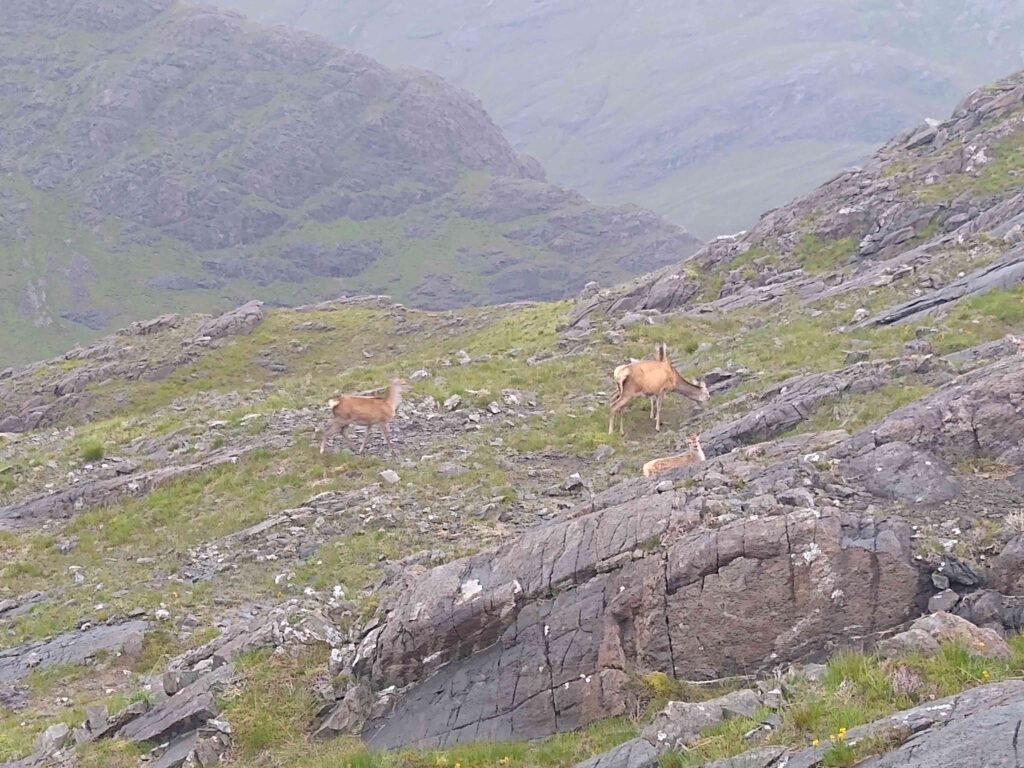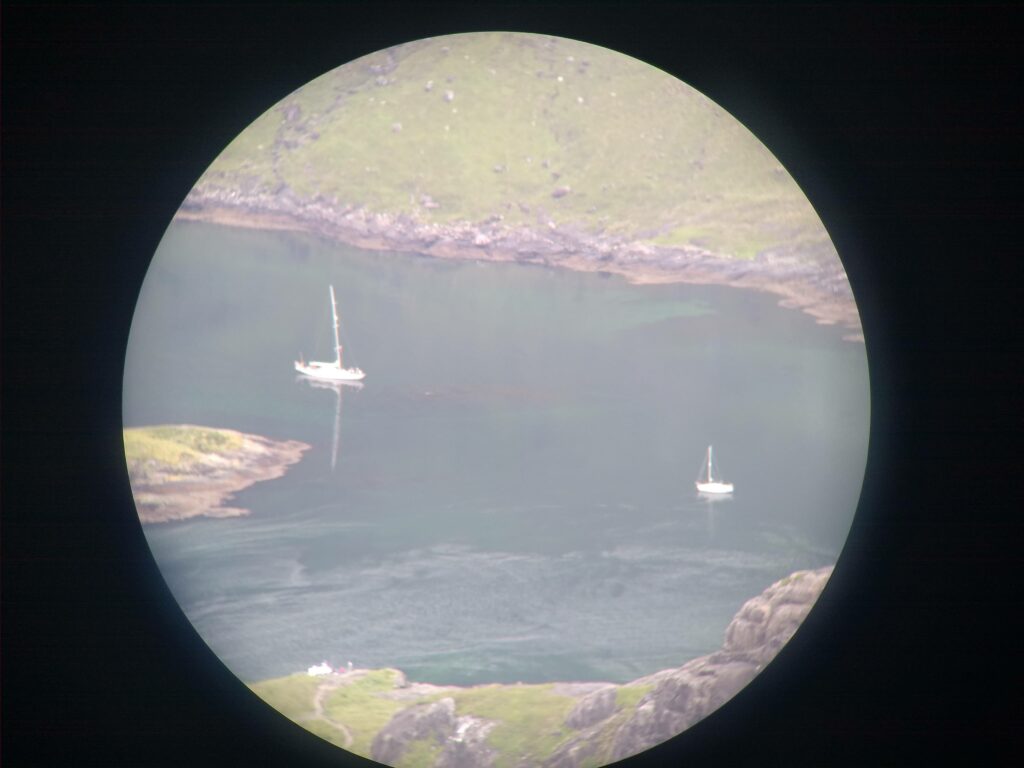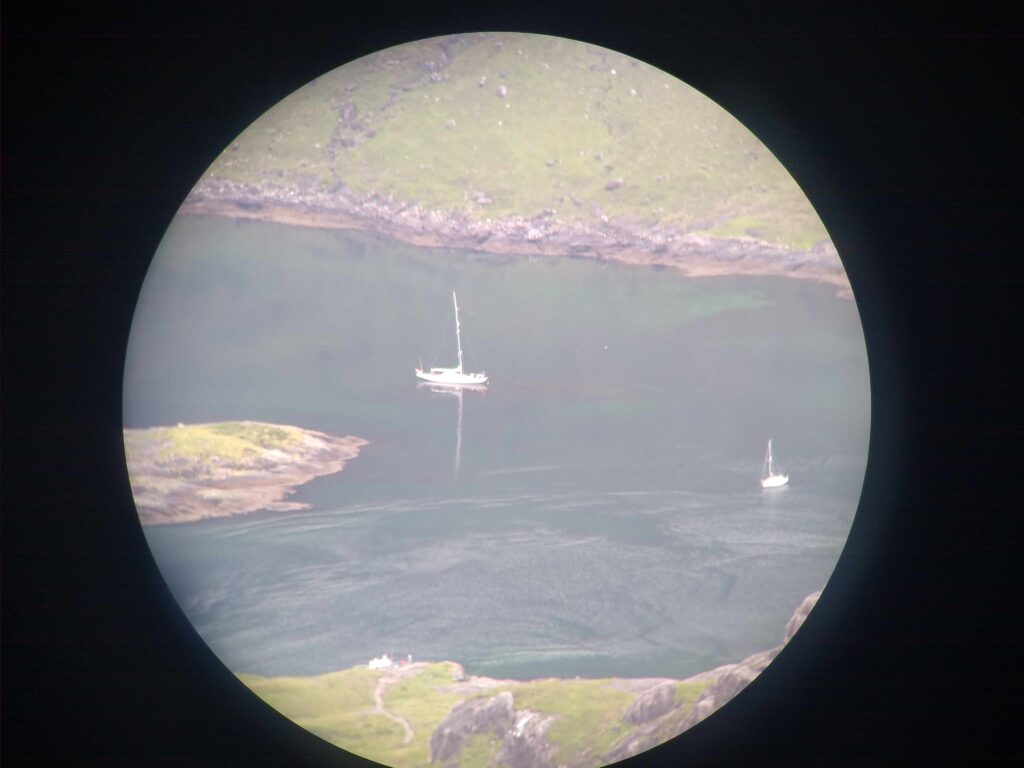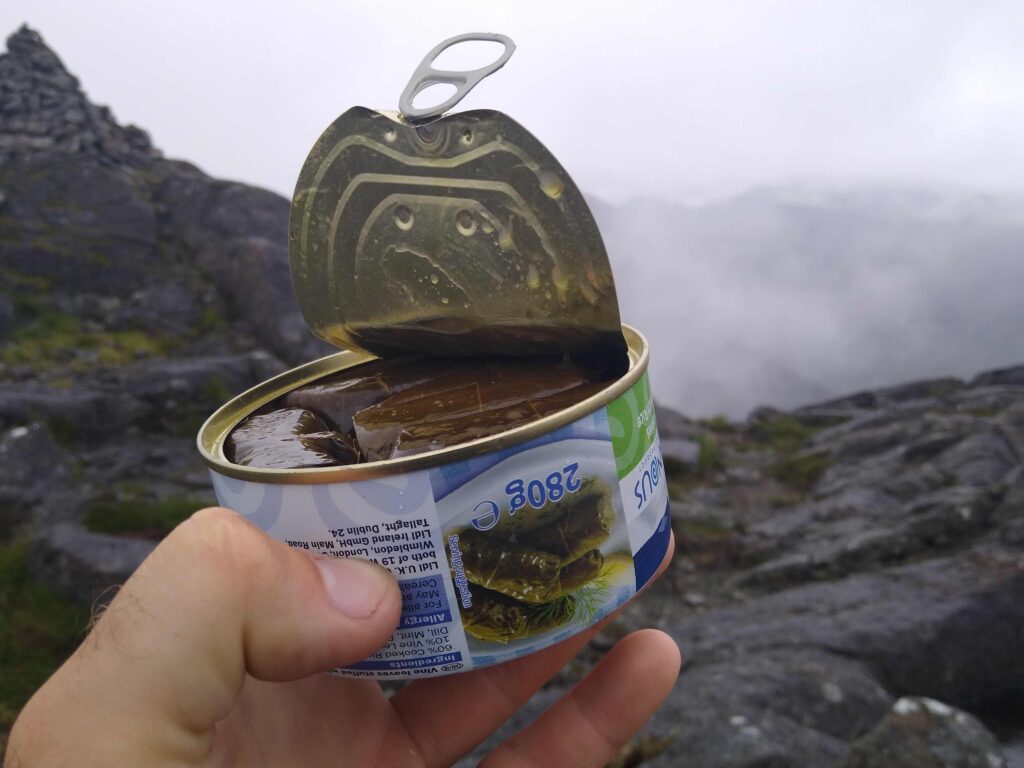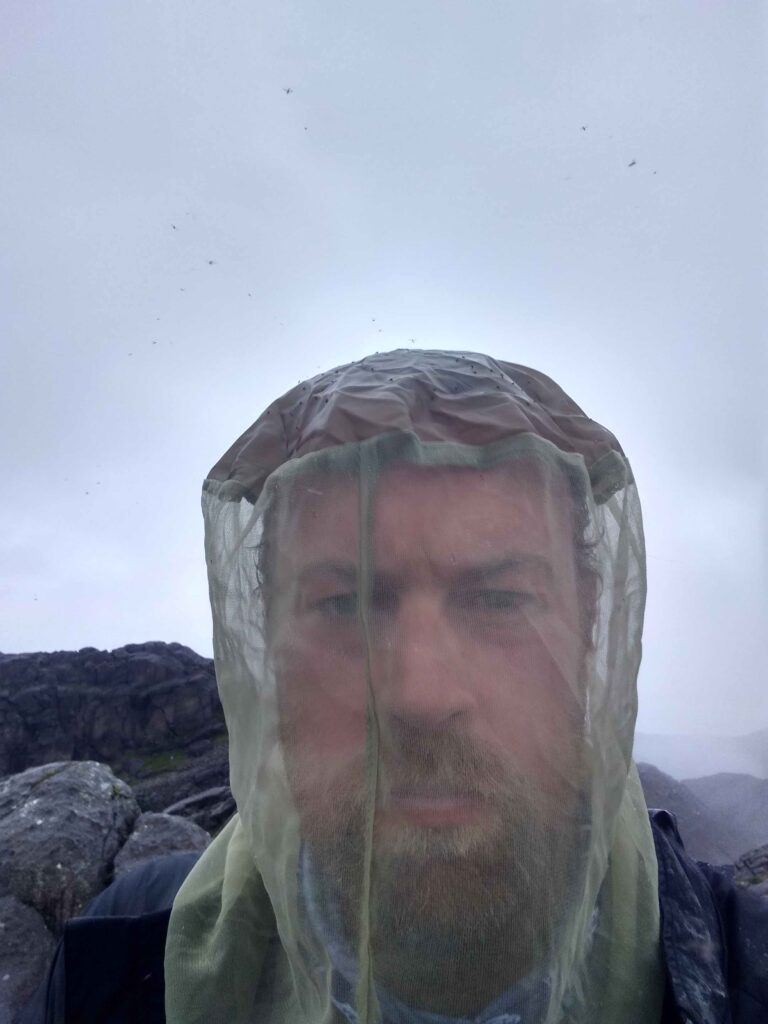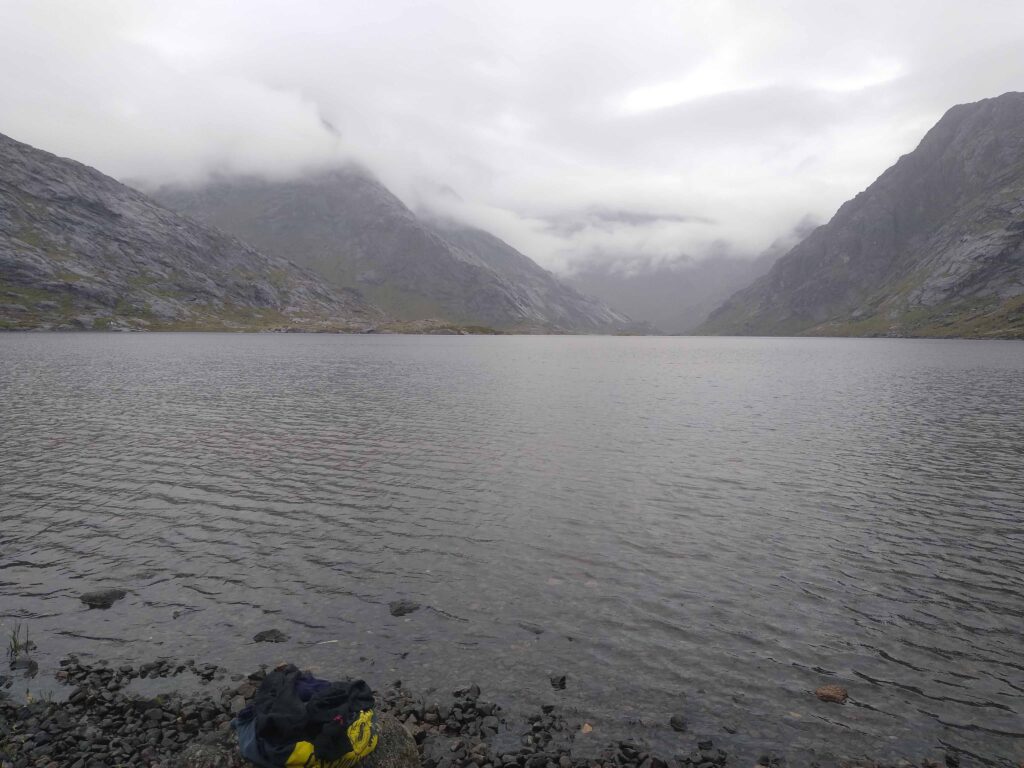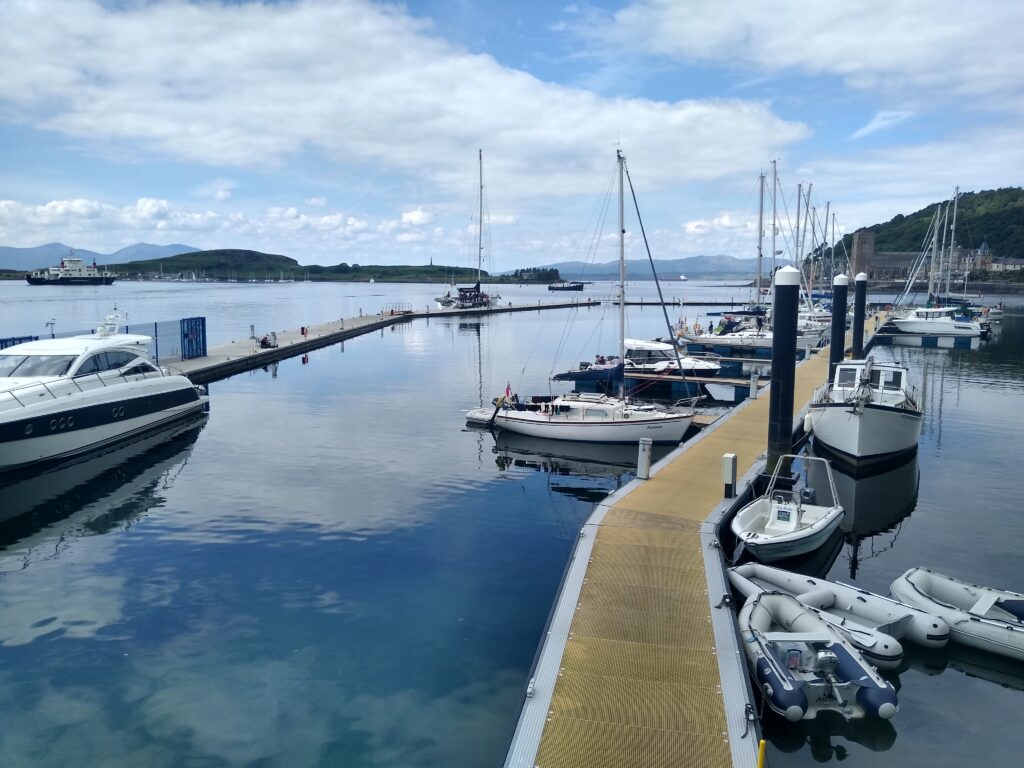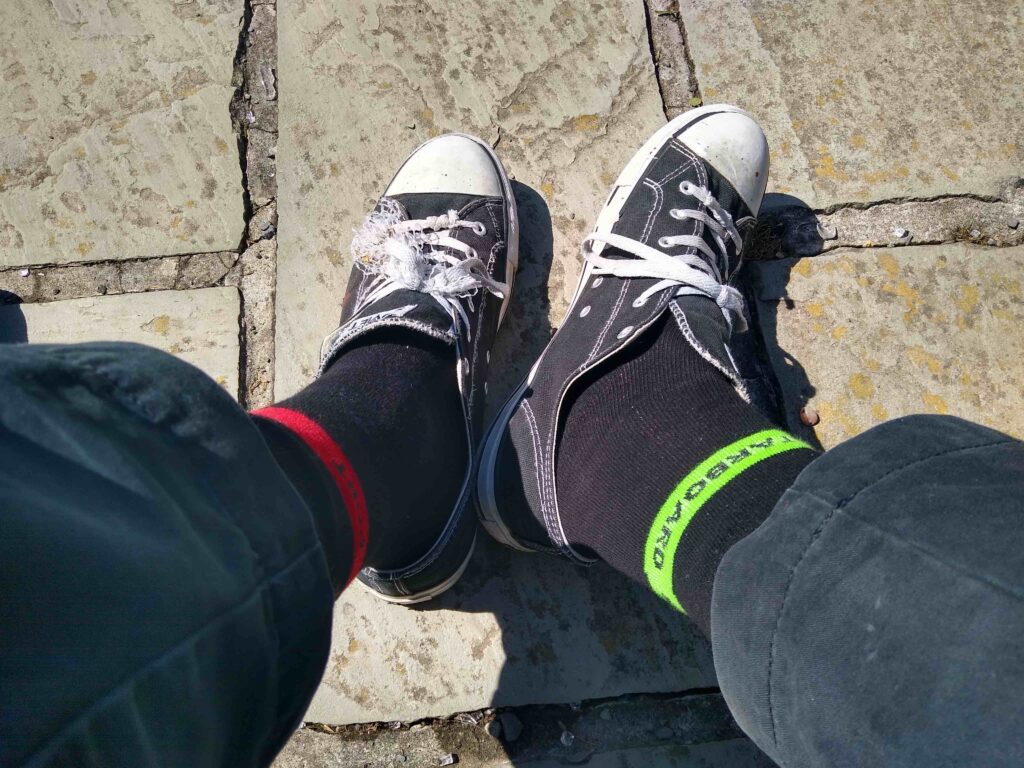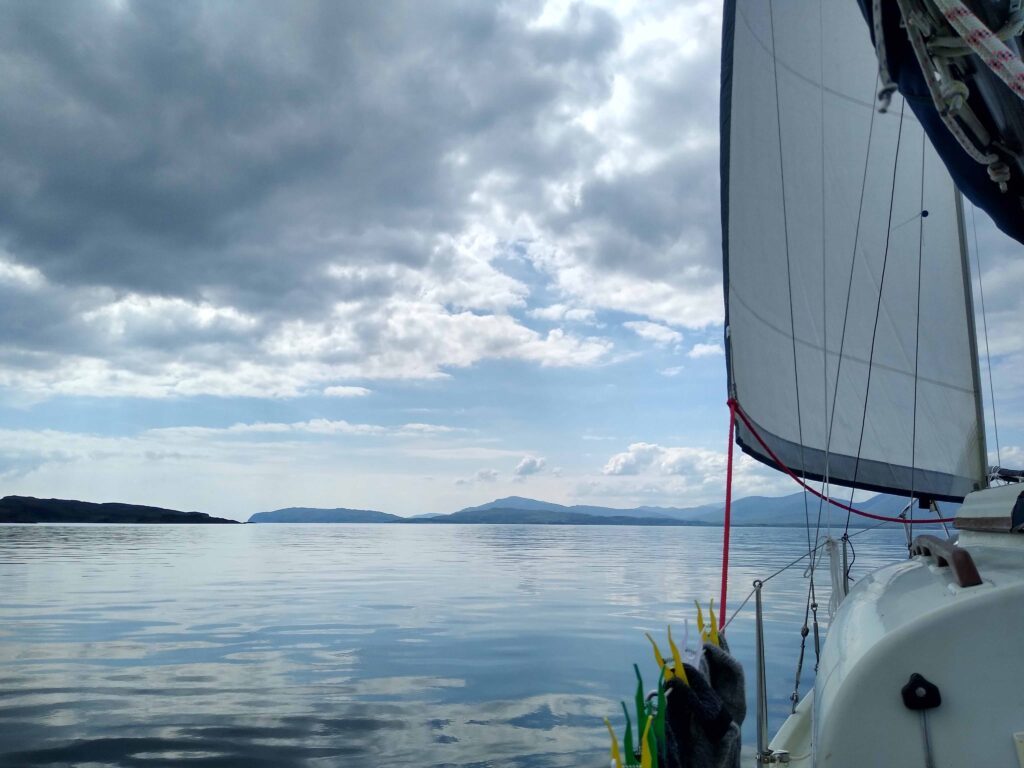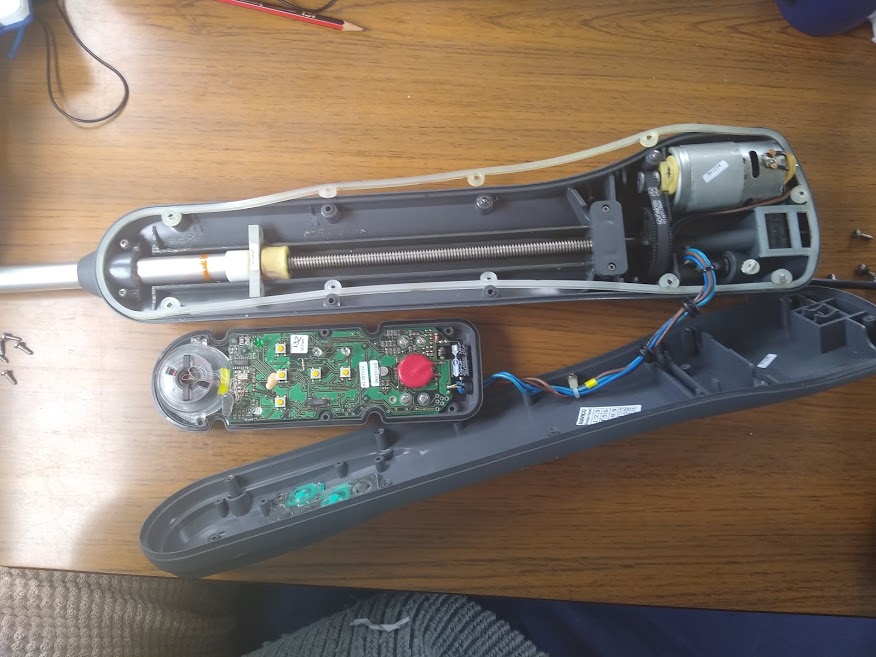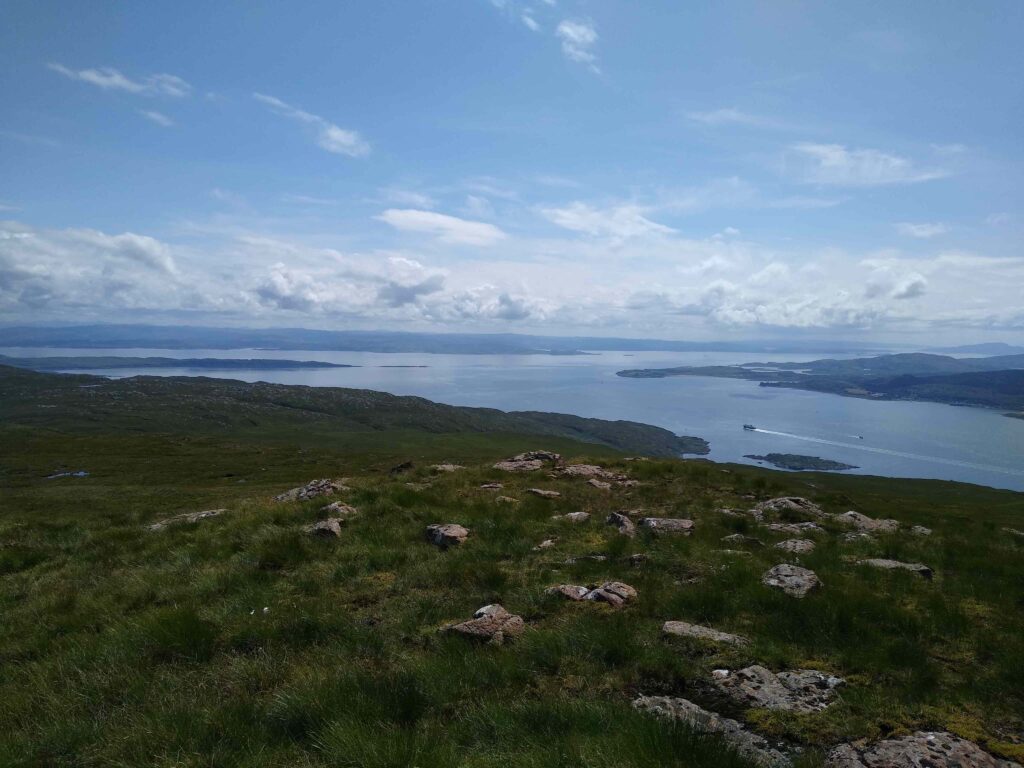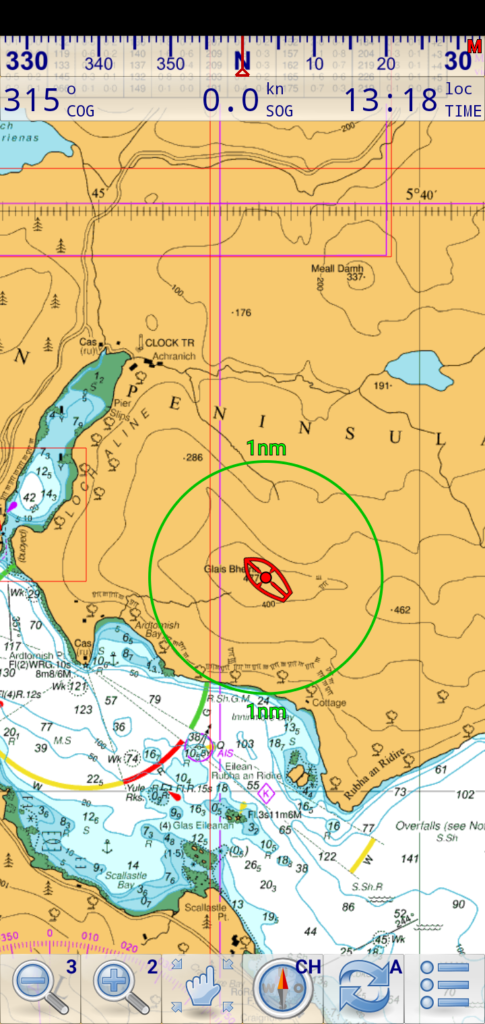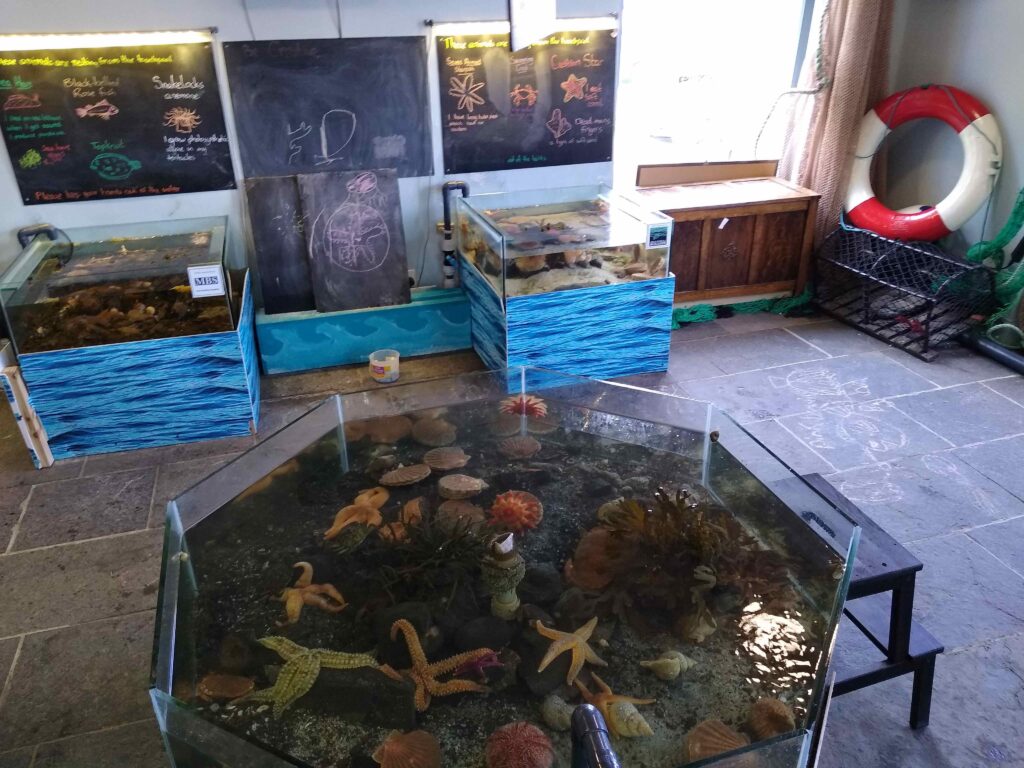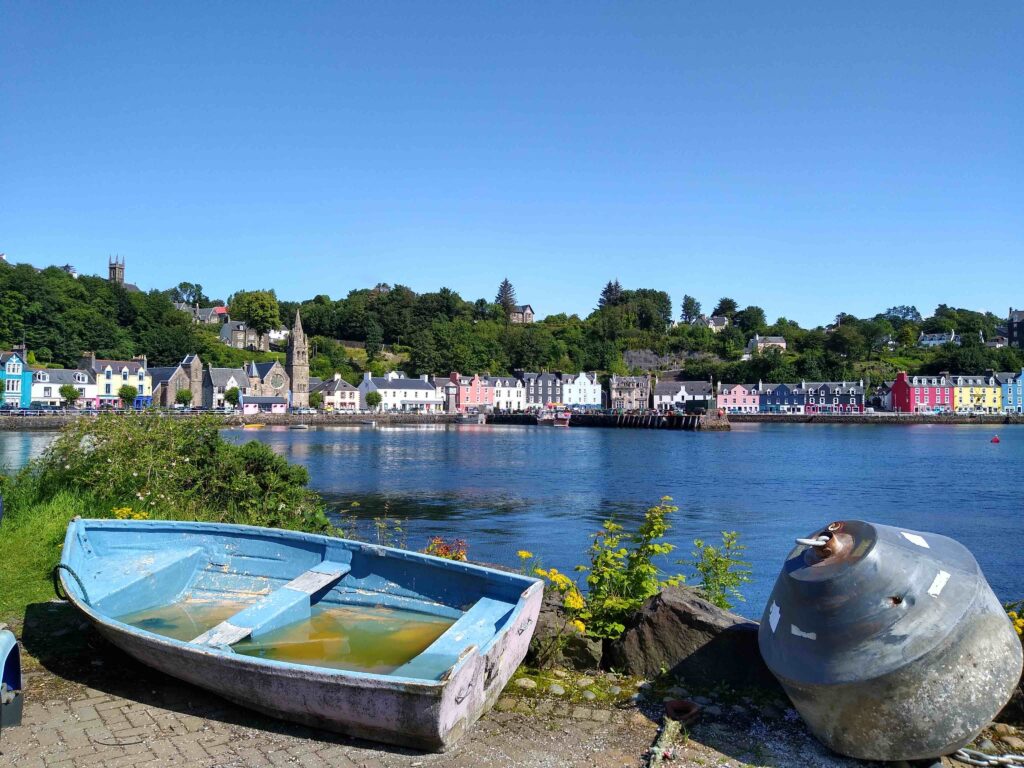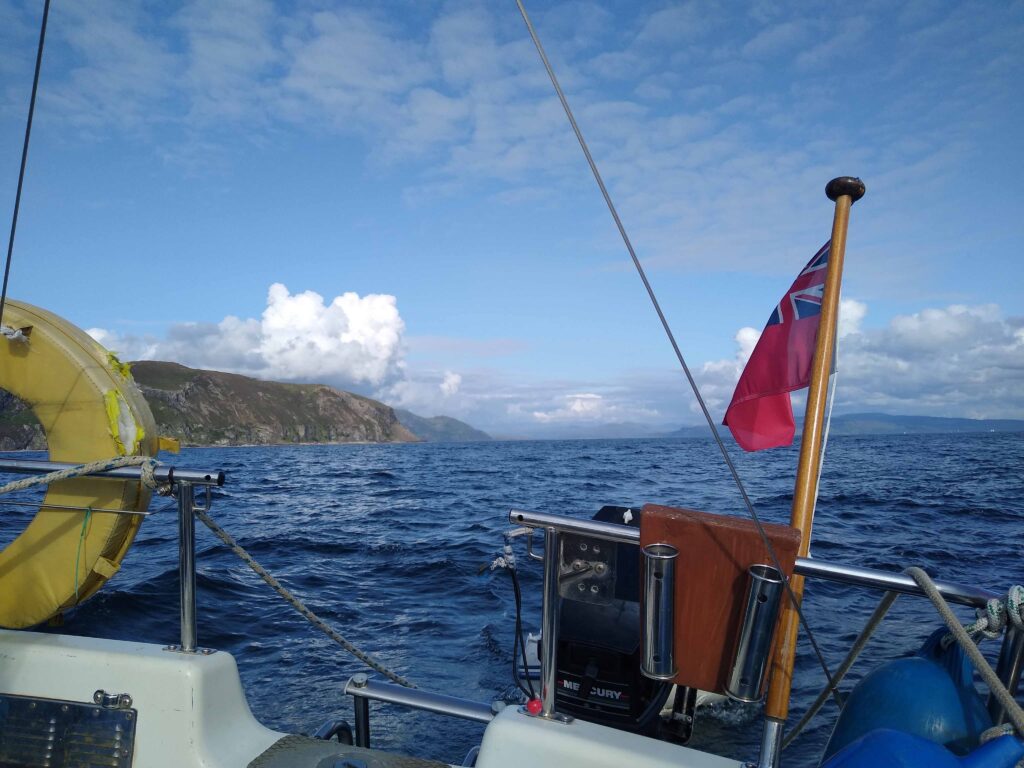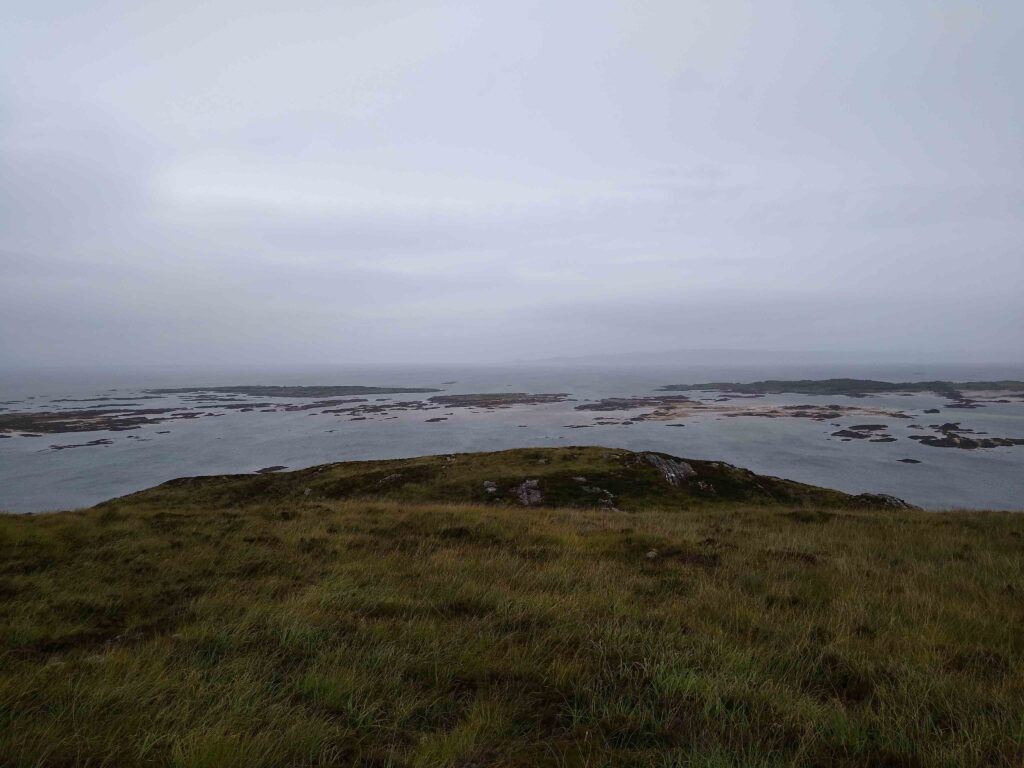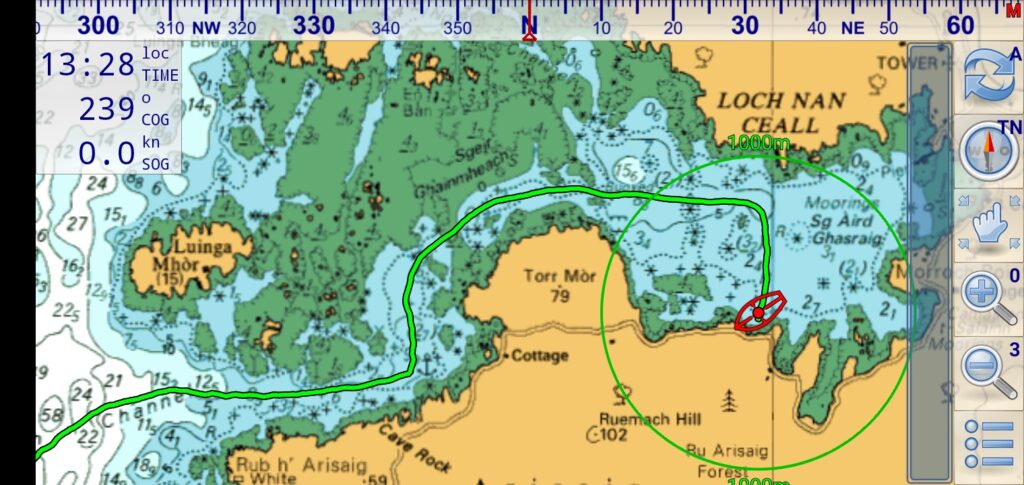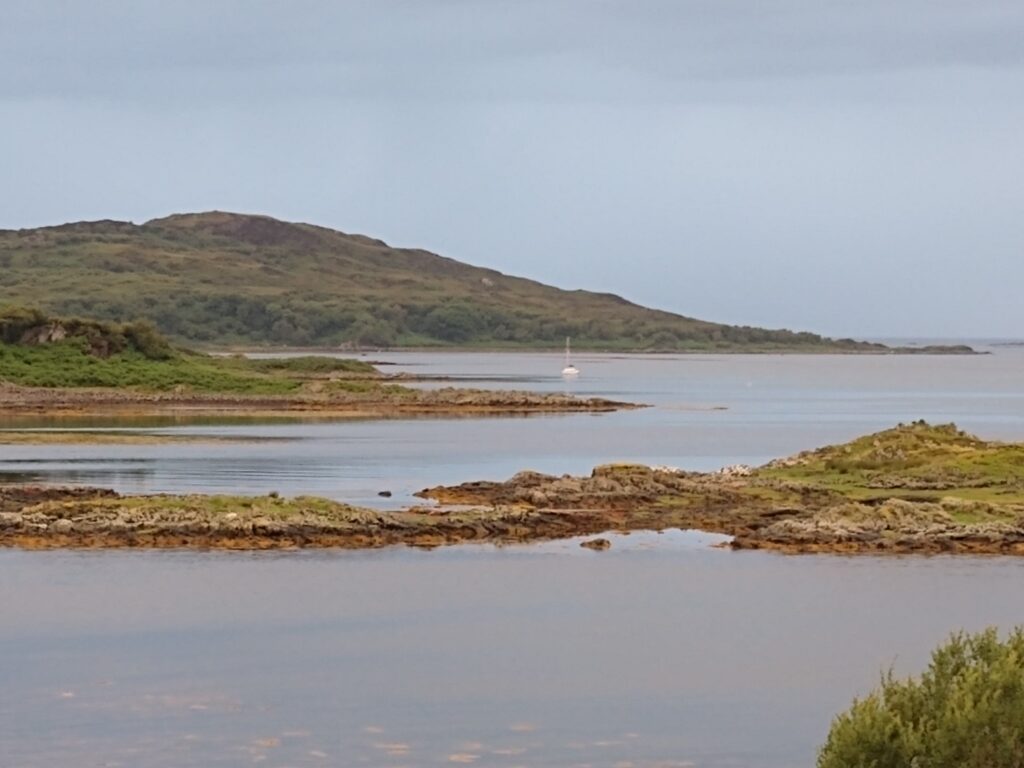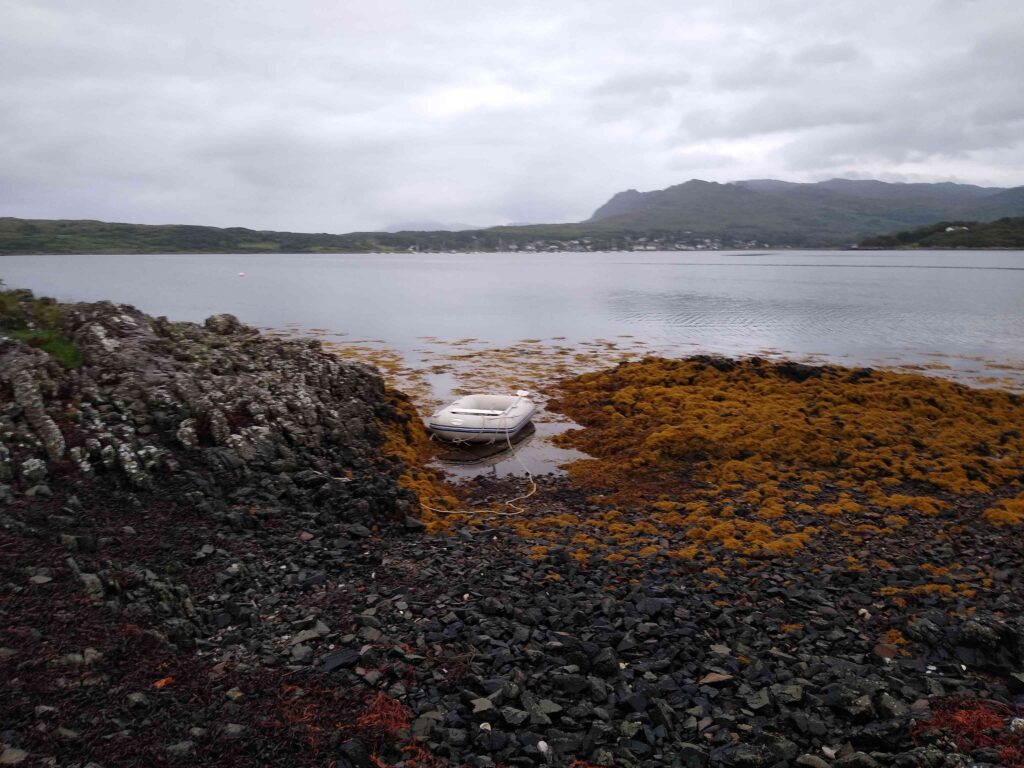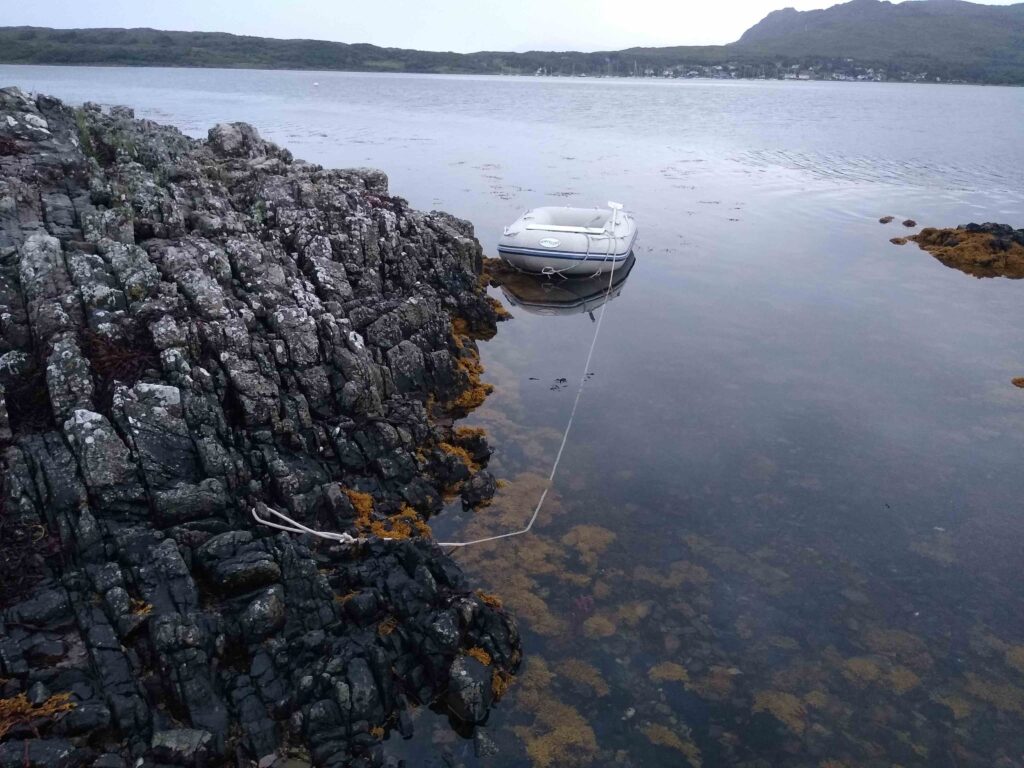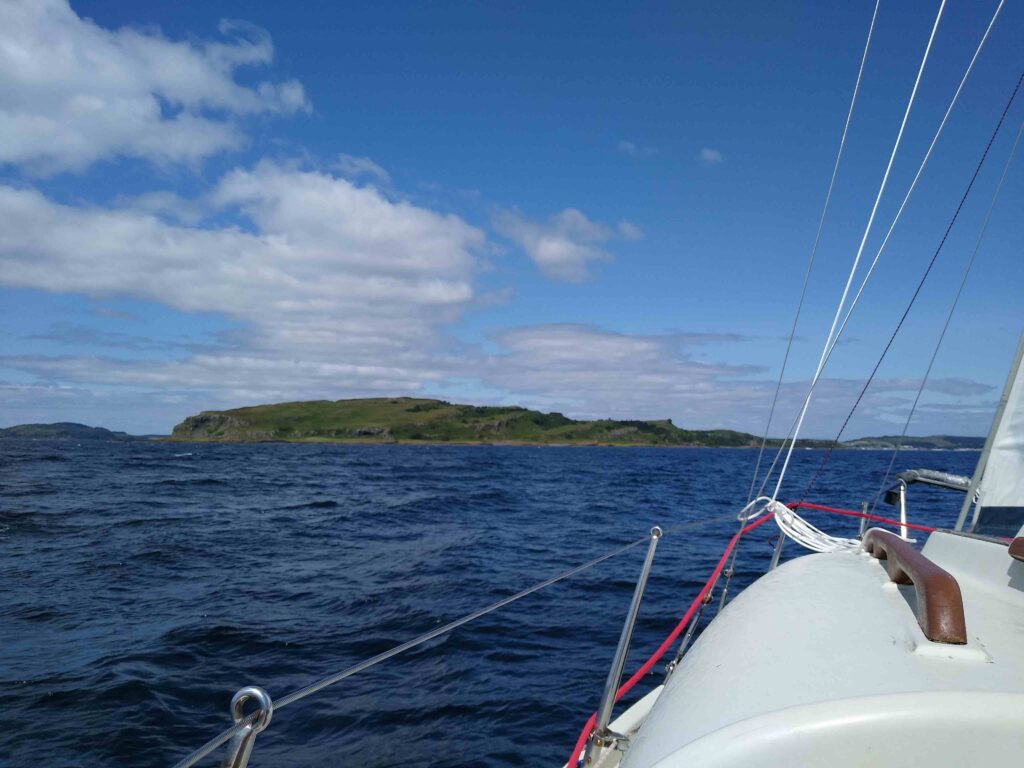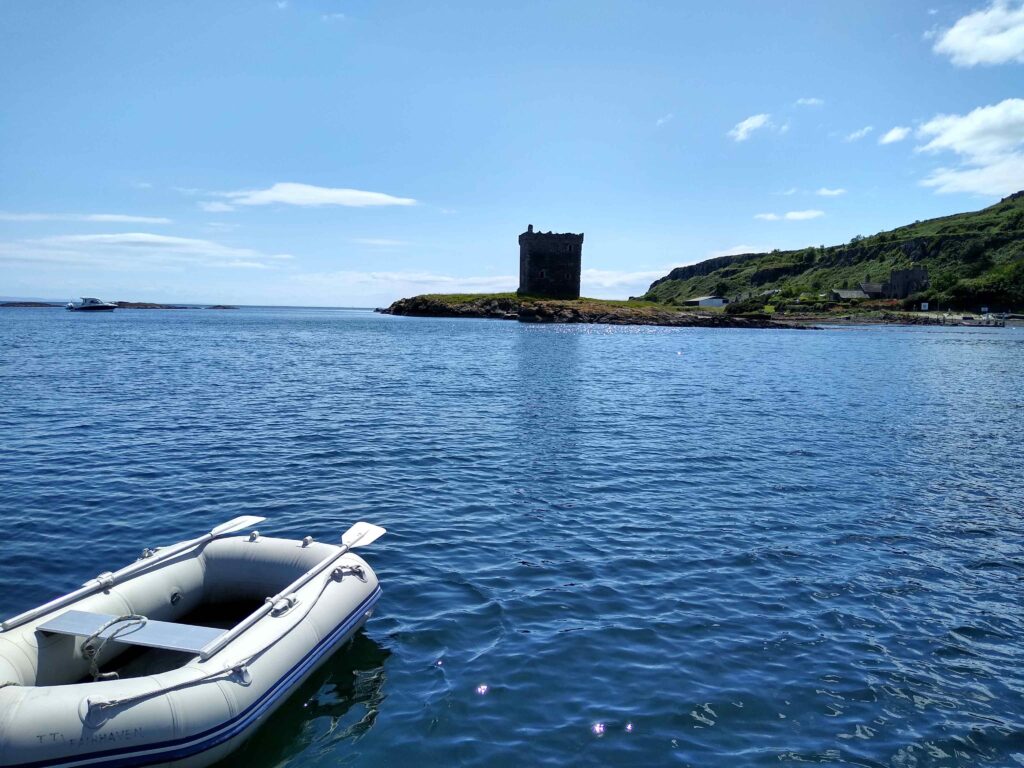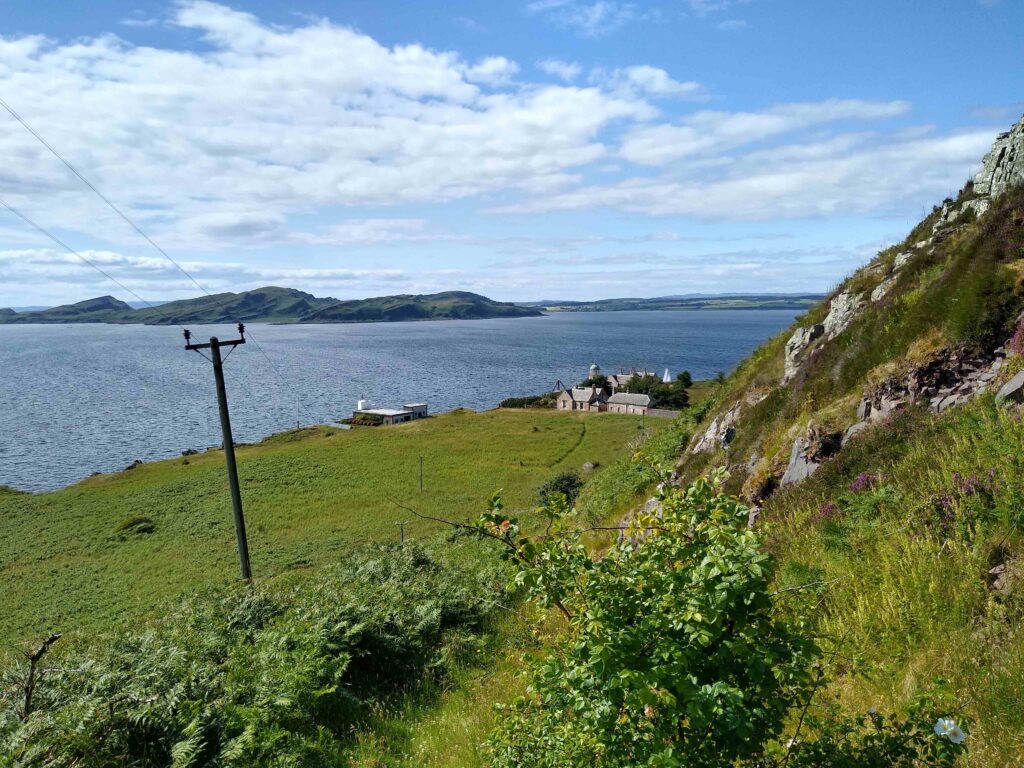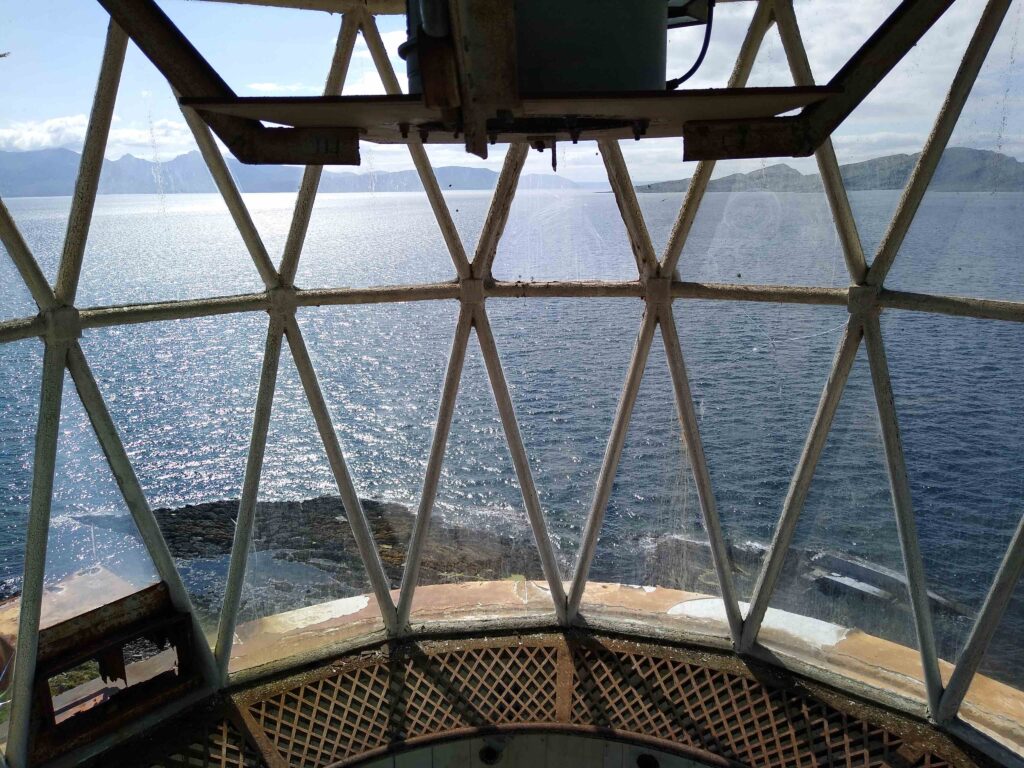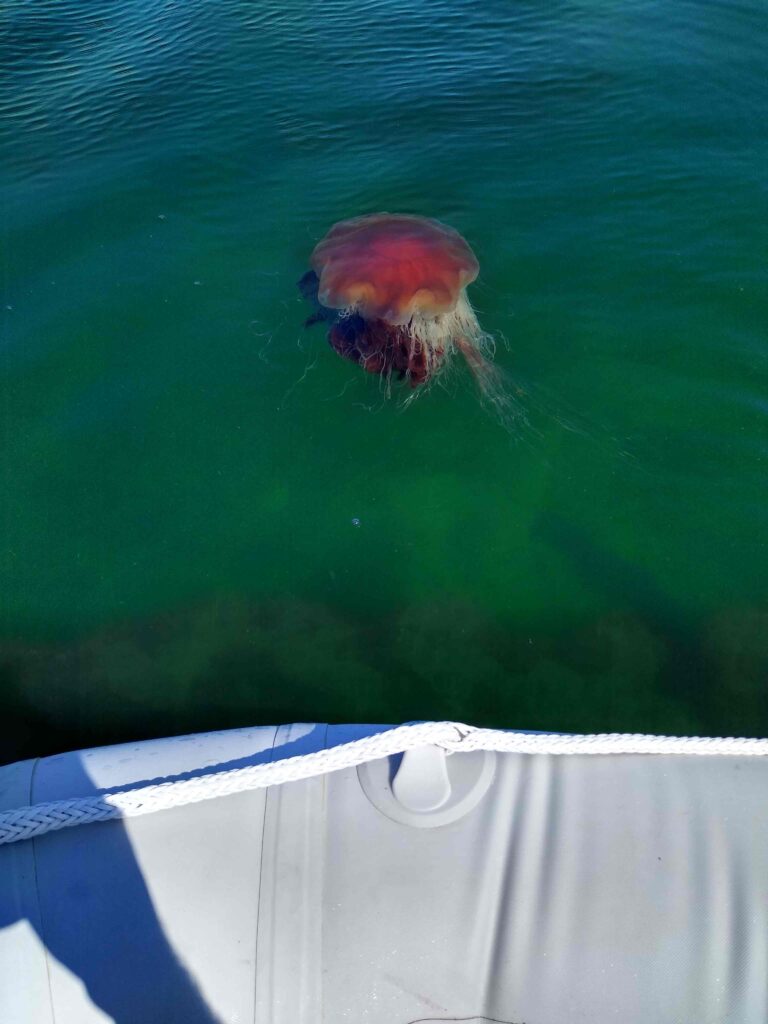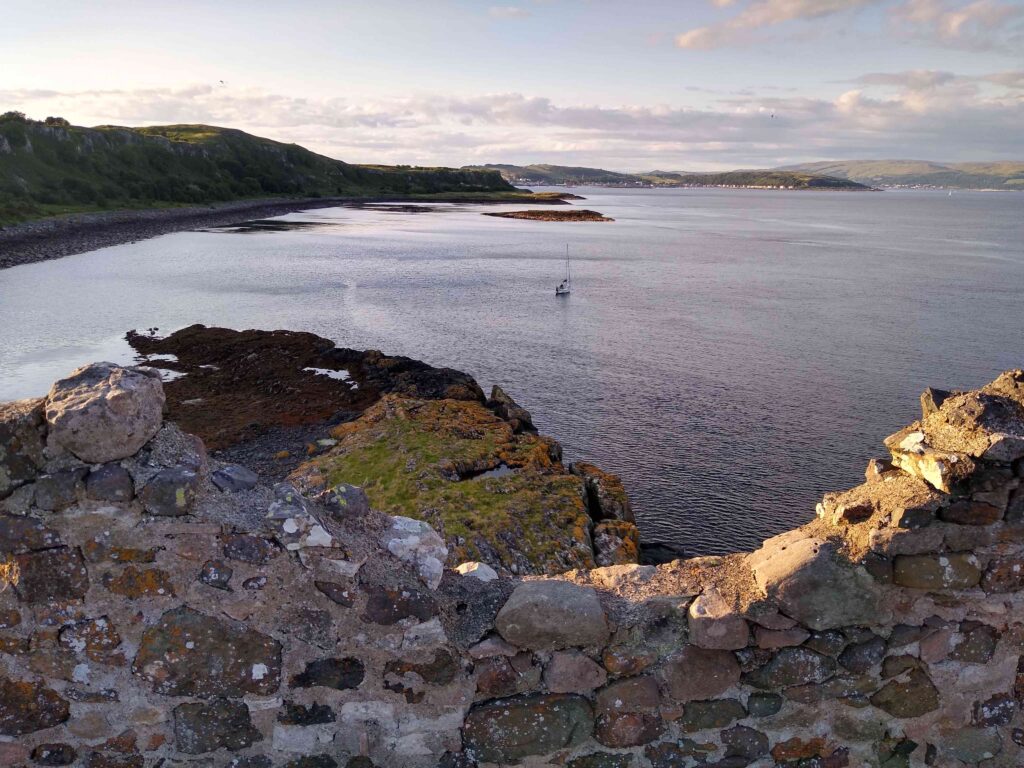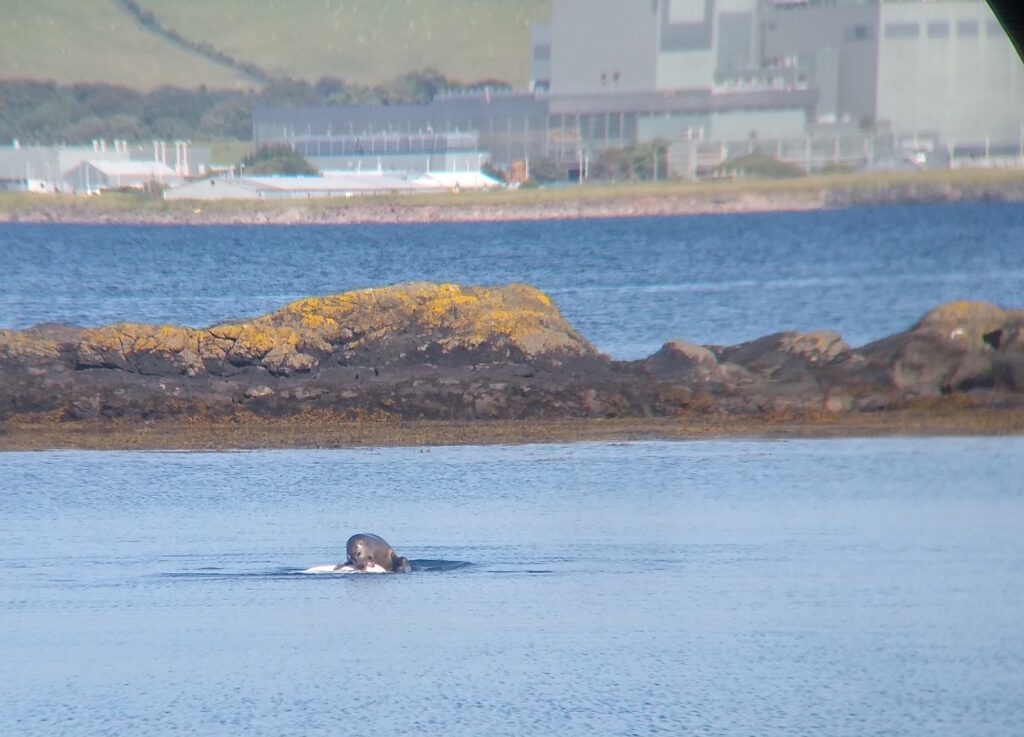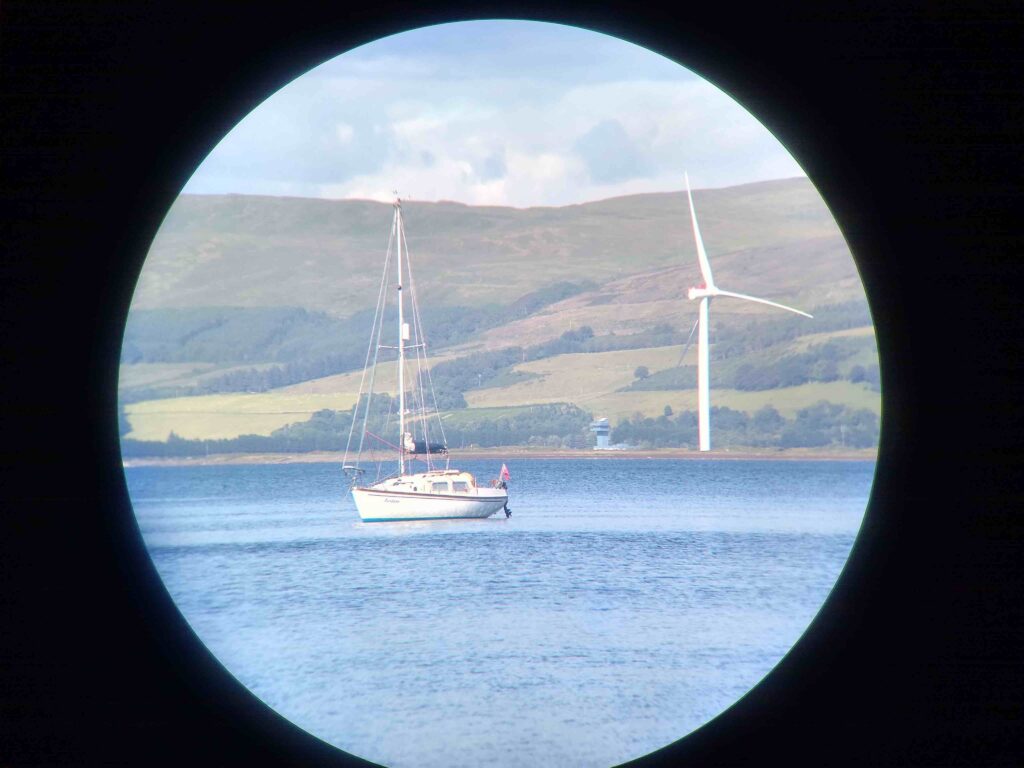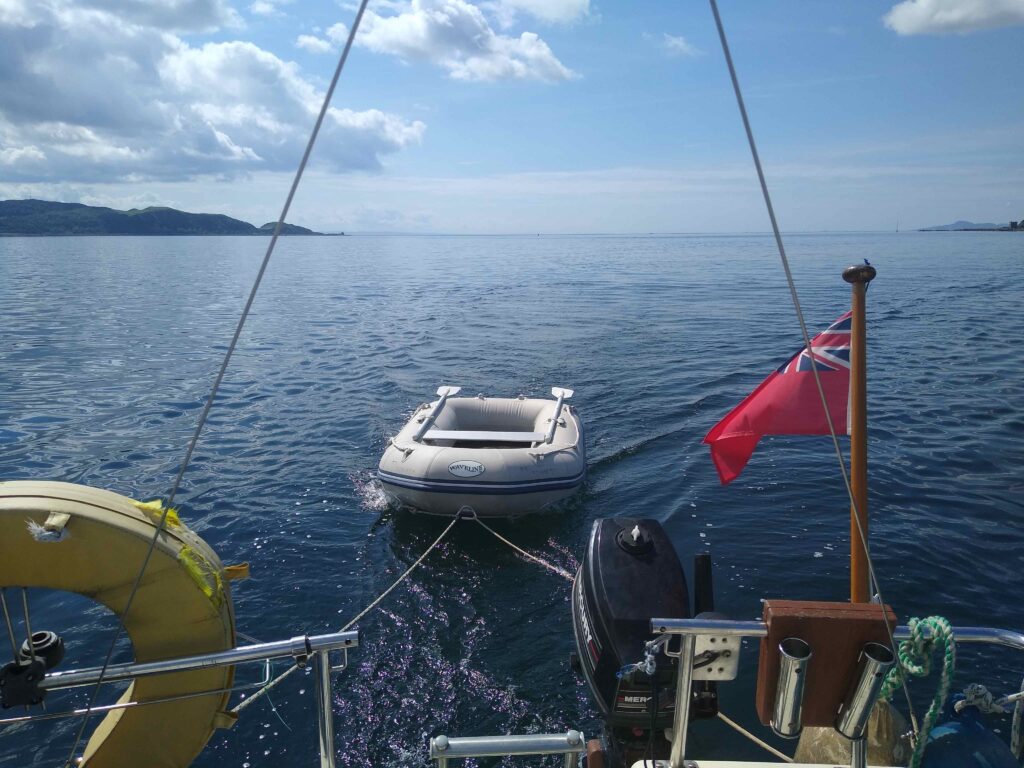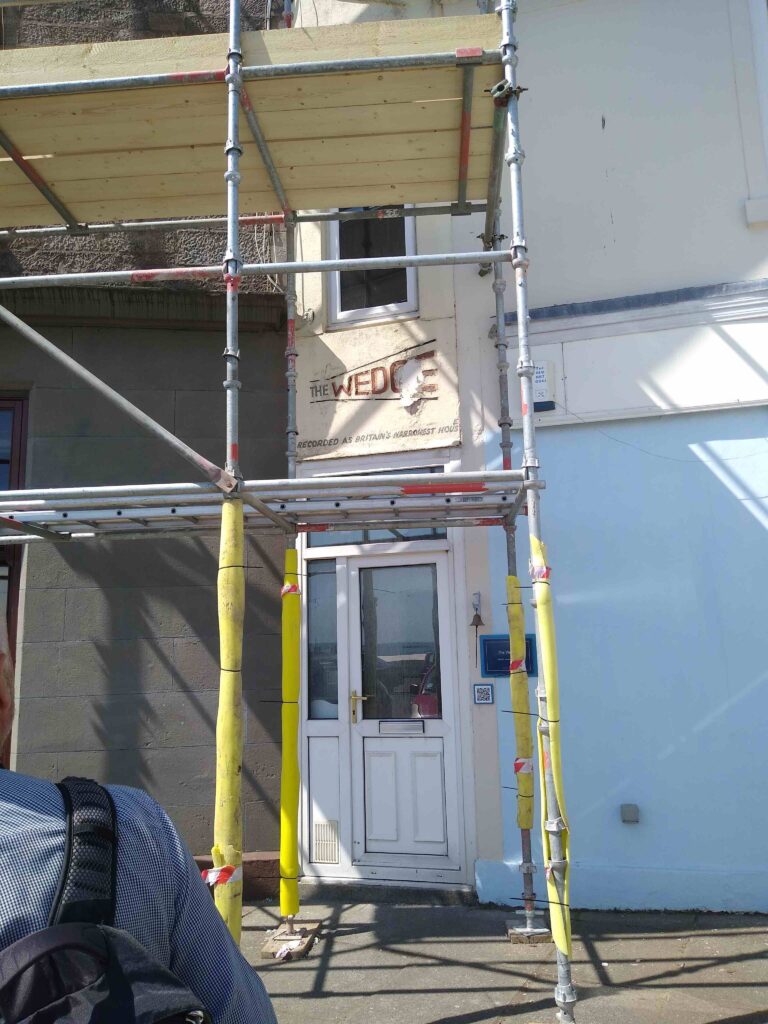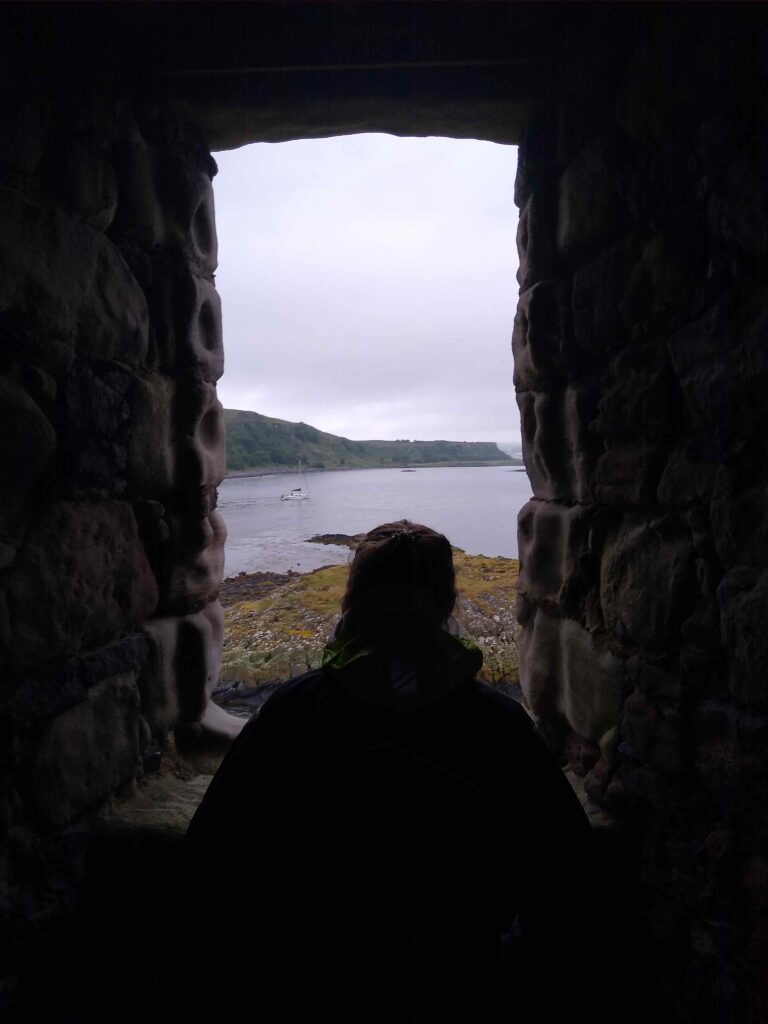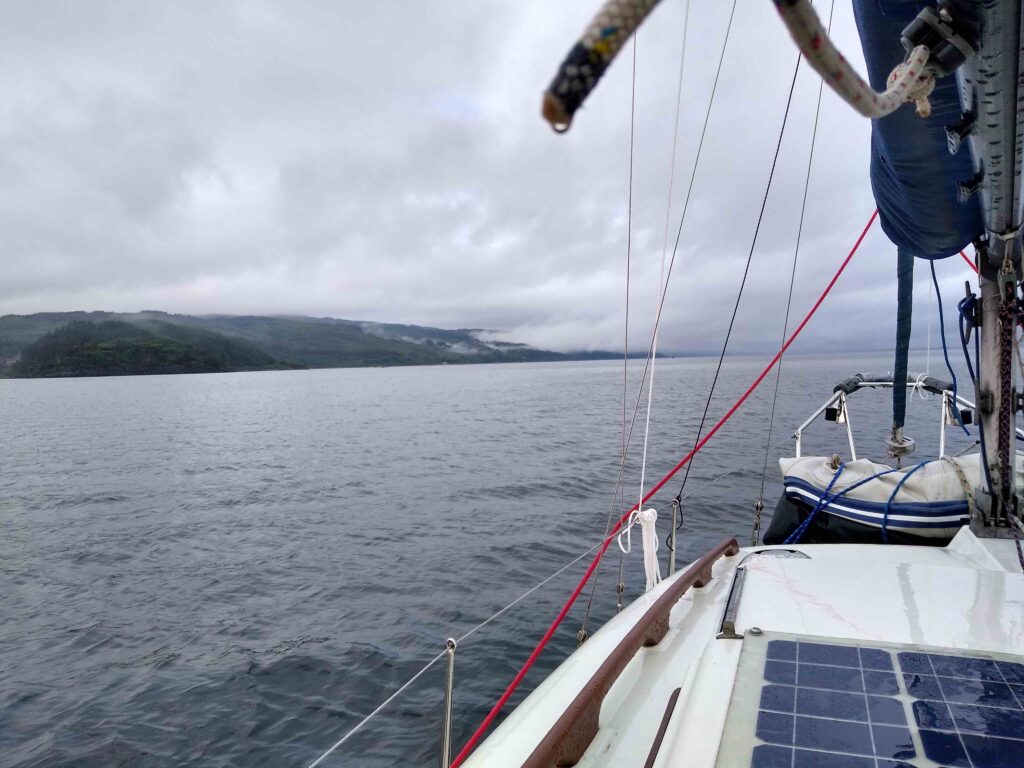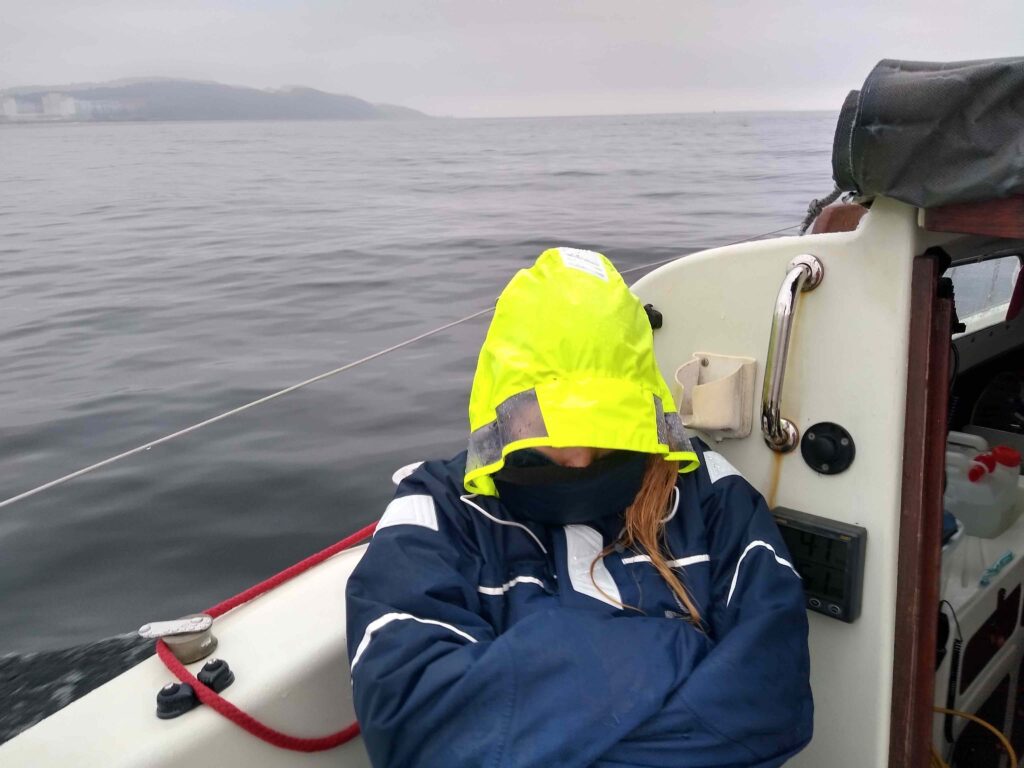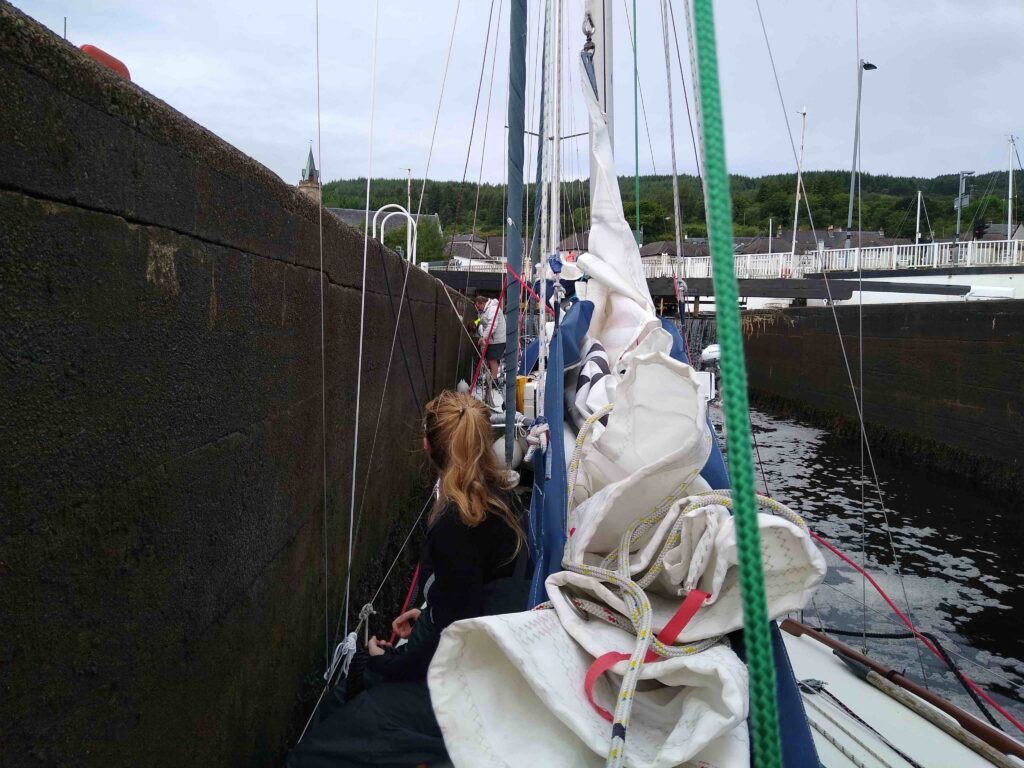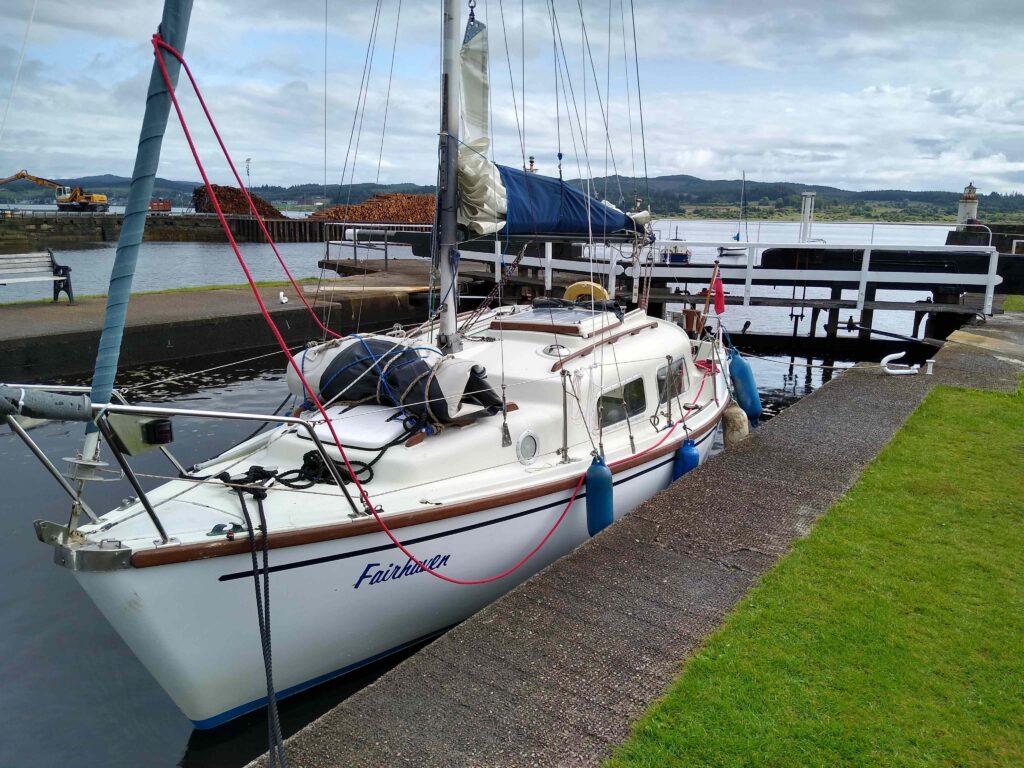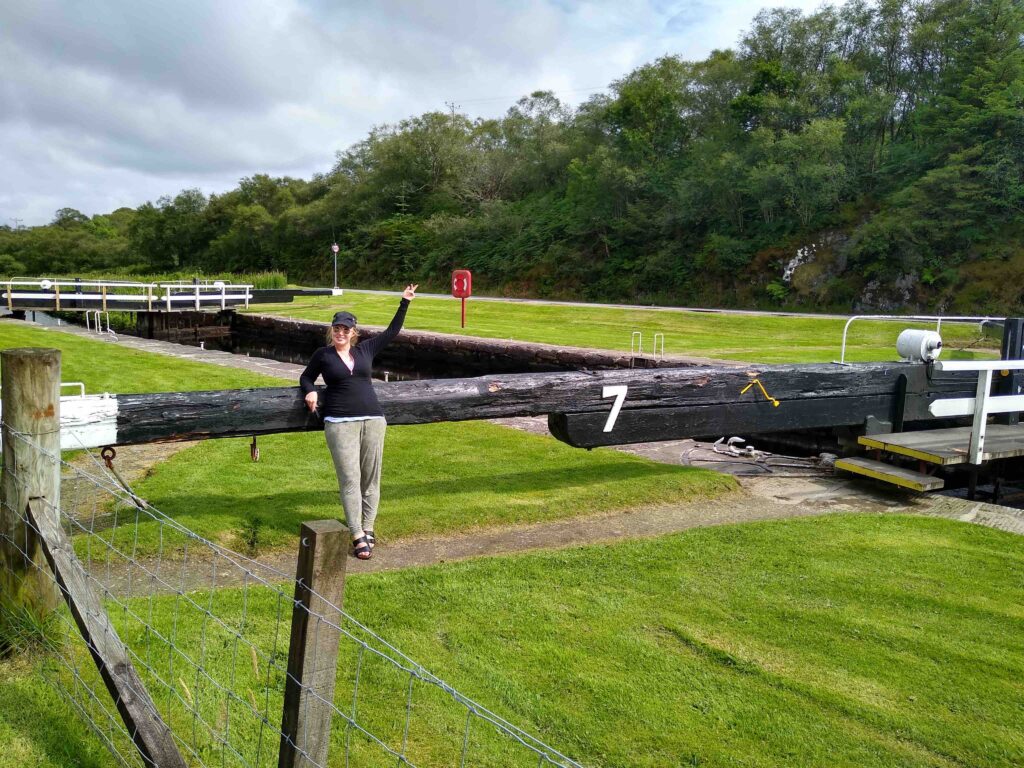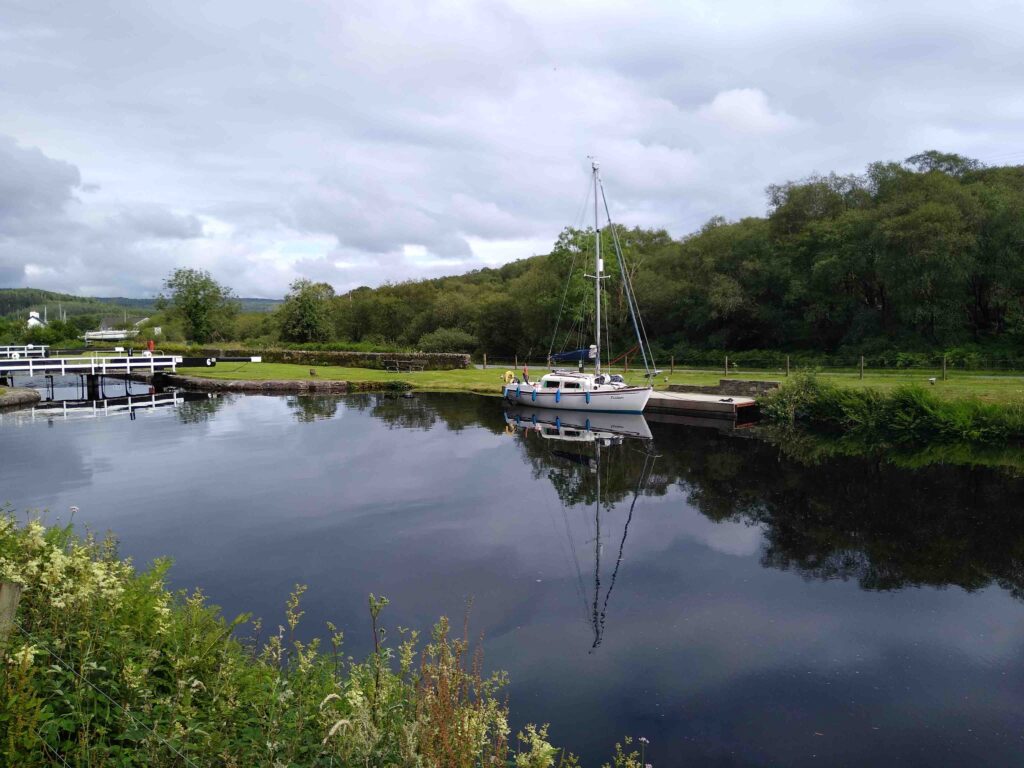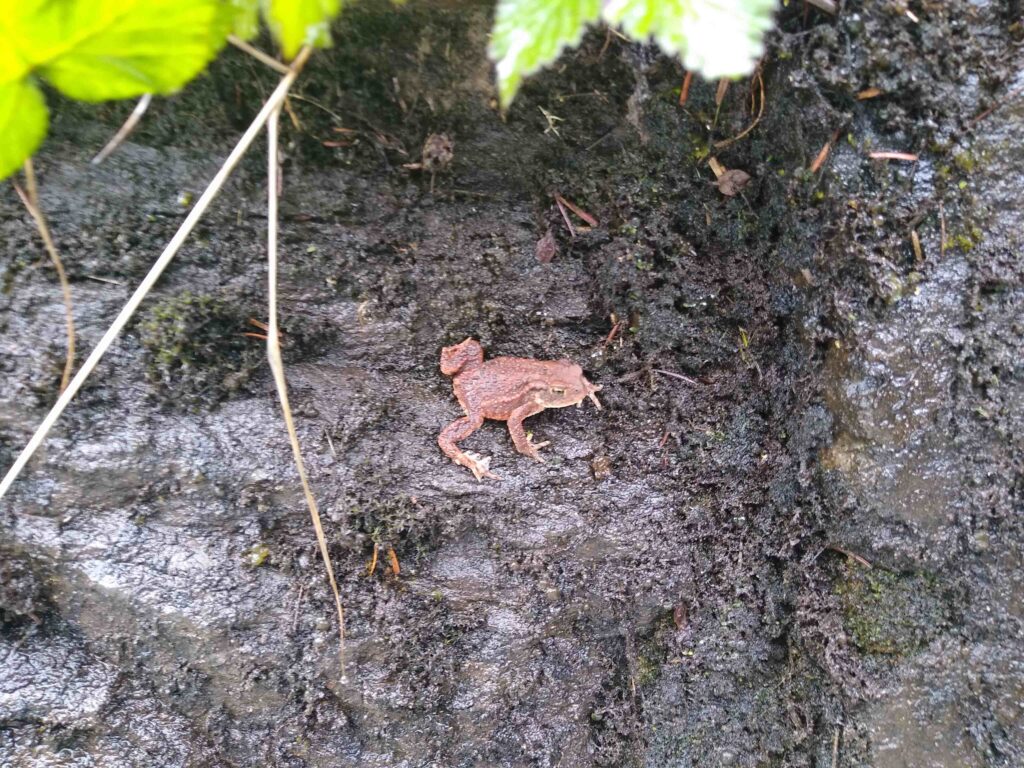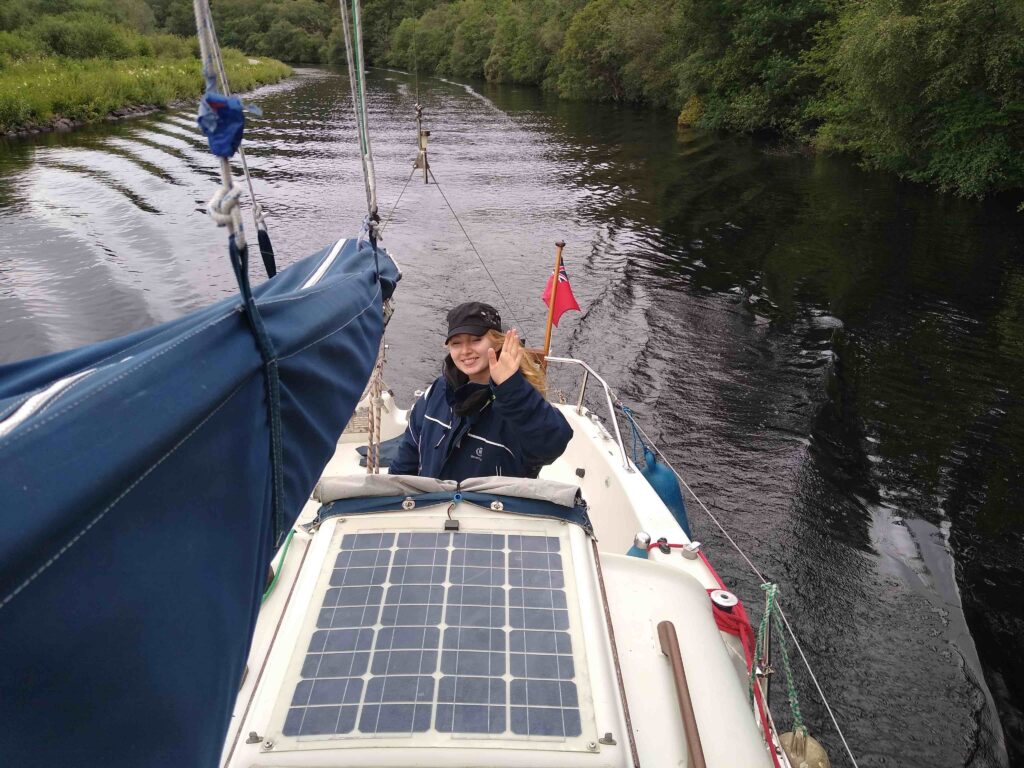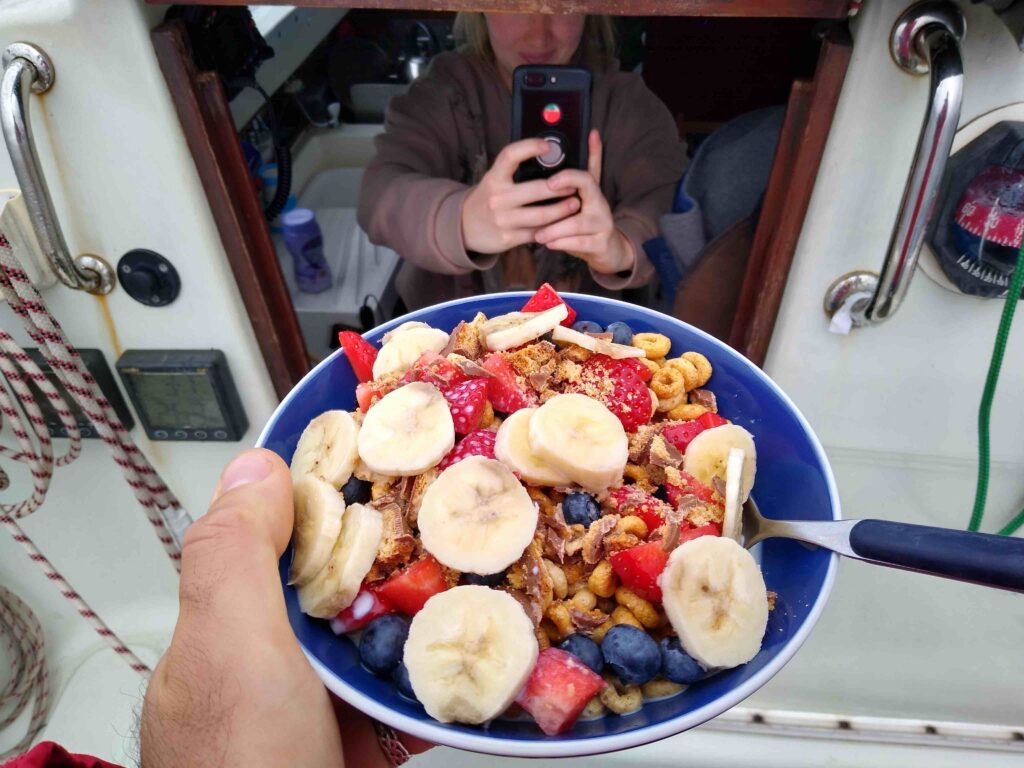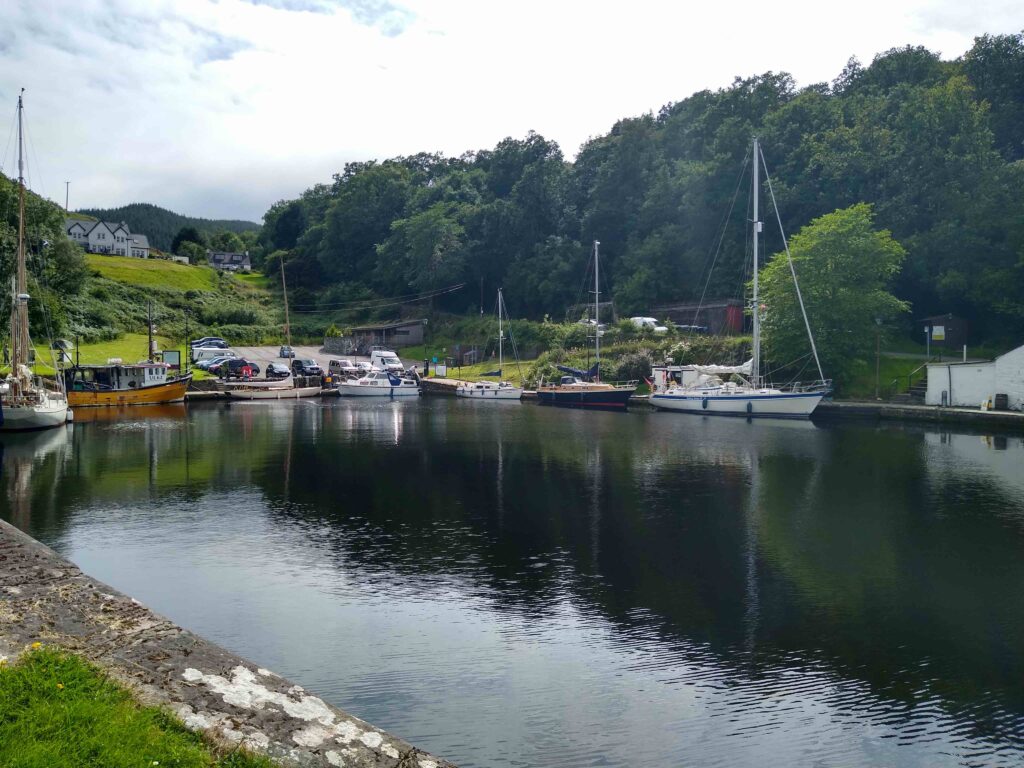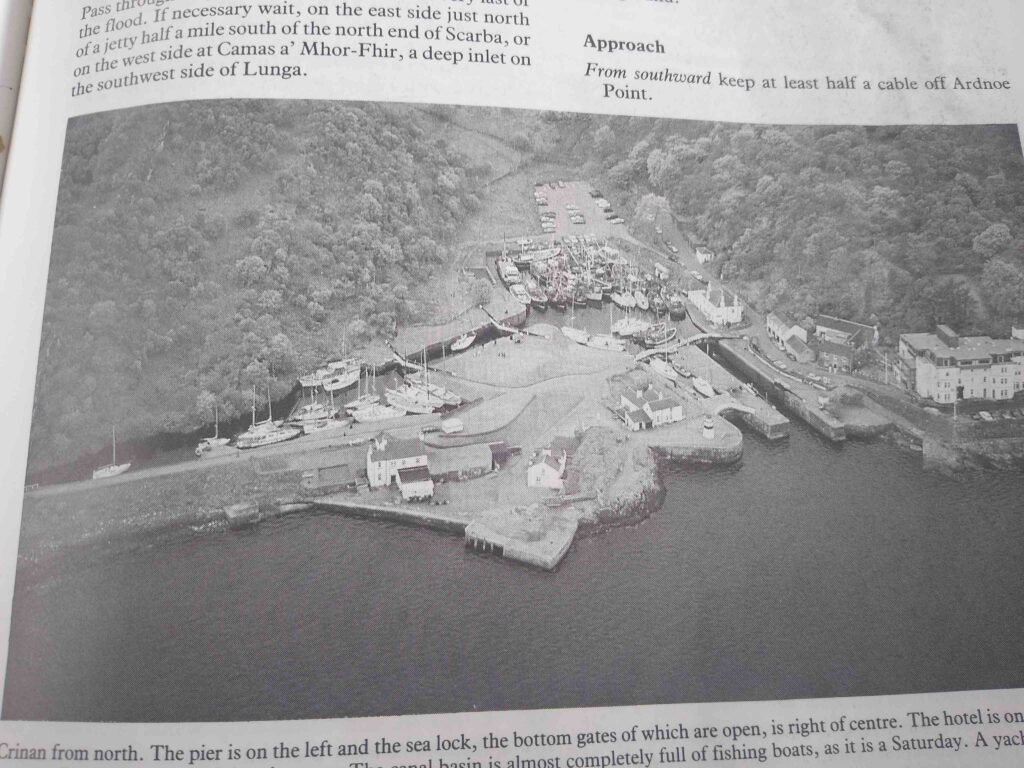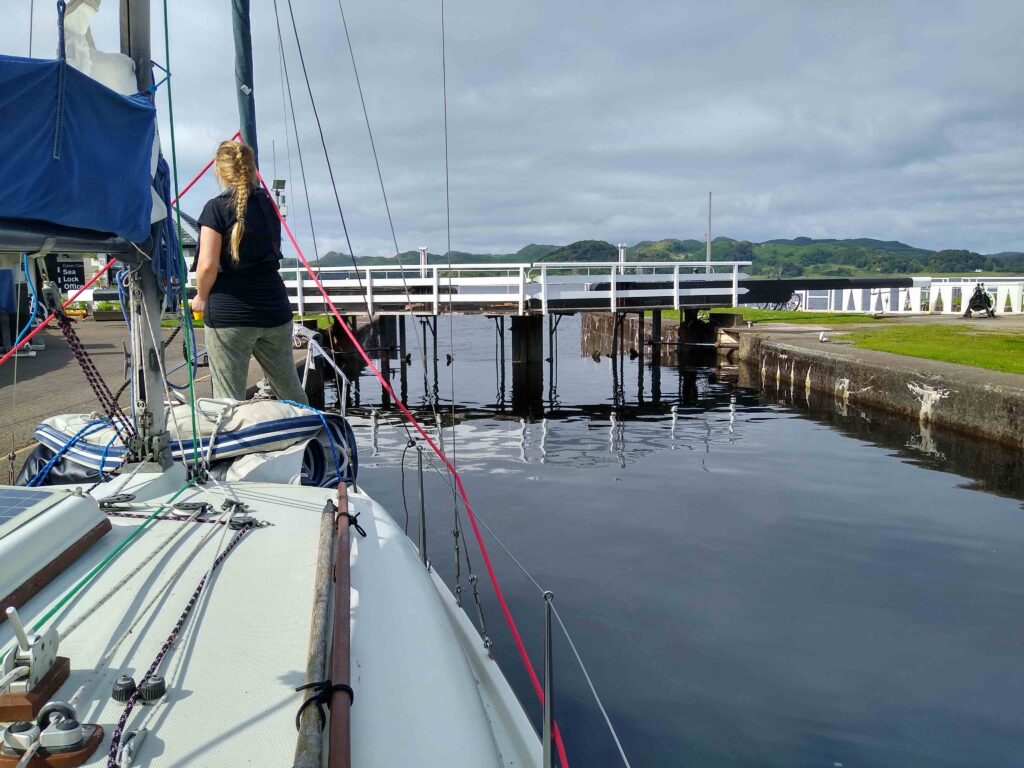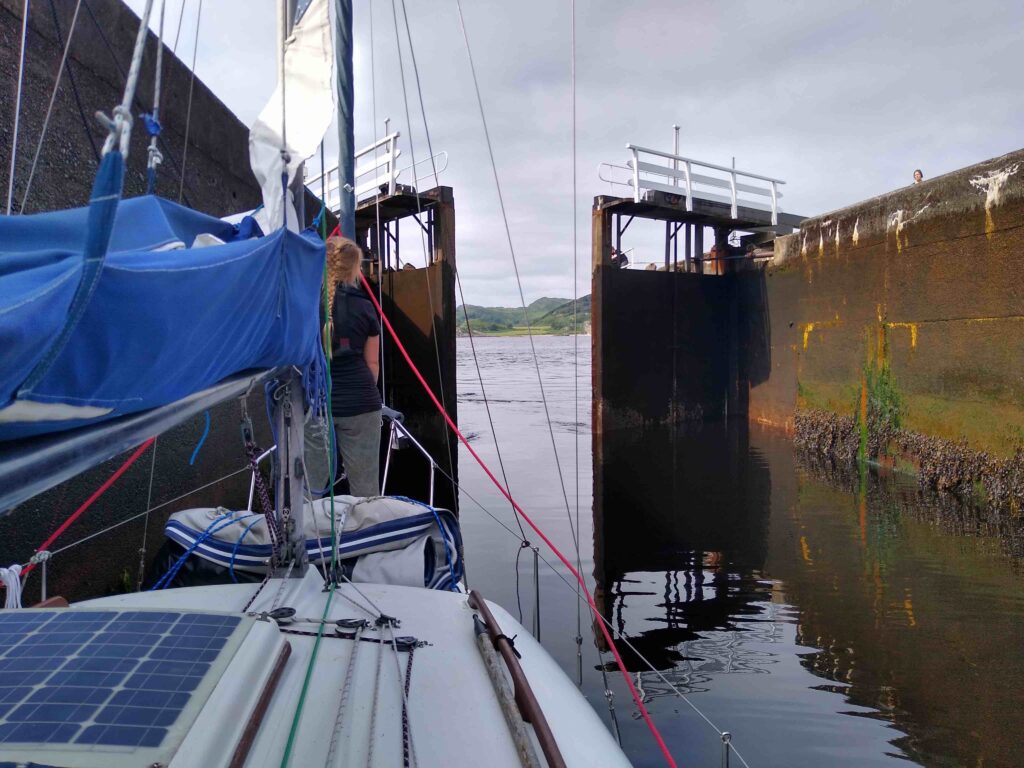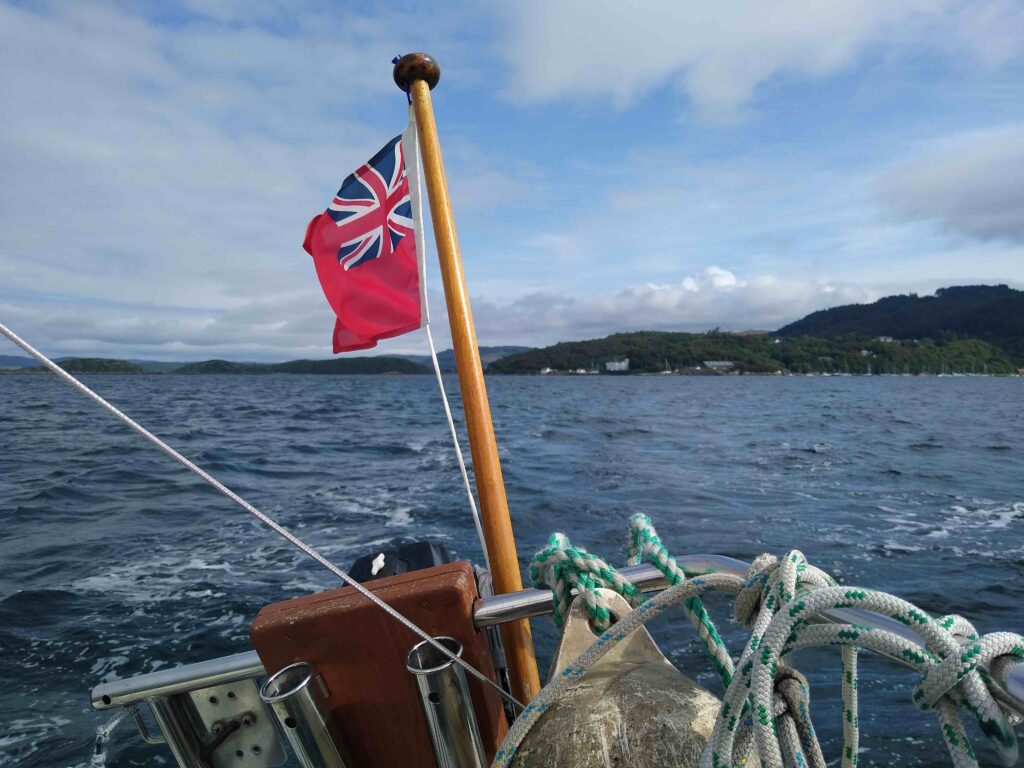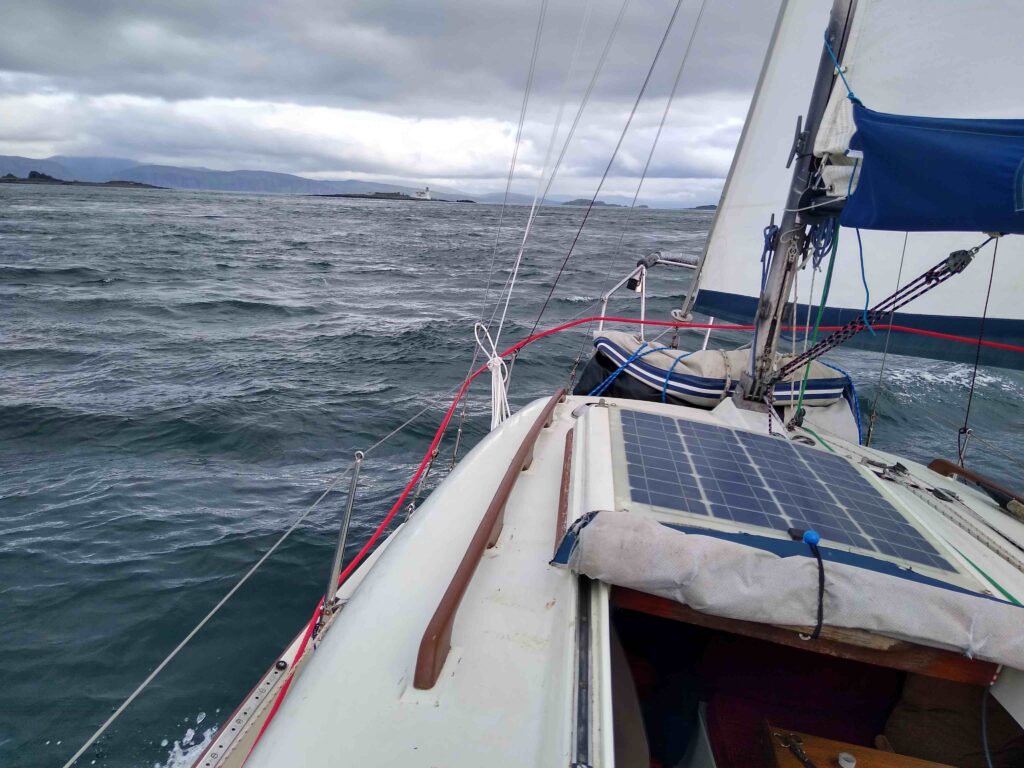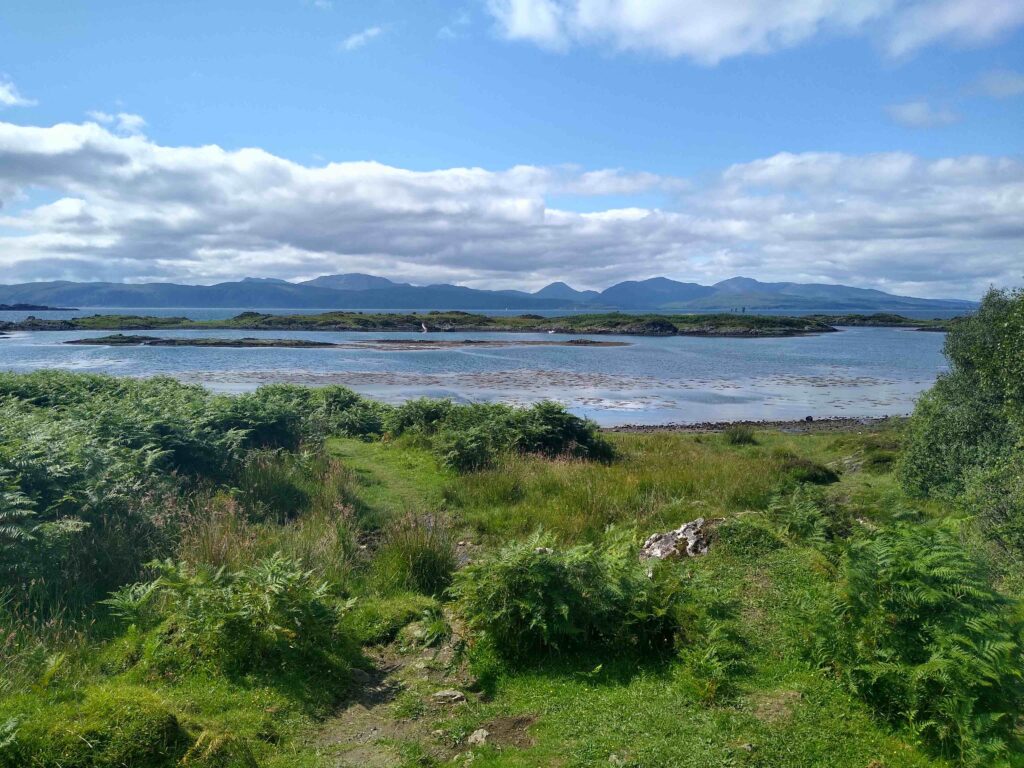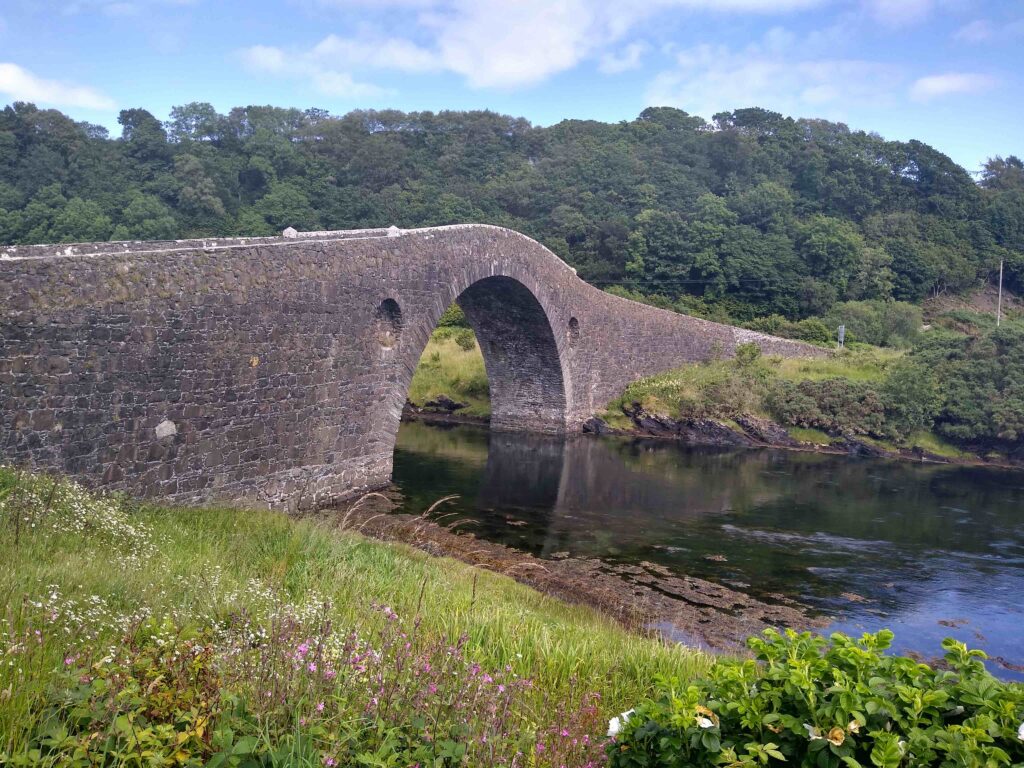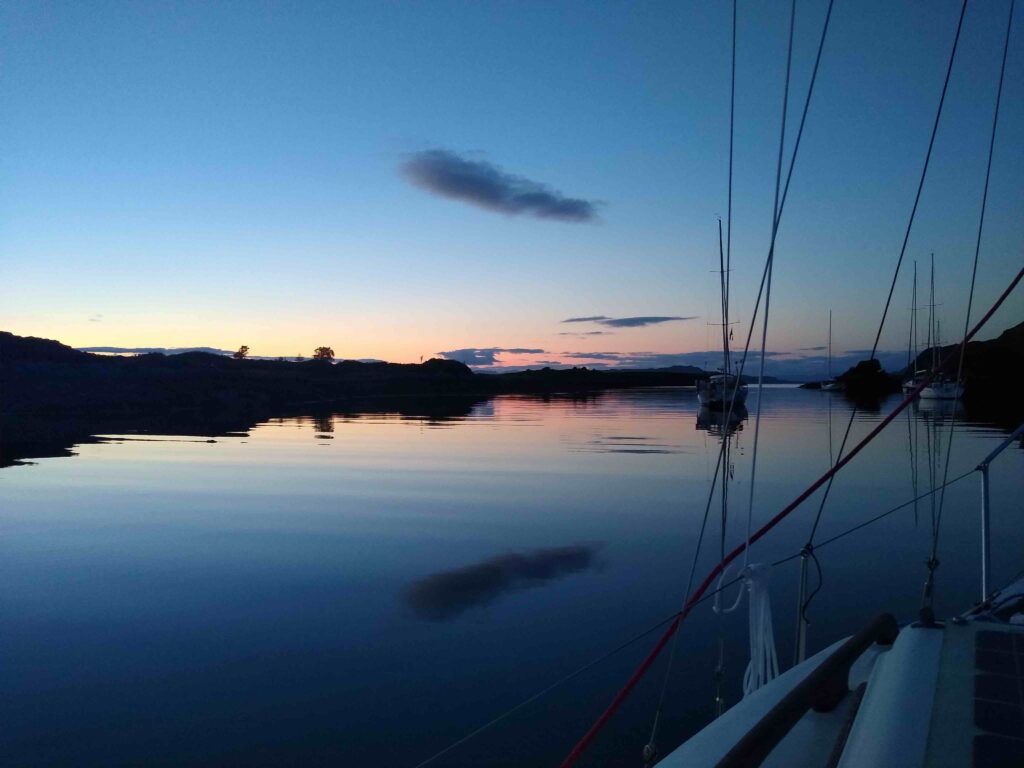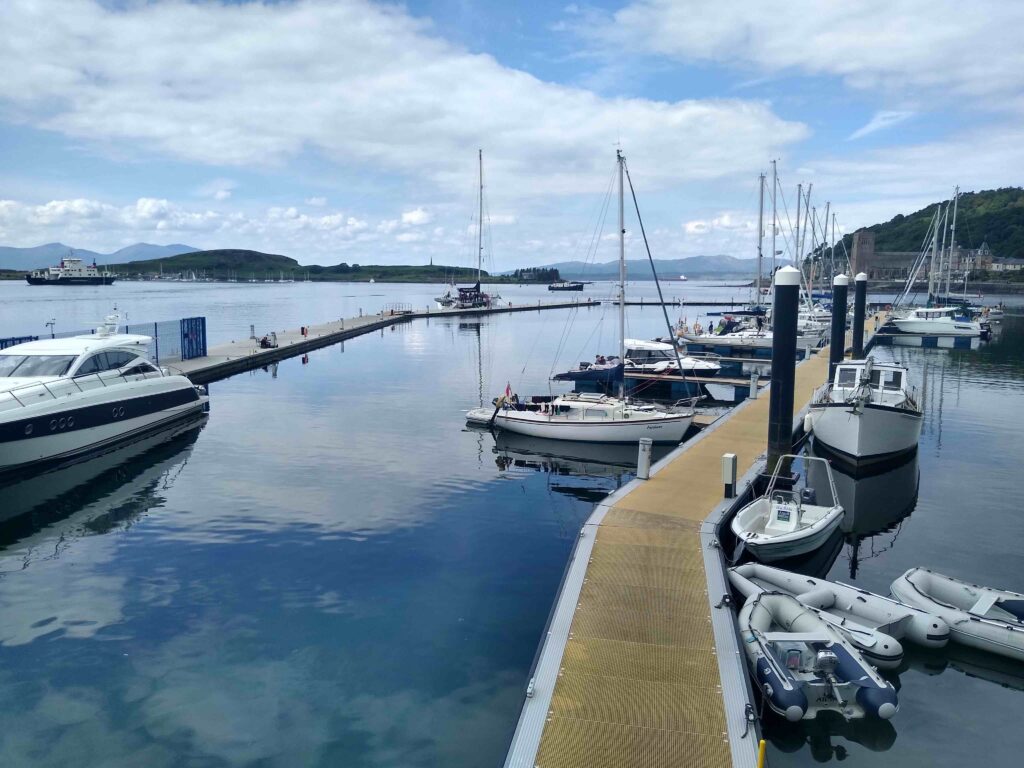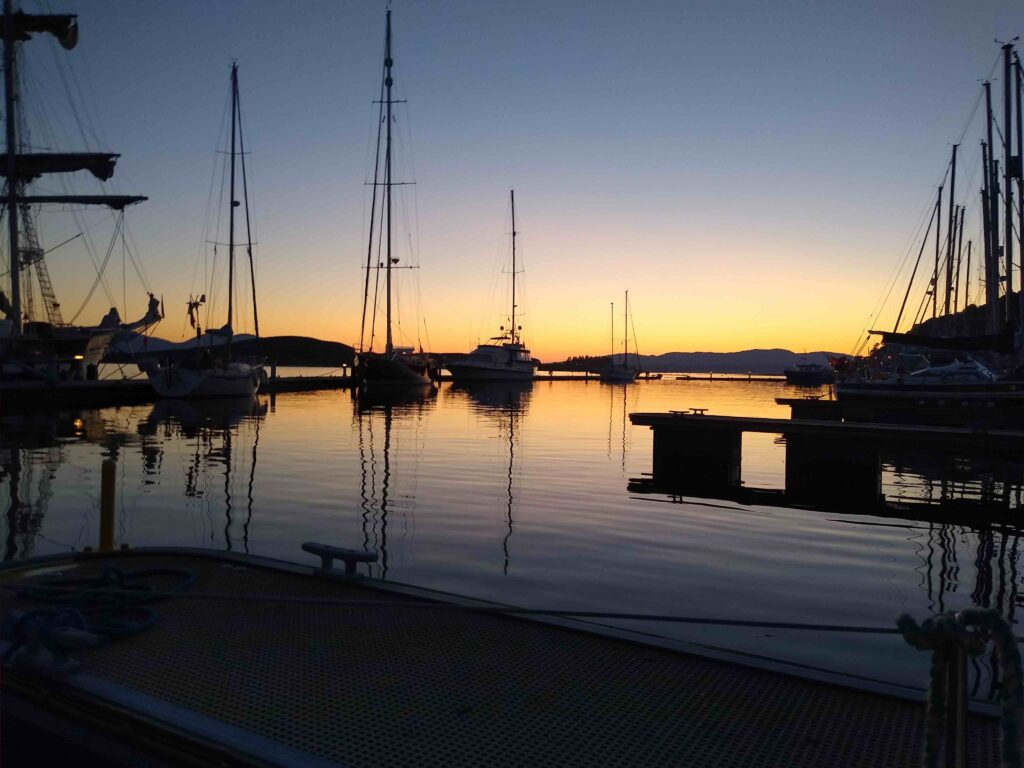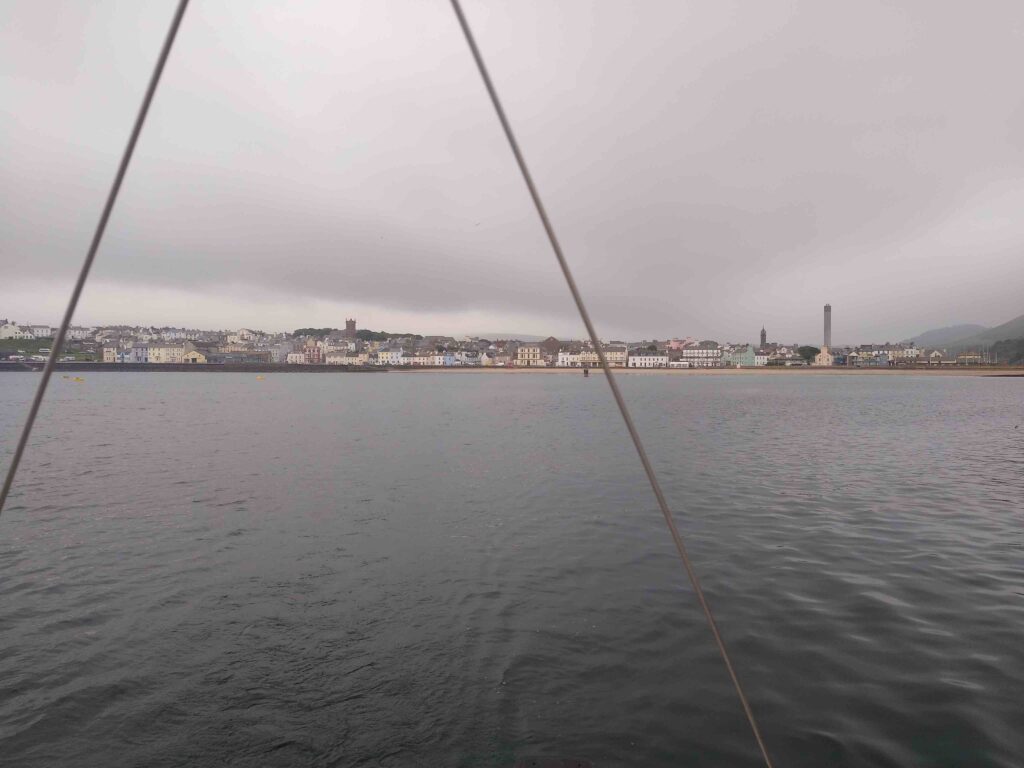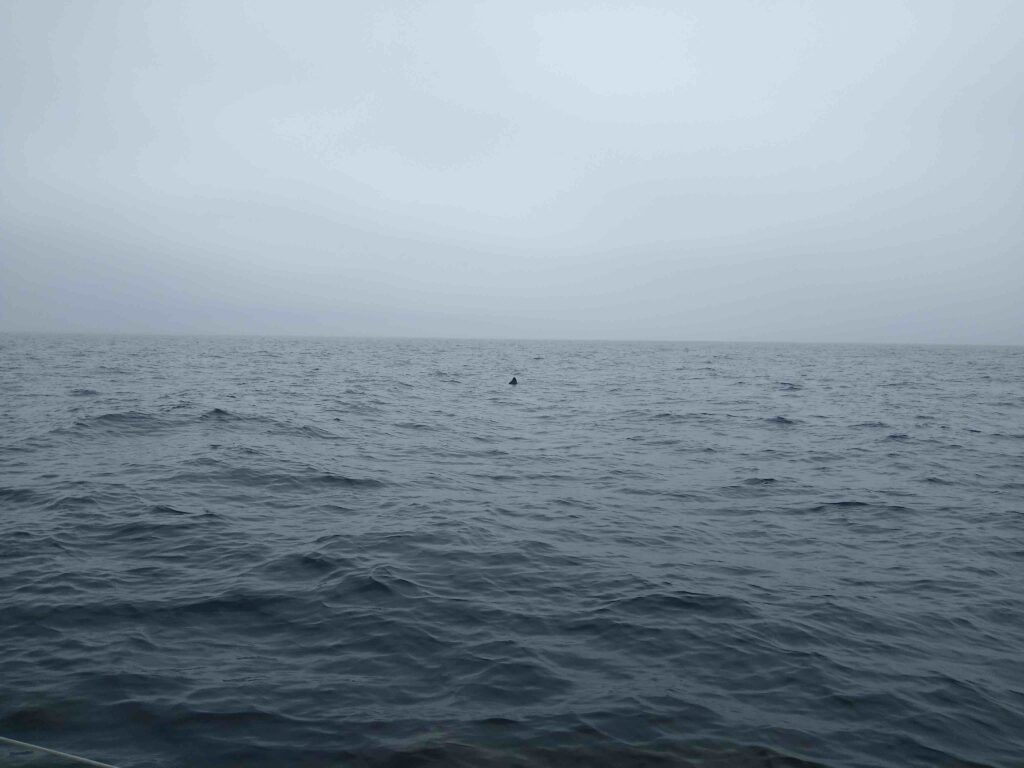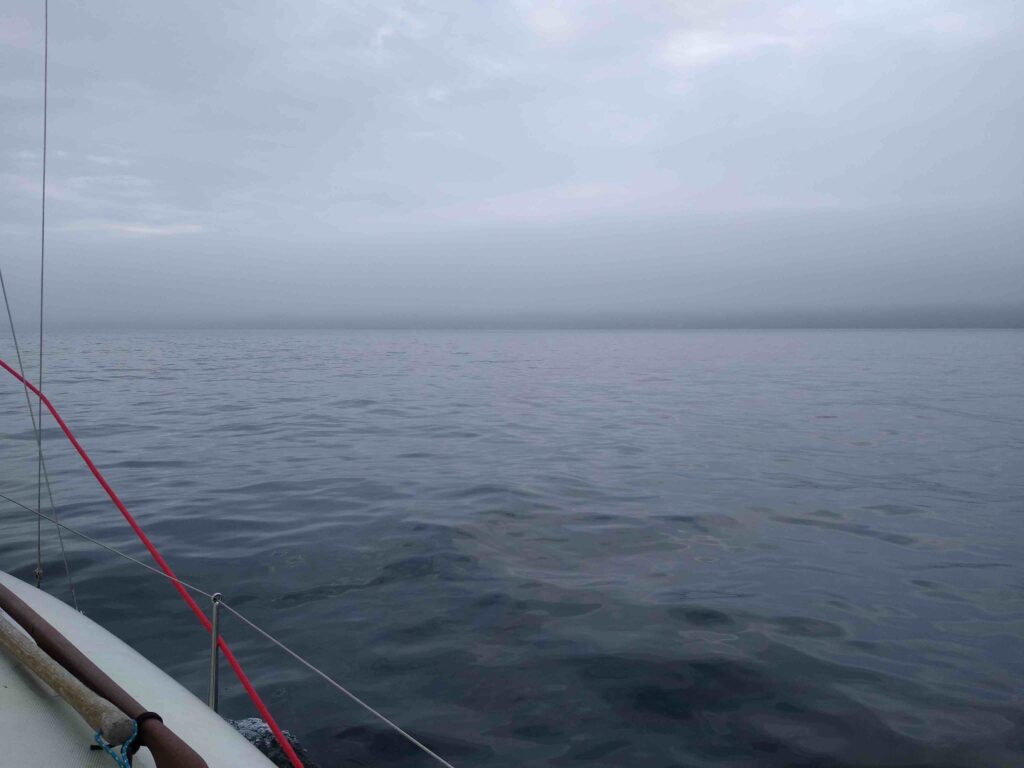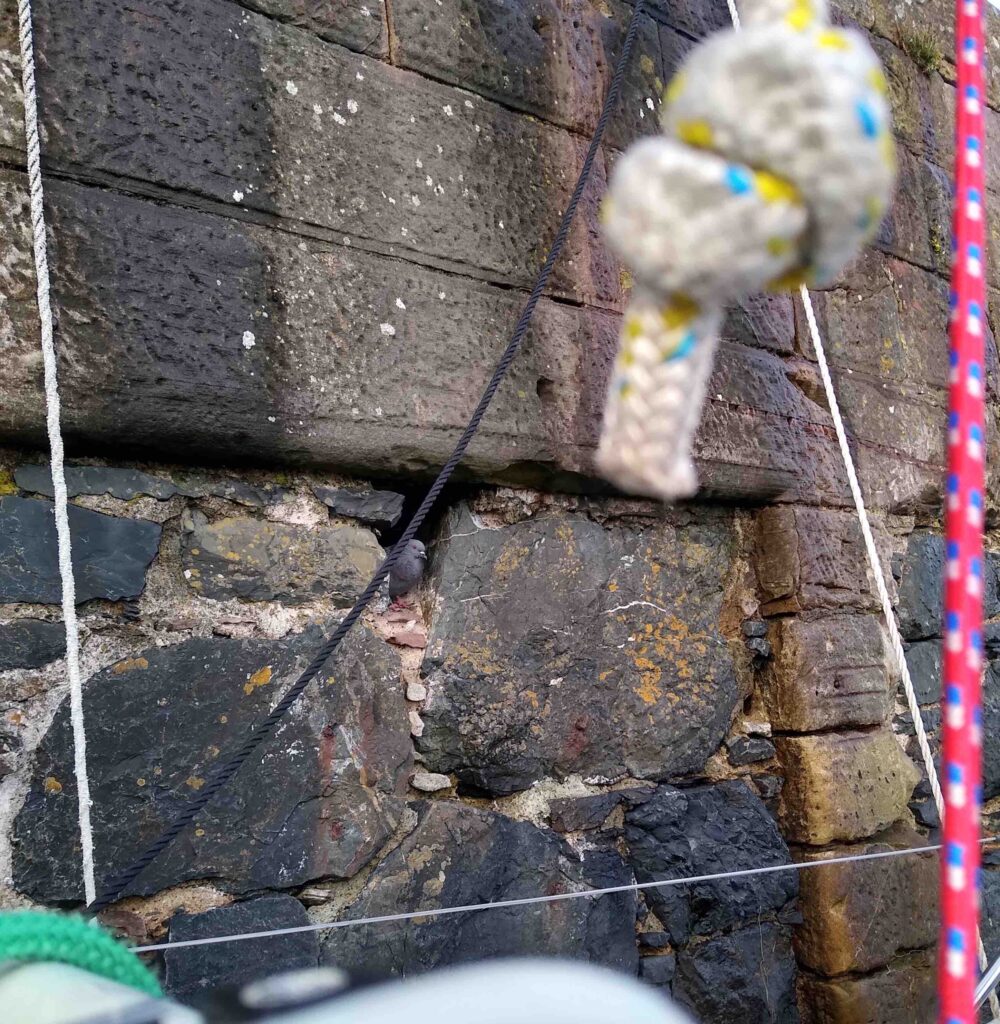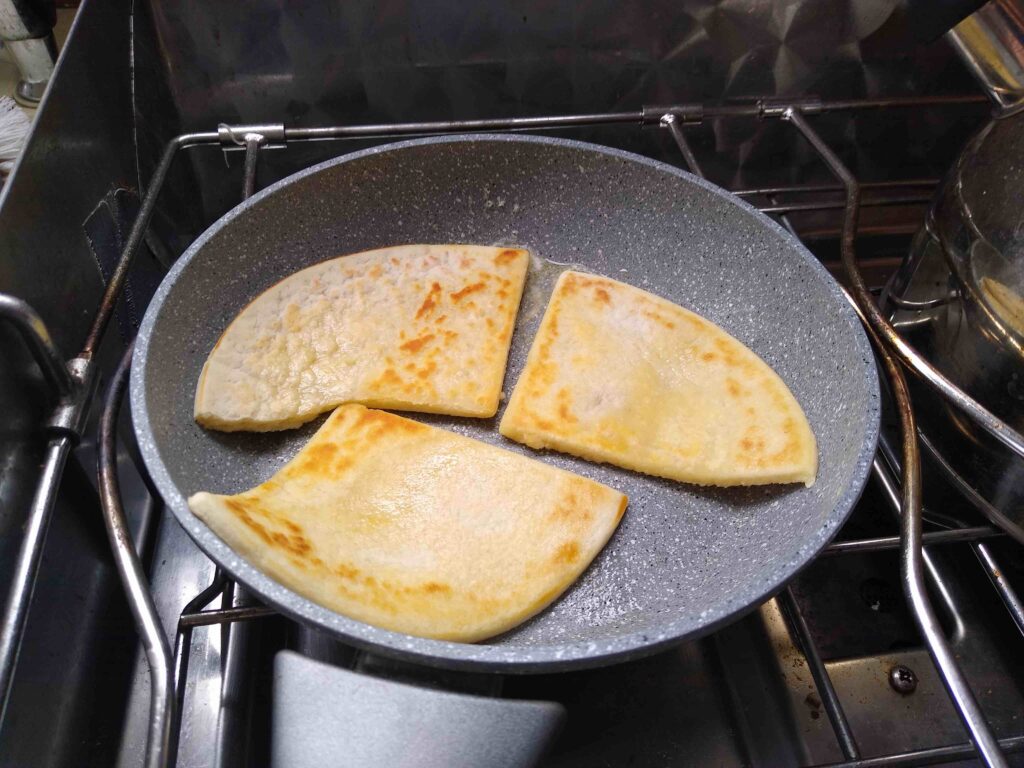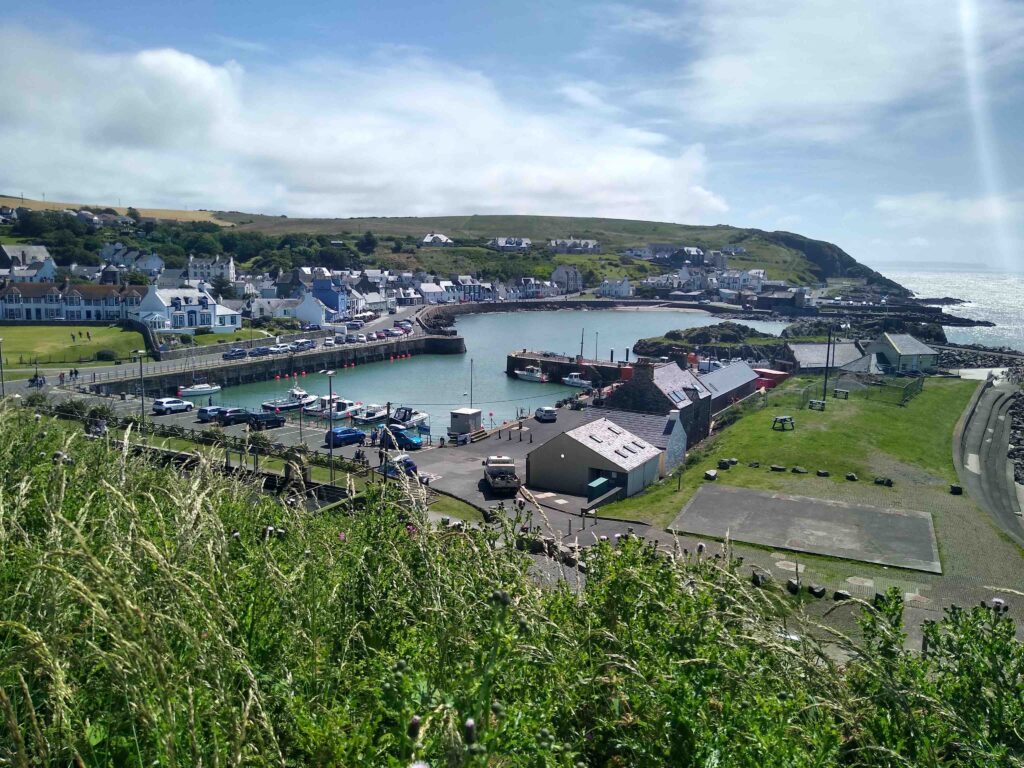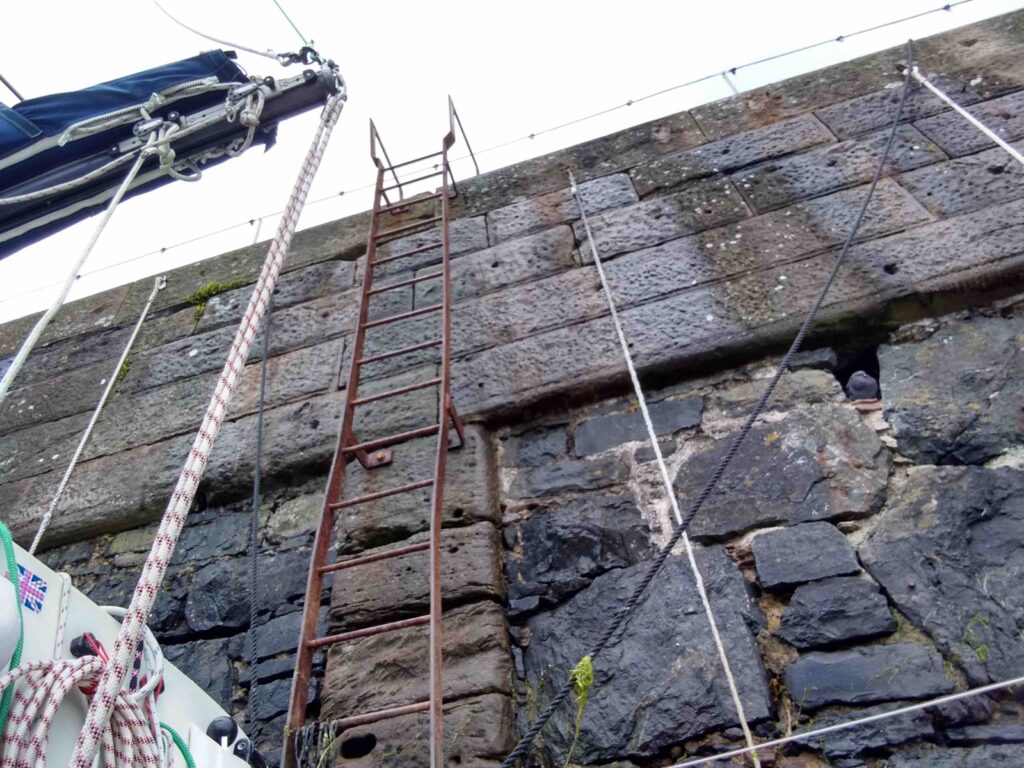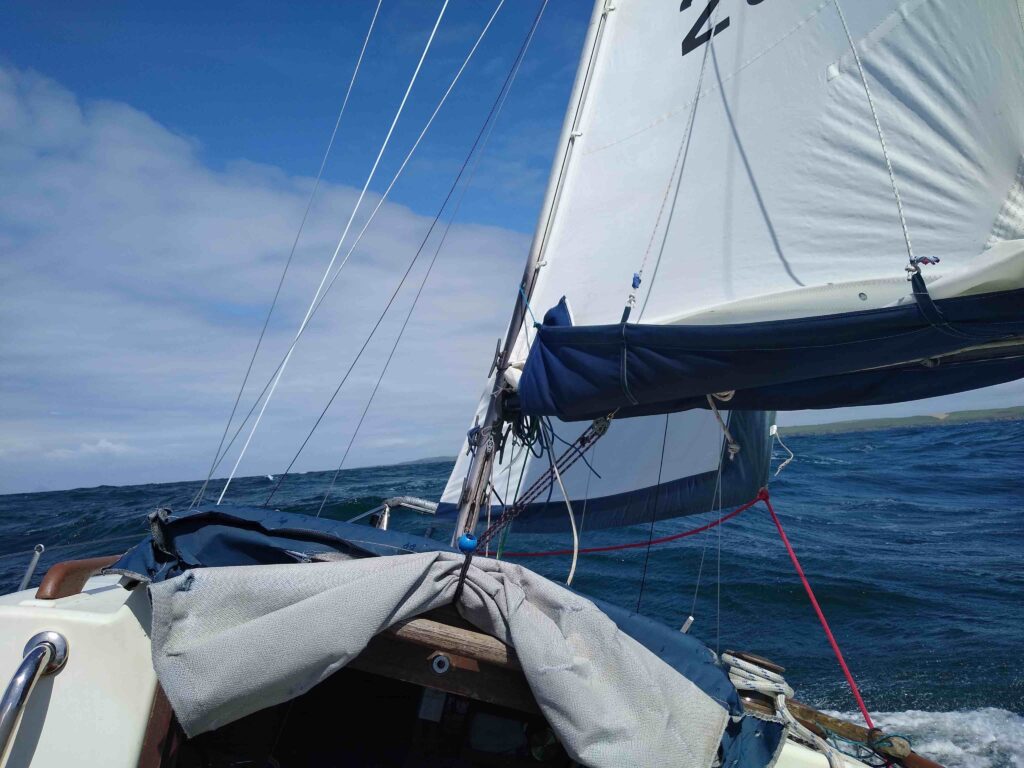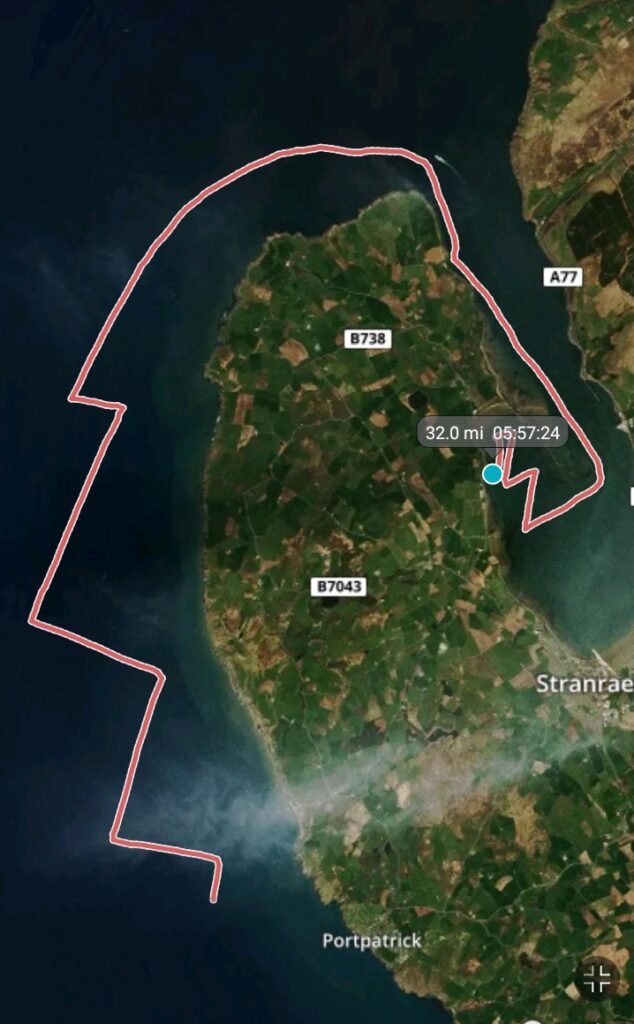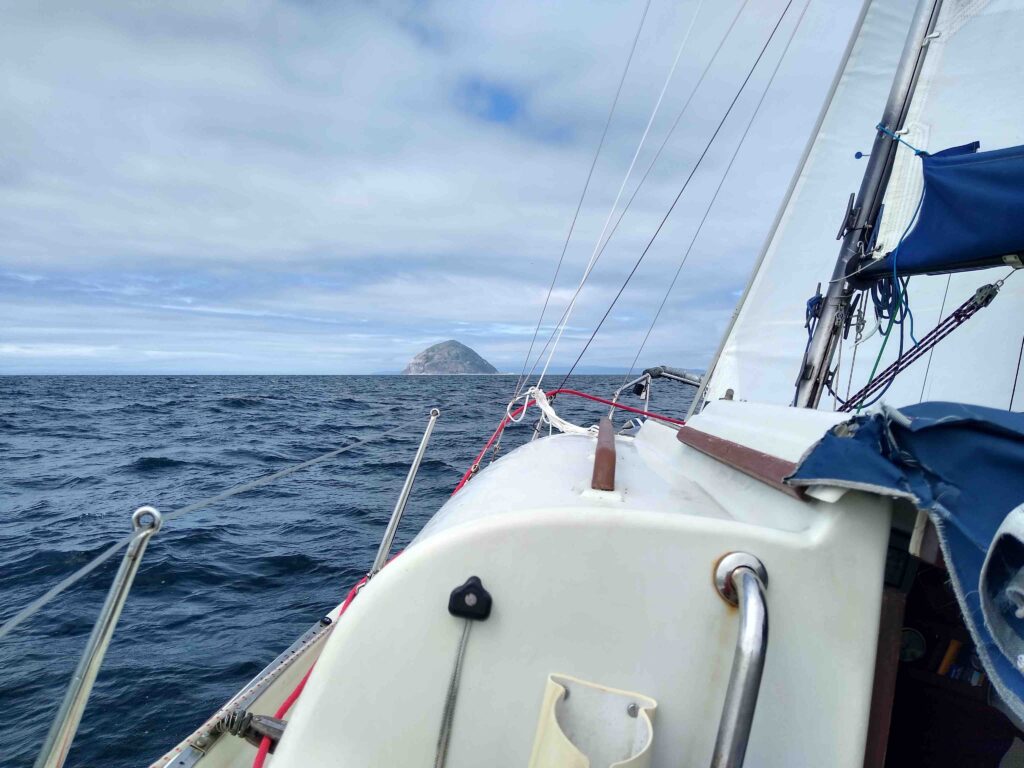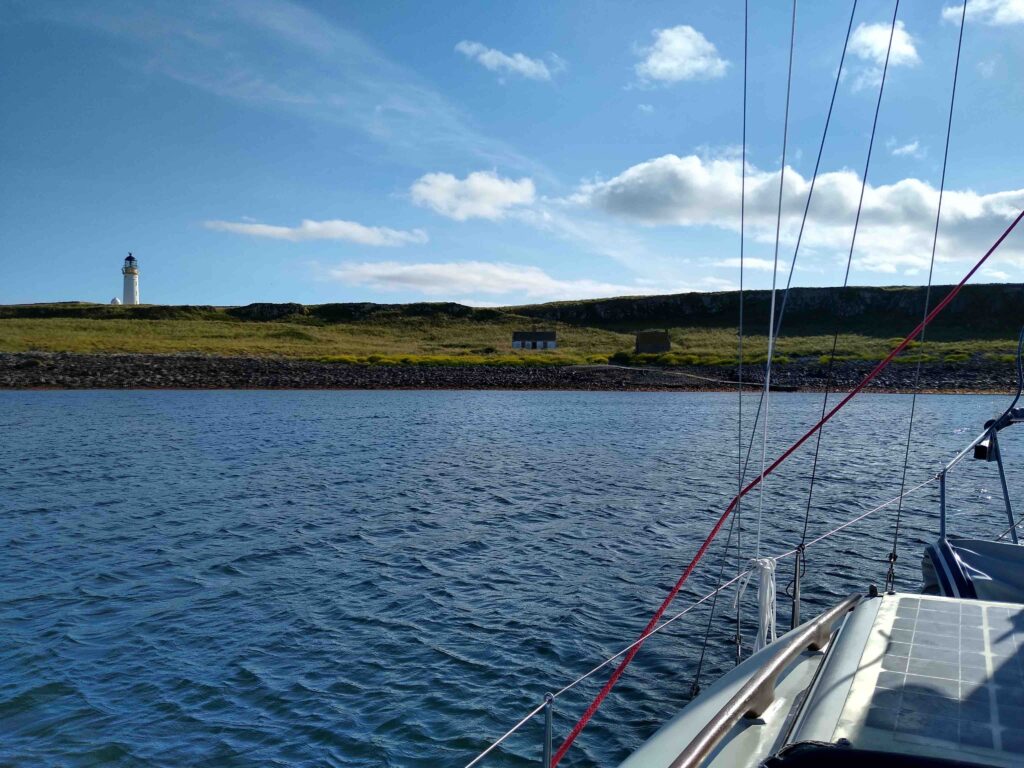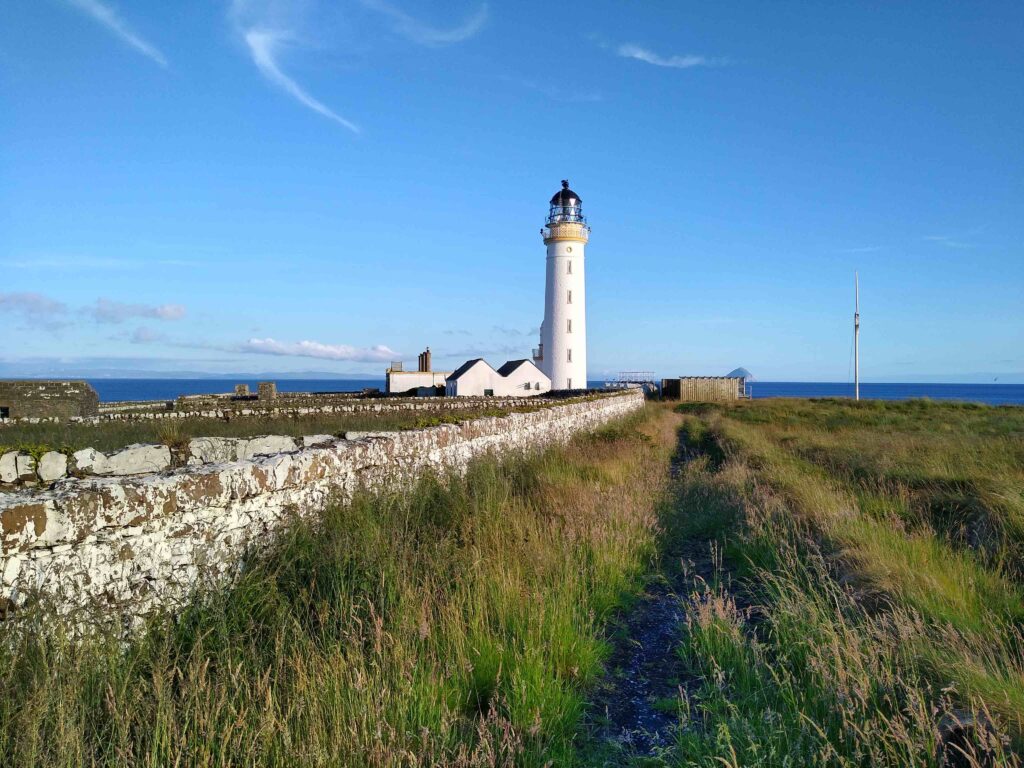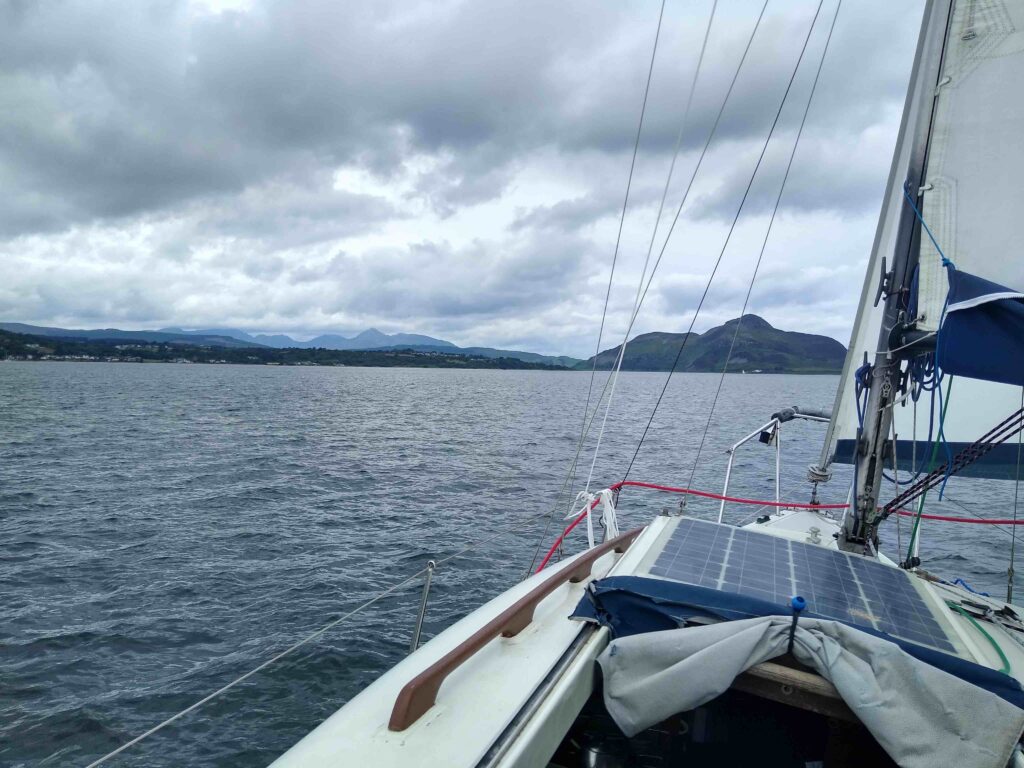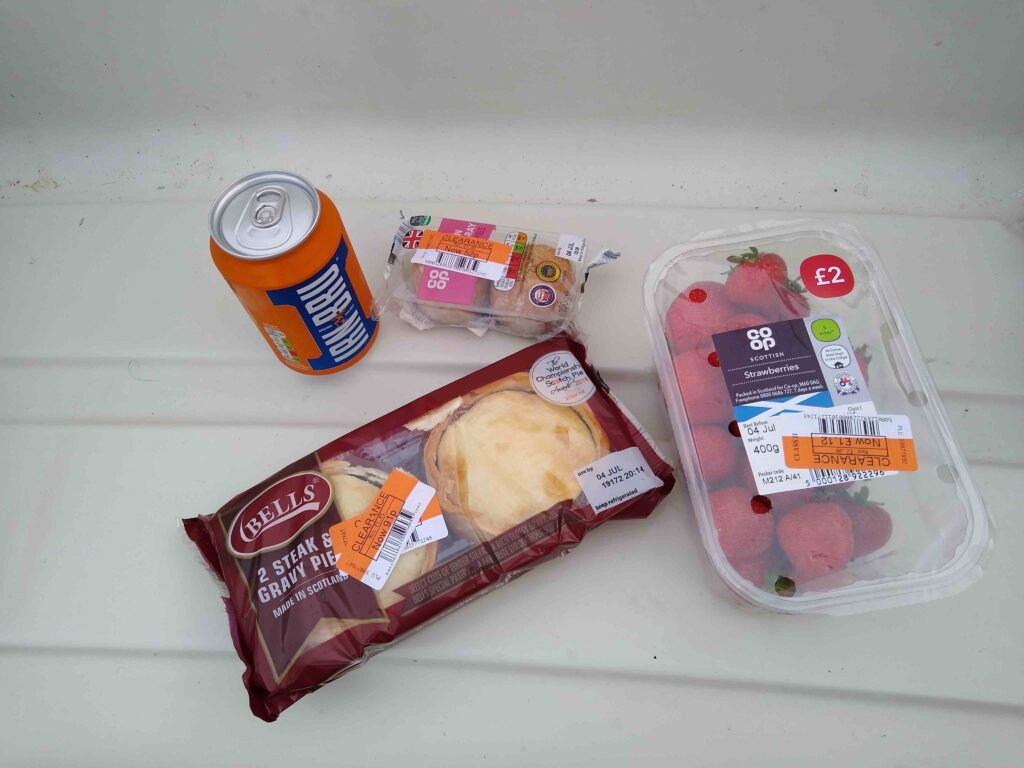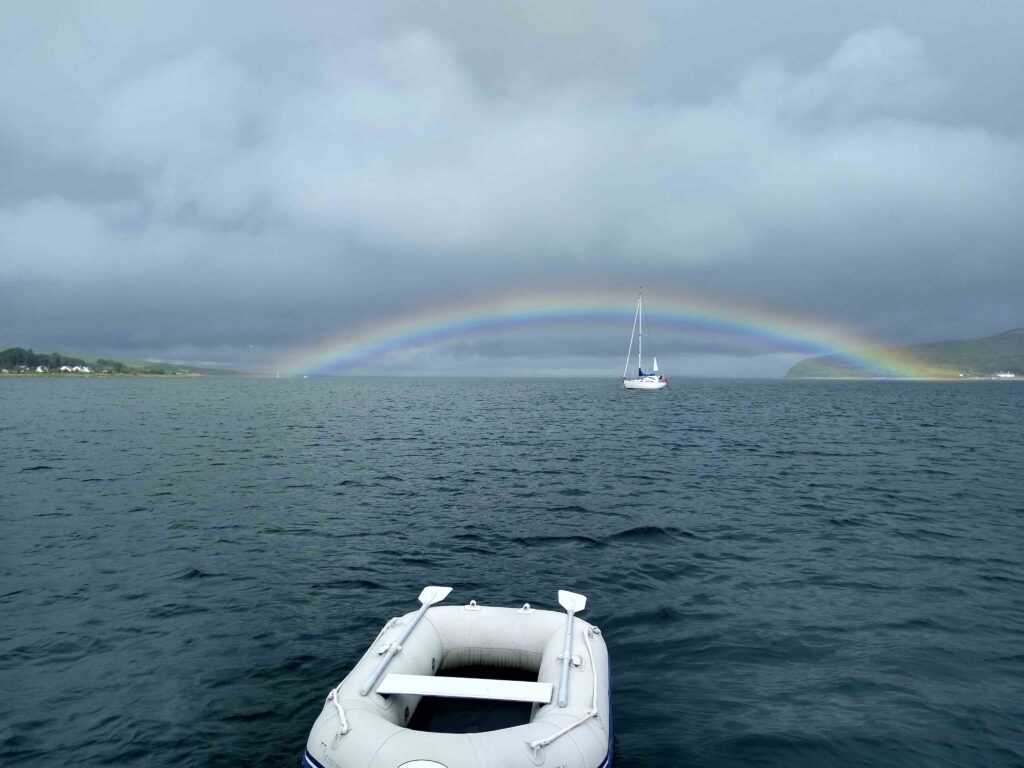After spending the first night at Wexford alongside peacefully (which I was dubious about on account of the vigorous partying I witnessed on arrival), the following evening I made acquaintances with some of the local youths who quizzed me about many things, including the Union Jack on the Red Ensign. Our discourse covered a range of topics, from how long it took me to get there to how much the boat cost, back to how long it took me to get there. They seemed innocuous enough but as some other tweens arrived I watched as they descended into pack animal behaviour before my very eyes, and they bounded off to the next object of interest. I suspected they might return after nightfall in search of mischief (earlier that afternoon I had returned to the boat to find unidentified brown liquid splattered over it, either the work of a seagull or a delinquent with a milkshake, but it washed off easily enough). With that in mind, I cast off and dropped anchor in the channel. In any account, I had to get away sharpish in the morning and this saved time putting all the fenders, fender boards and warps away.
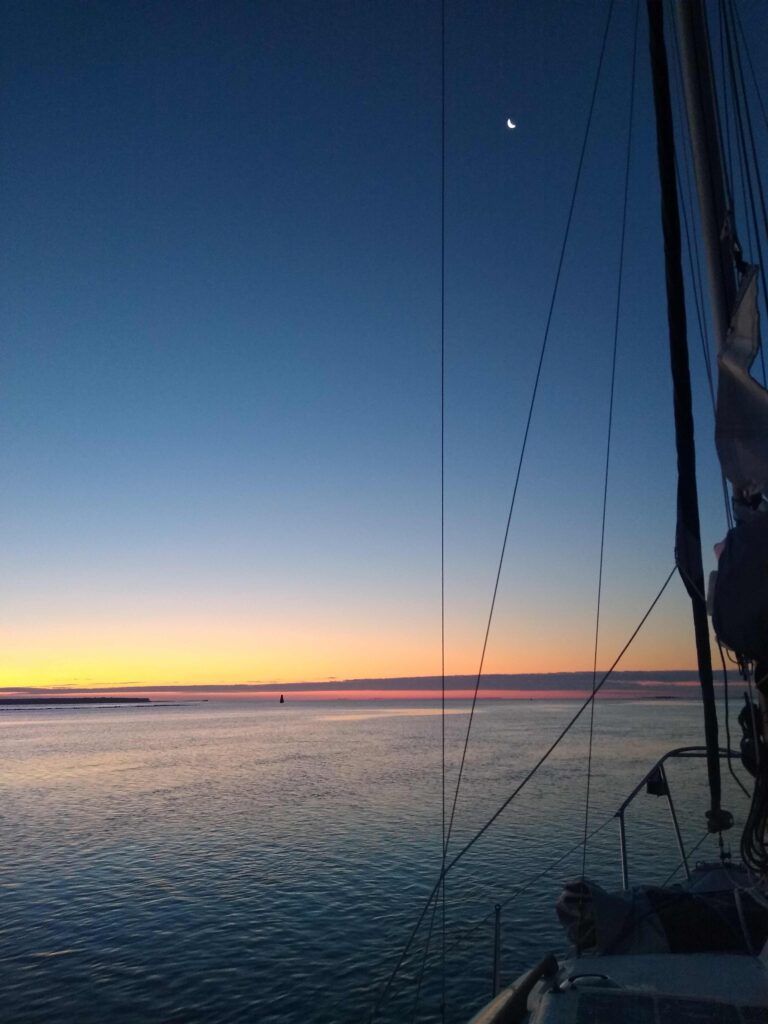
I had to make the crossing to Milford Haven on this particular day to due to a window in the weather, and as usual to avoid being caught out by winds too strong I ended up caught out by winds too light. Not far off the coast of Ireland I was becalmed and so once again I had to pass the hours accompanied by the steady drone of the engine.
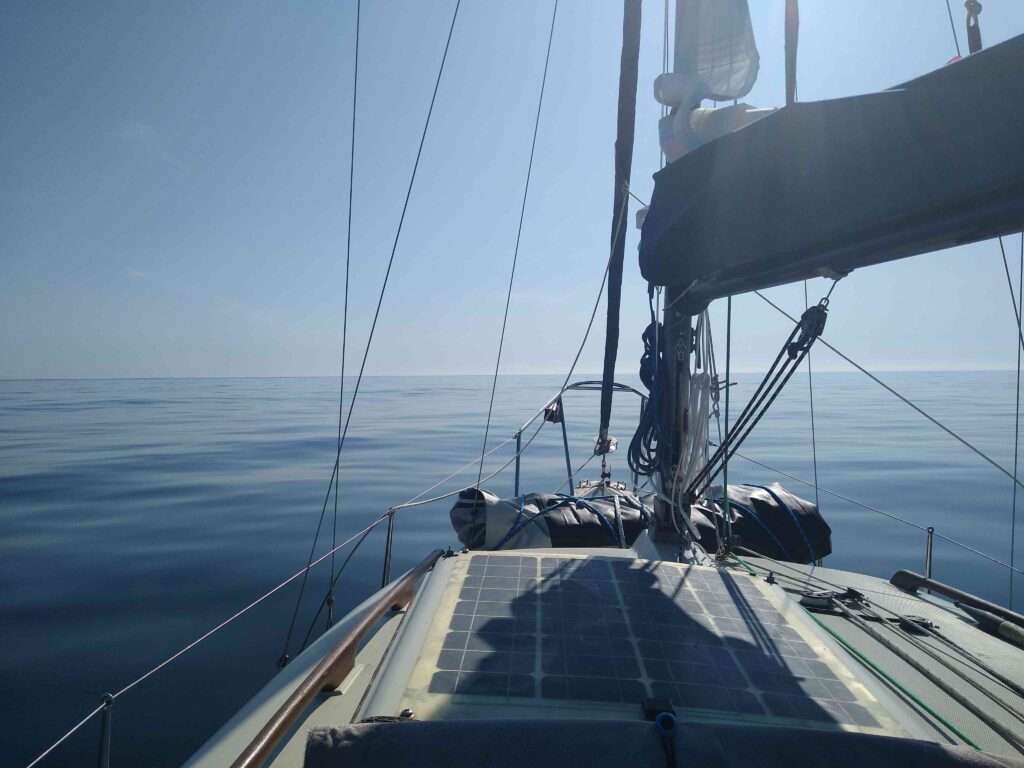
About halfway however the wind picked up a little and I was able to get the cruising chute up and started making pretty good progress until the tide turned against me. I couldn’t really work the tides on this trip as I had to make the crossing on this day, and it was going to be an all-day affair, so I’d have to just cope with whatever the tide was doing.
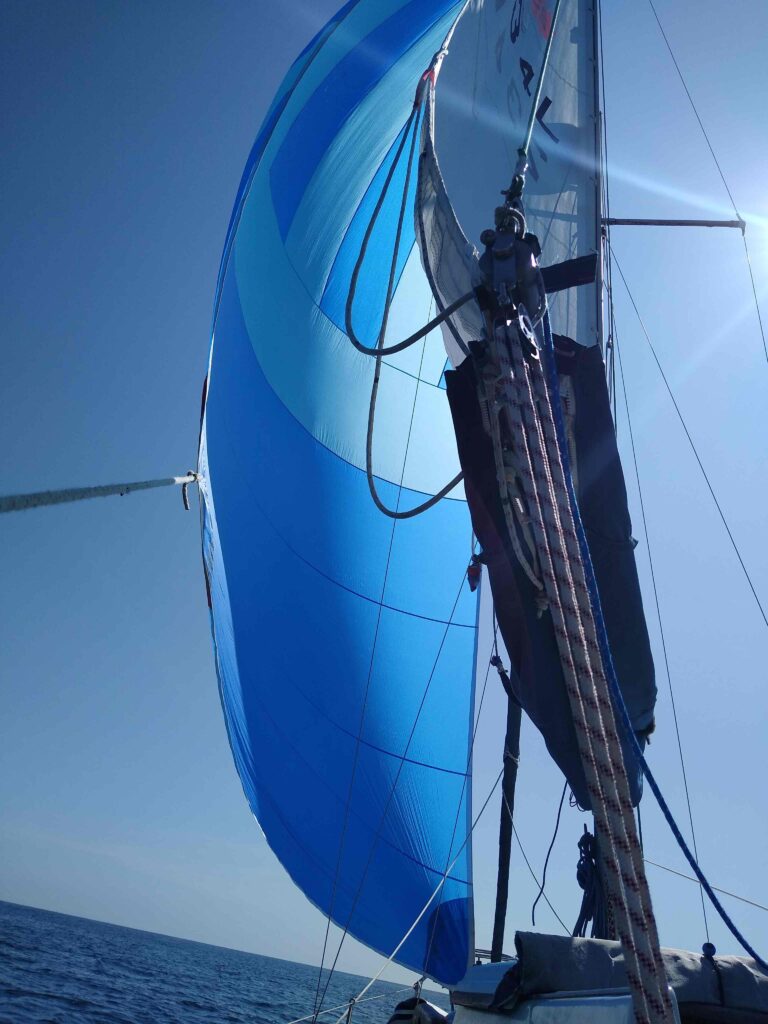
I had hoped to make it all the way to Milford Haven, but as the sun was setting I decided to stop short and go back into the south haven of Skomer Island. It was dark when I arrived, and I had a fairly turbulent night in here. Most of the seabirds had gone, although there were some seals having a bit of a dust up. In the morning I got round to Milford Haven and anchored in the Dale anchorage. The winds were not conducive for crossing the Bristol Channel that day. I was watching the forecast like a hawk as I had to make as much progress towards Plymouth as I could, and there were several days of strong winds coming soon. In fact, if I didn’t leave before they arrived, I’d probably be stuck in Milford Haven for nearly a whole week, but then at least anchoring here is free. The forecast for the next day gave very light winds until late afternoon, then blowing steady until the morning when the strong stuff was arriving. I had hoped to leave first thing to cross the channel, but the wind was just too light and I didn’t want to go all the way up to the marina for diesel only to burn it all on the crossing. So I waited until the late afternoon before setting off for another night sail.
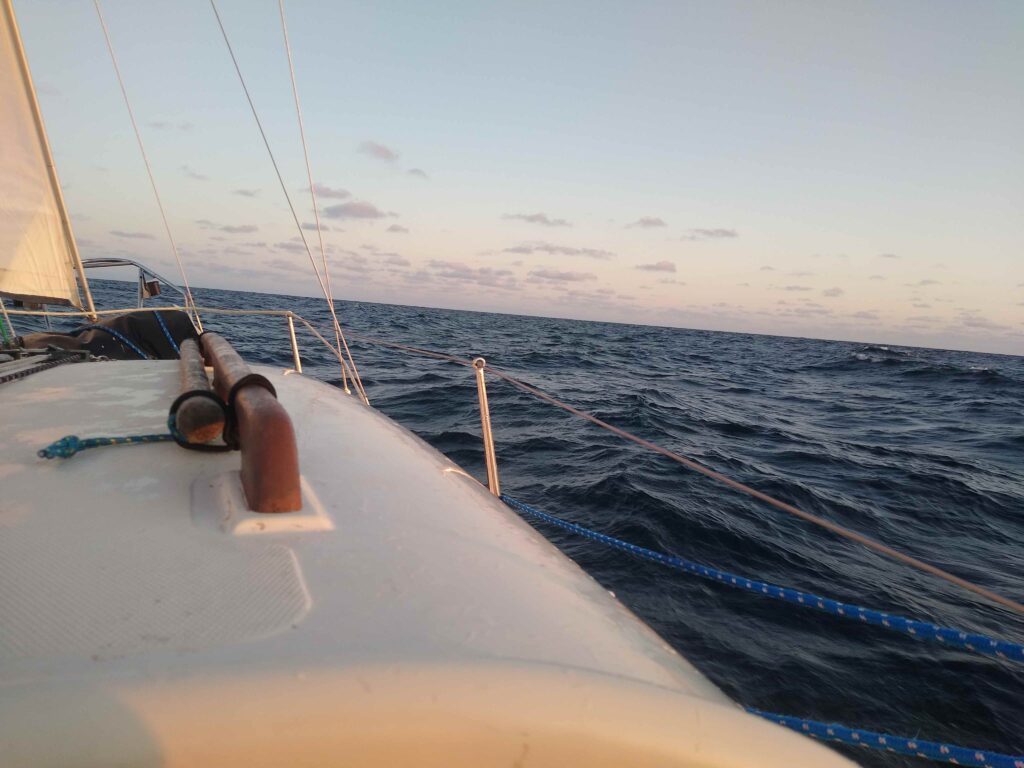
It was pretty rough, and I was sceptical about how much I’d enjoy this crossing. I felt seasick, which was the first time this happened other than the first day out of Plymouth. I popped a couple of Stugeron. While inside the cabin at one point I was somehow flung into one of the side windows and later flew into the radio, hitting my lower back. Impressive considering it’s mounted on the ceiling. I was also having a hard time setting the tiller-pilot to keep on course without yawing all over the place, but at least there was plenty of wind. It got dark quickly, and the passing of time seemed to really slow down. All passages seem to take a long time, but this one was going exceptionally slowly, regardless of my speed. When I had night sailed to Dublin, I didn’t sleep, partly because I was still close to shore and there was lots of traffic, partly because it was my first time night sailing and it was unfamiliar, and mostly because I couldn’t have slept if I had tried. This time however, I was out of sight of land and there was no traffic on the horizon. The boat seemed to be steering herself ok and I was getting cold in the cockpit so I put some cushions on the cabin sole and lay down. It was remarkable how much better the motion was down here, with my head low, near the centre of the boat. Even though the boat was bucking around it didn’t feel like it. From my position I could look back out of the companionway, it was a clear night so I could see the Plough constellation and I could see the boat was staying on course, pretty cool! I set an alarm on my phone for 20 minutes and tried to get some shut-eye. Twenty very long minutes later it went off and I was still wide awake. I hauled myself up and scanned the horizon: nothing. Back down, I set the alarm again. This time, the minutes passed a little quicker. Again, there was nothing on the horizon. Although it was pitch black outside, something in the water caught my eye. It passed by and I dismissed it as the foam left behind after a breaking wave, but I saw it again a few minutes later. It turned out to be a dolphin swimming alongside the boat, or rather it was the phosphorescent wake it left behind as it shot through the water. It was really trippy; it didn’t sparkle like I expected, it looked more like the contrail left behind a jet. There were quite a few dolphins about and it was amazing seeing the bright trails left behind them as they zoomed around. They stayed with me all night and I think I could even hear them through the hull. And so on it went, lying down for 20 minutes at a time, then getting up to scan the horizon all around. I gradually got more tired and ended up in a permanent state of half-sleep misery. It made it hard to focus my bleary eyes on the horizon, but made a huge difference to the passage of time. The rest of the night passed as quickly as that first hour of darkness and before I knew it, dawn was breaking.
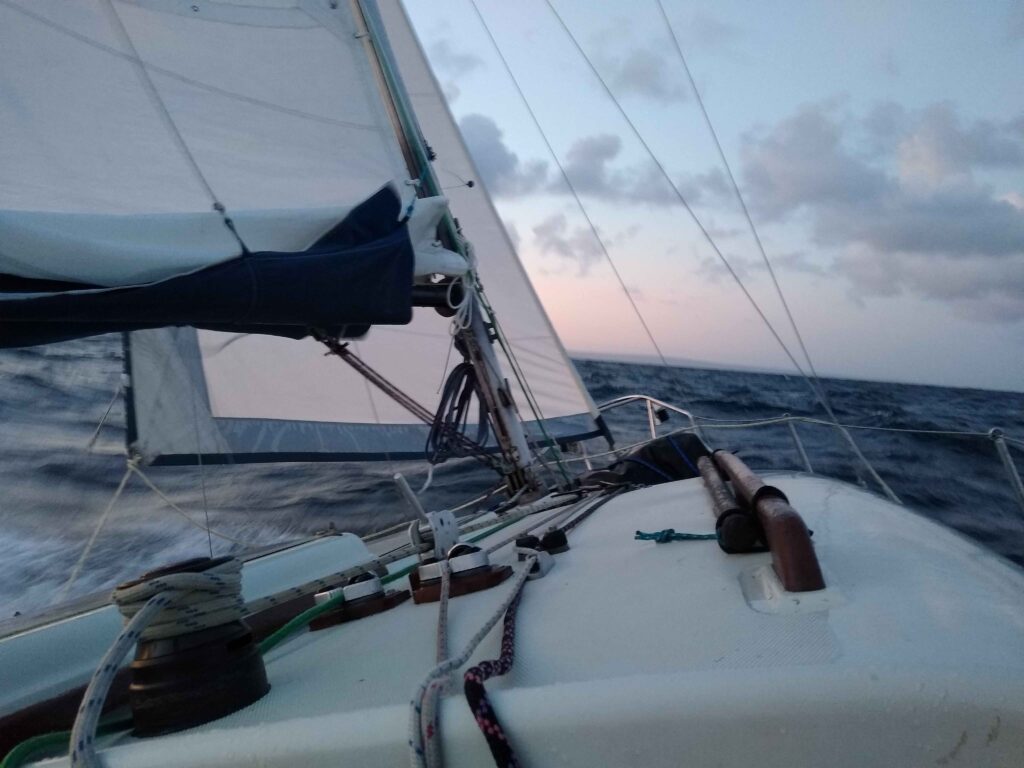
Although the groggy half-sleep had helped the night pass quickly, it was still pretty gruelling and I just wanted the journey to end. It had been really tempting at times to just turn off the alarm and fall fully asleep. This “20 minute sleep” schedule is how single handers cross oceans, but it is definitely not for me. During the night the wind had backed to the south west and I had adjusted the sails accordingly but it meant I was now on a close reach, and my track had ended up about 10 miles to leeward of my destination near Padstow. The wind was blowing much harder with the break of dawn and I put a reef in. I was really annoyed with myself for letting my track veer so far off course. I had anticipated that the ebb tide would push me back on course, but I think the boat was making too much leeway. I should have reefed earlier and probably also erred on the windward side. In the end it took me an extra 3 hours to claw my way upwind and eventually I just lowered the sails and used the engine.
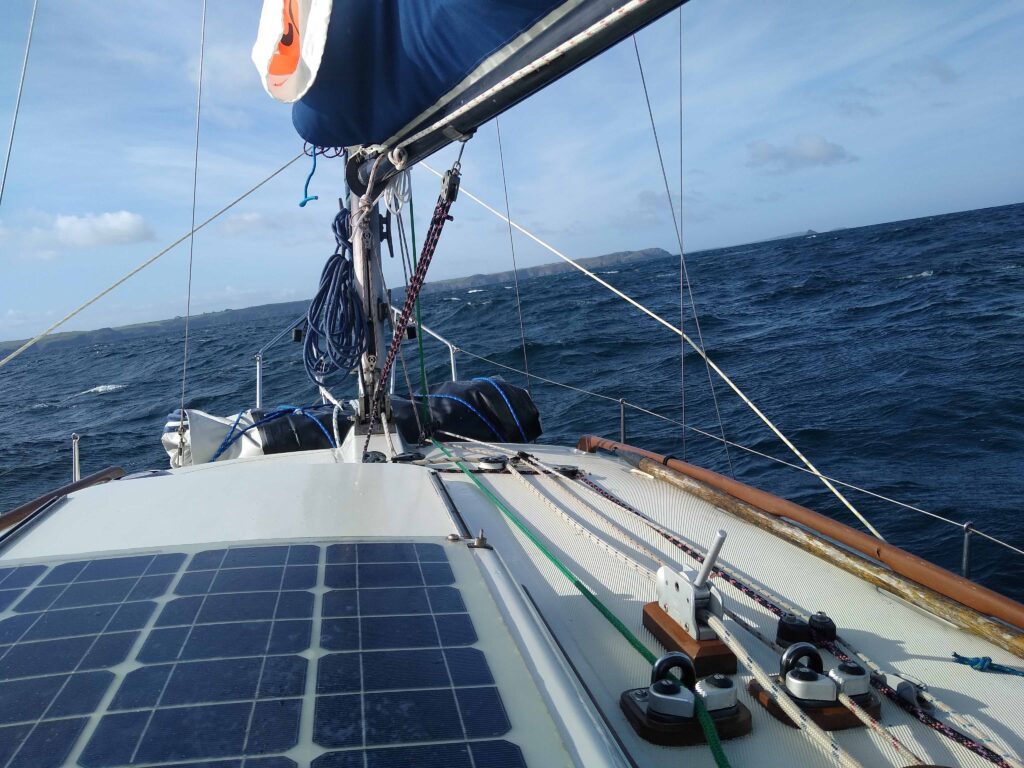
Eventually I made it into the lee of the cliffs at Port Quin Bay, and it was quite a relief. In this little spot, it was actually quite a nice day, the sun was shining, the swell was much reduced and the sea was a brilliant colour. I thought about a swim but I was knackered so just went to sleep. When I woke the sky was grey and the swell was coming round the corner. If I left immediately I could get into Padstow Harbour, but I decided to stay the night here. Turned out to be quite uncomfortable and I basically just had to lie there and wait until the next tide to get into Padstow. This was early the following morning and I had to wait until there was enough light as I didn’t want to motor into any of the many, many lobster pots around here. The swell was enormous and the short trip around the Mouls and into the Camel Estuary was arduous. I couldn’t help but think of the Maria Assumpta, a tall ship which had been wrecked here in the 90s. Seeing the size of the waves breaking on the cliffs, I was dubious about how safe the Doom Bar would be to cross, but it turned out to be fine and it was a relief to get into the buoyed channel.
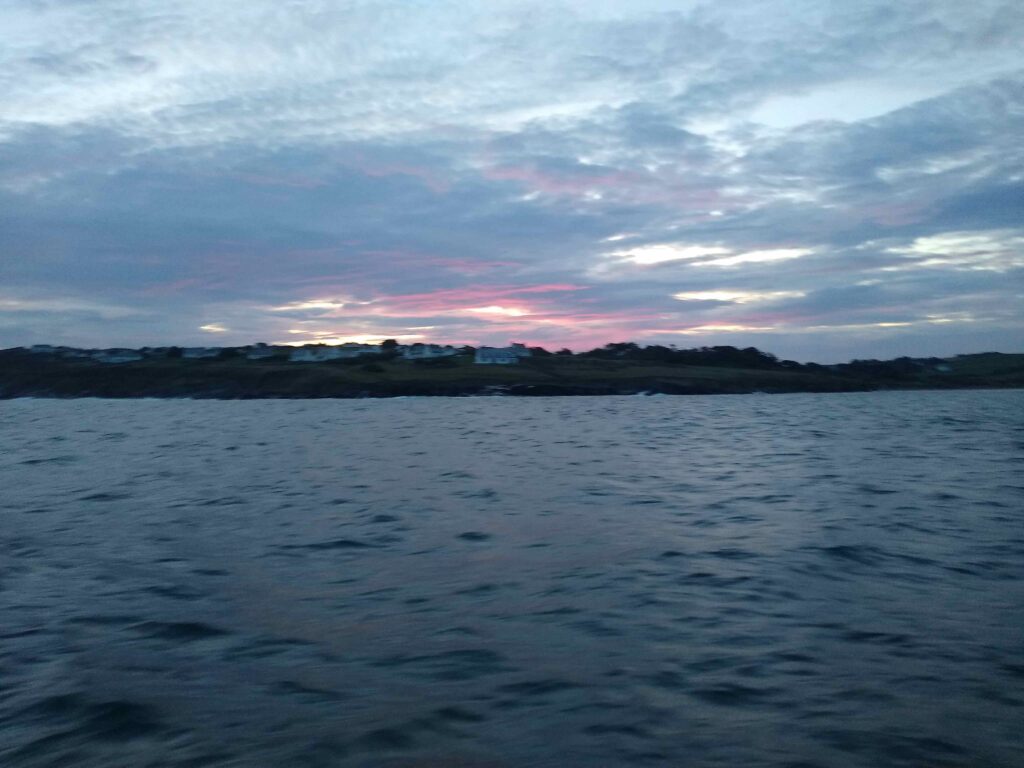
Arriving at Padstow, the harbourmaster was apparently surprised to see me as there were some fishing boats already in harbour that were sheltering from the weather. I was very glad to join them. I hadn’t really wanted to come here again; I was hoping to not revisit anywhere on the return journey, but so far I had been to every place already. Ideally I would have gone into Clovelly Harbour and then down to St Ives, but these places just aren’t suitable in the current conditions. This whole stretch of coastline is pretty daunting actually, and Padstow is a fantastically welcome haven.
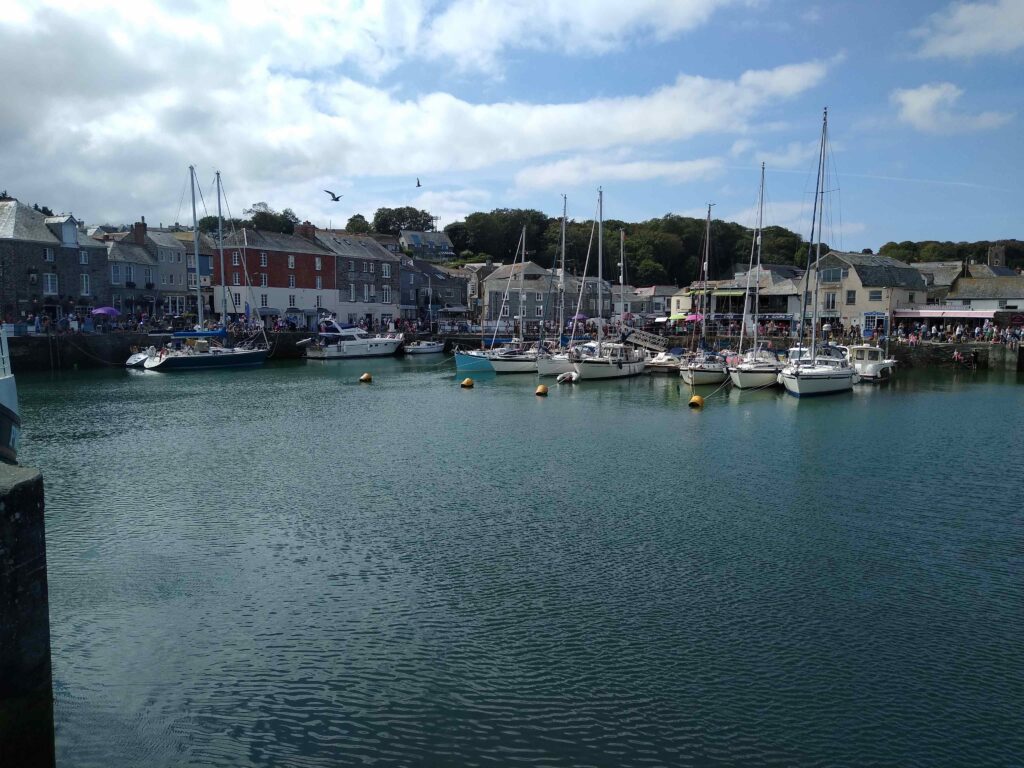
Well, I was chuffed with myself for getting across the channel before the weather hit, but now I was stuck in harbour for a few days. I had been invited to wedding of a friend earlier in the year but unfortunately I already had my grand voyage all planned out so had to decline. But here I was, within reaching distance of the venue and with a day or two to spare. Ness was already driving to the wedding from Plymouth when it dawned on us that I could still attend, so she made a detour to pick me up and off we went. Obviously back in May I hadn’t stocked the boat with any wedding outfits, so I had to scrounge clothes (thanks Tony and Mike!), and while it was an eclectic outfit at least I wasn’t wearing flip flops…
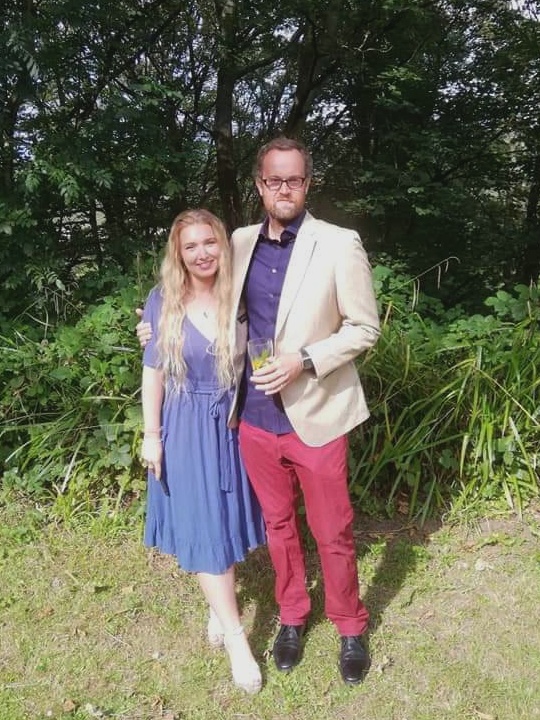
The wedding felt a bit like a false finish to my journey in terms of a return to land life, but I was soon back in Padstow and found the boat just as I left her, albeit sporting a bit more guano splatter. We had an afternoon to look about Padstow, so we got pasties, popped into the lobster hatchery, had ice cream, and went for a walk along the beach.
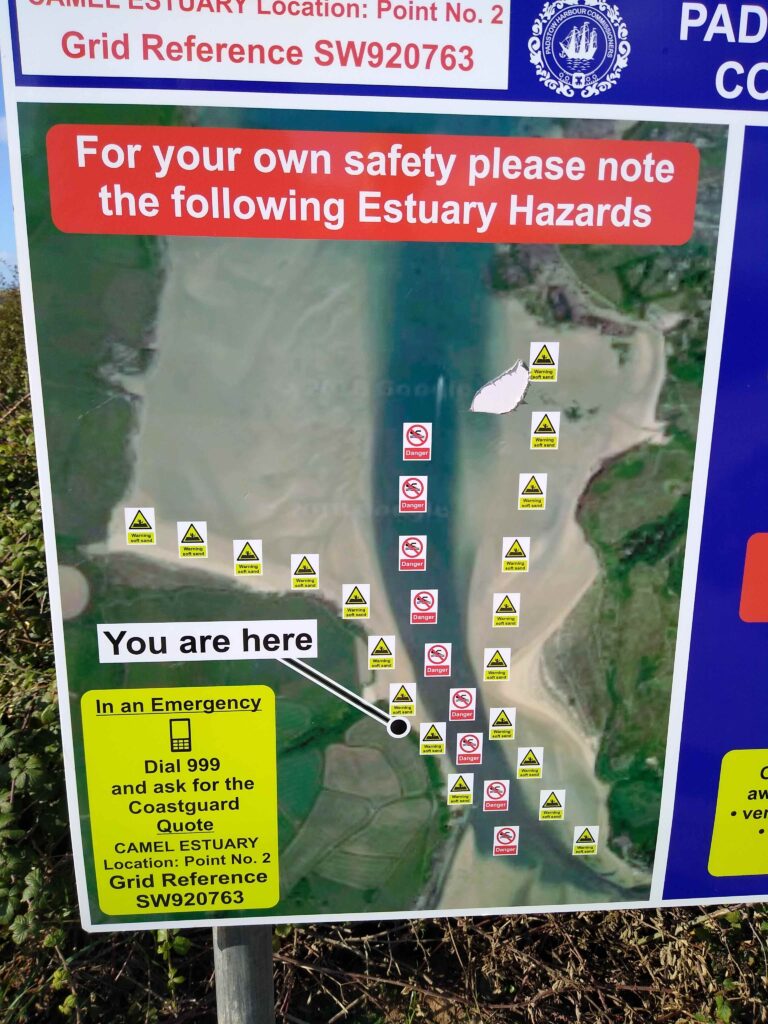
The next big obstacle is getting around Land’s End, which I had hoped to tackle from St Ives but it wasn’t looking like it was on the cards…

